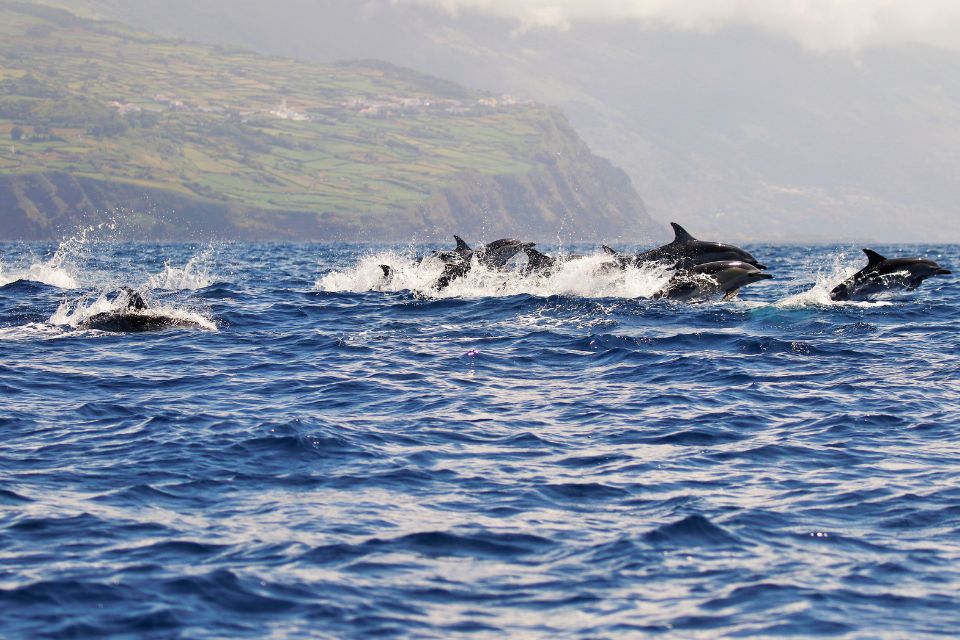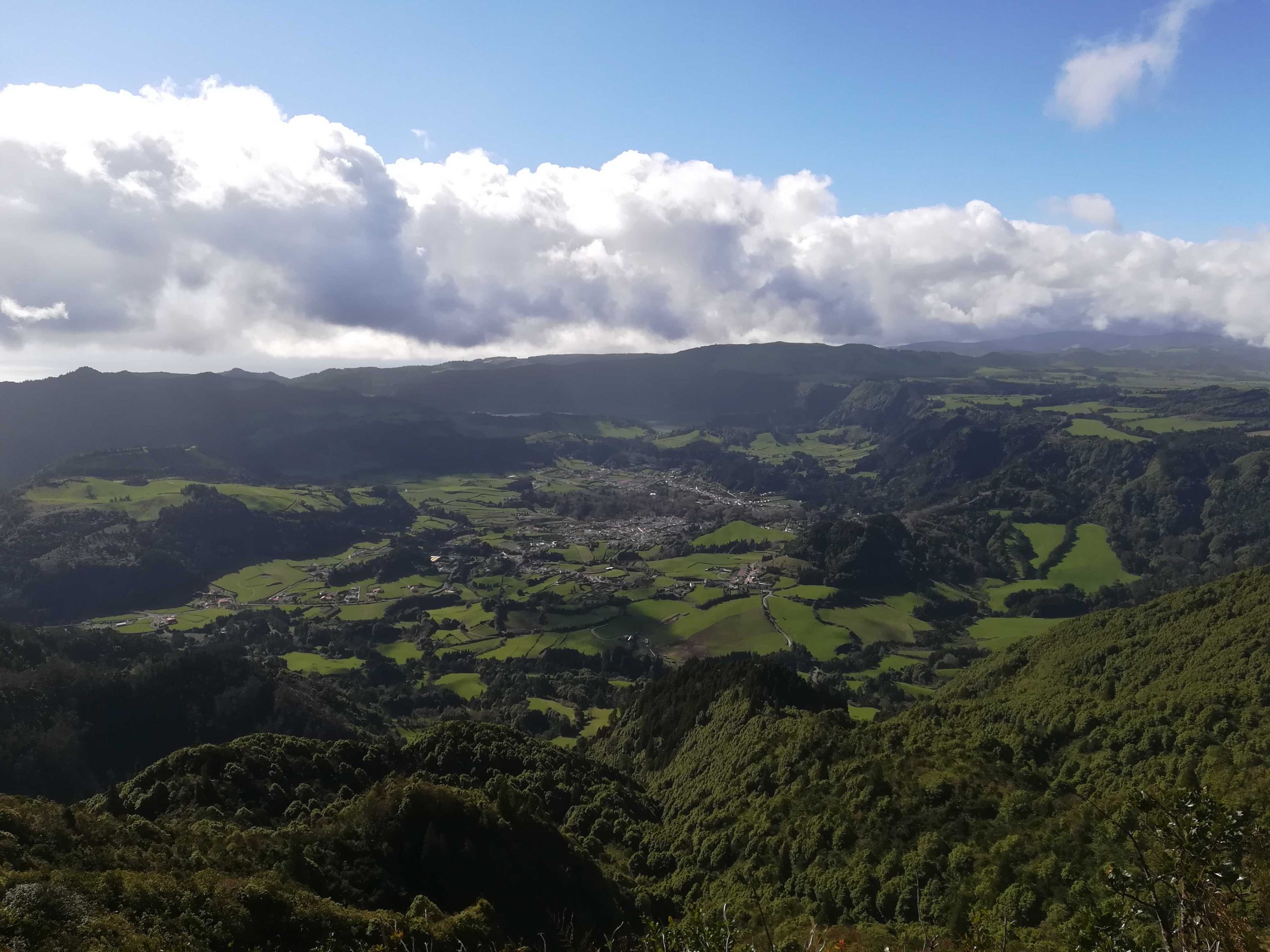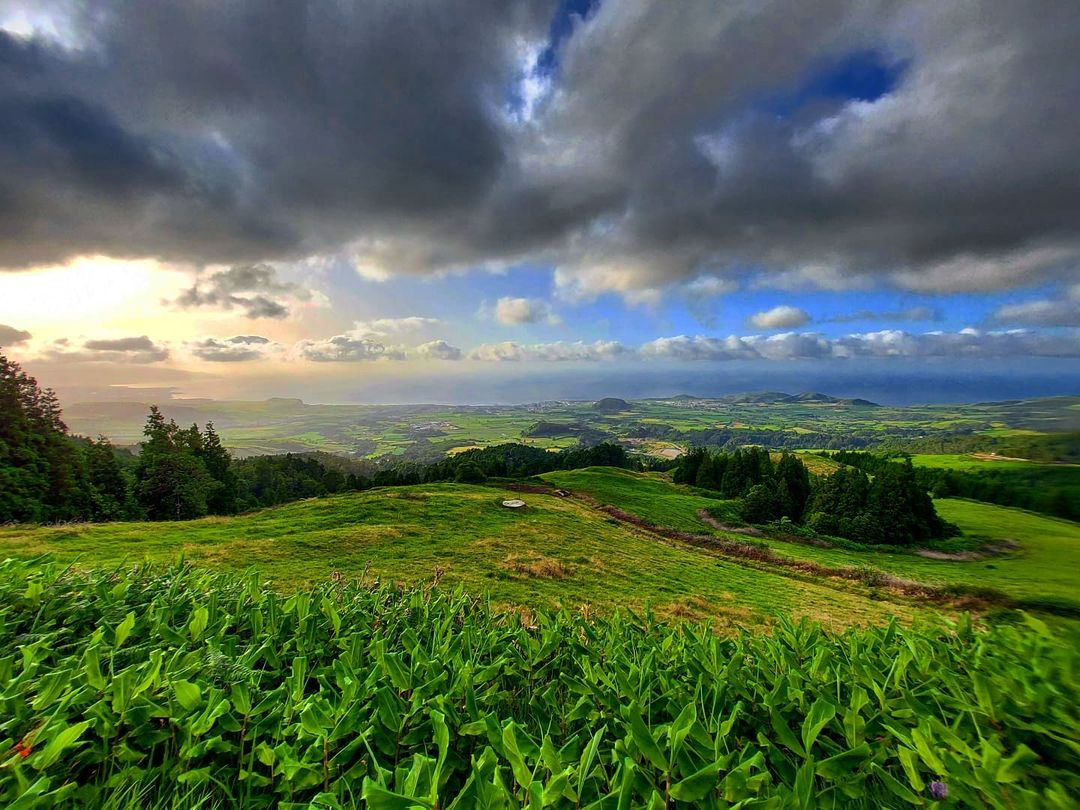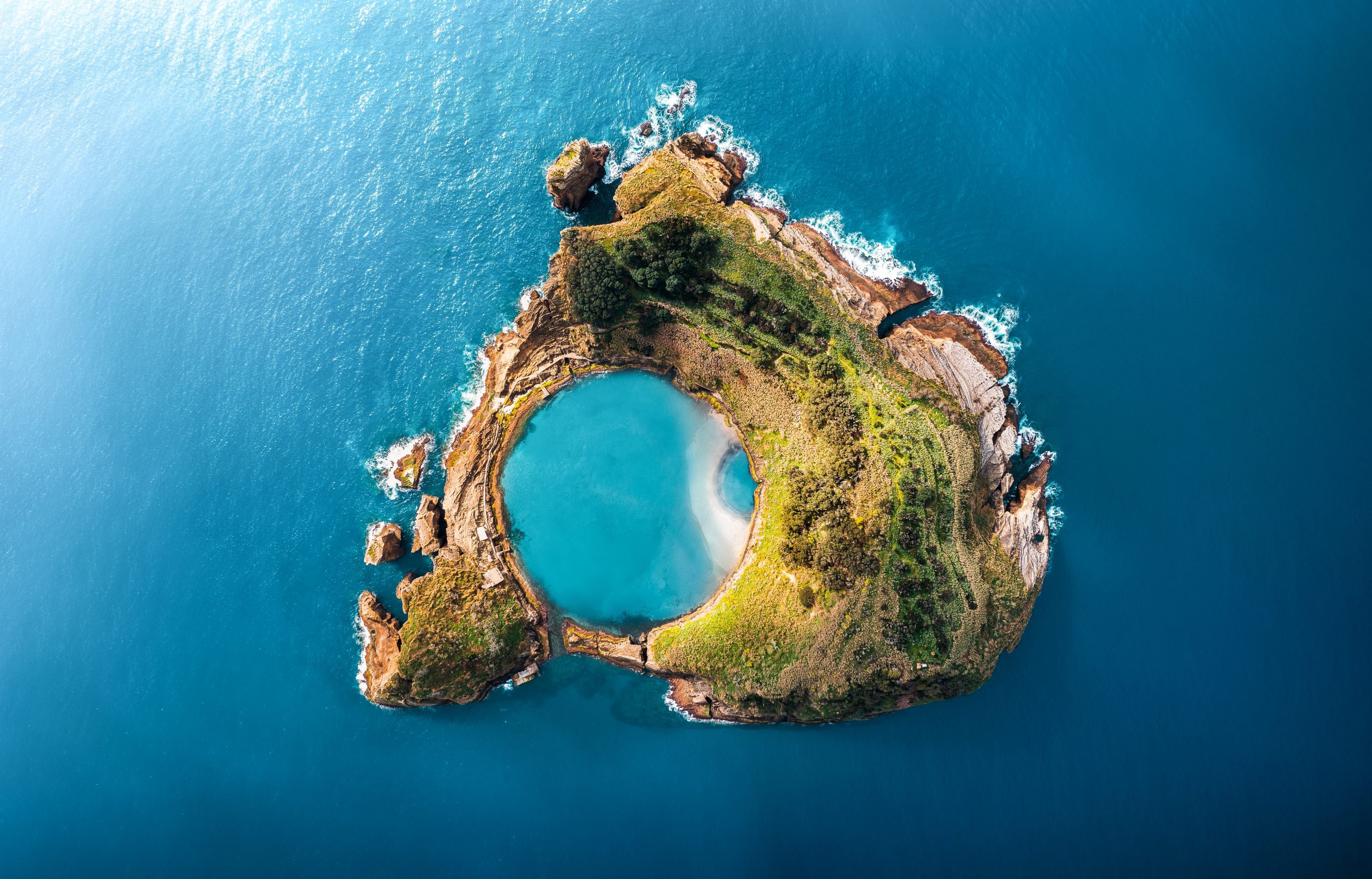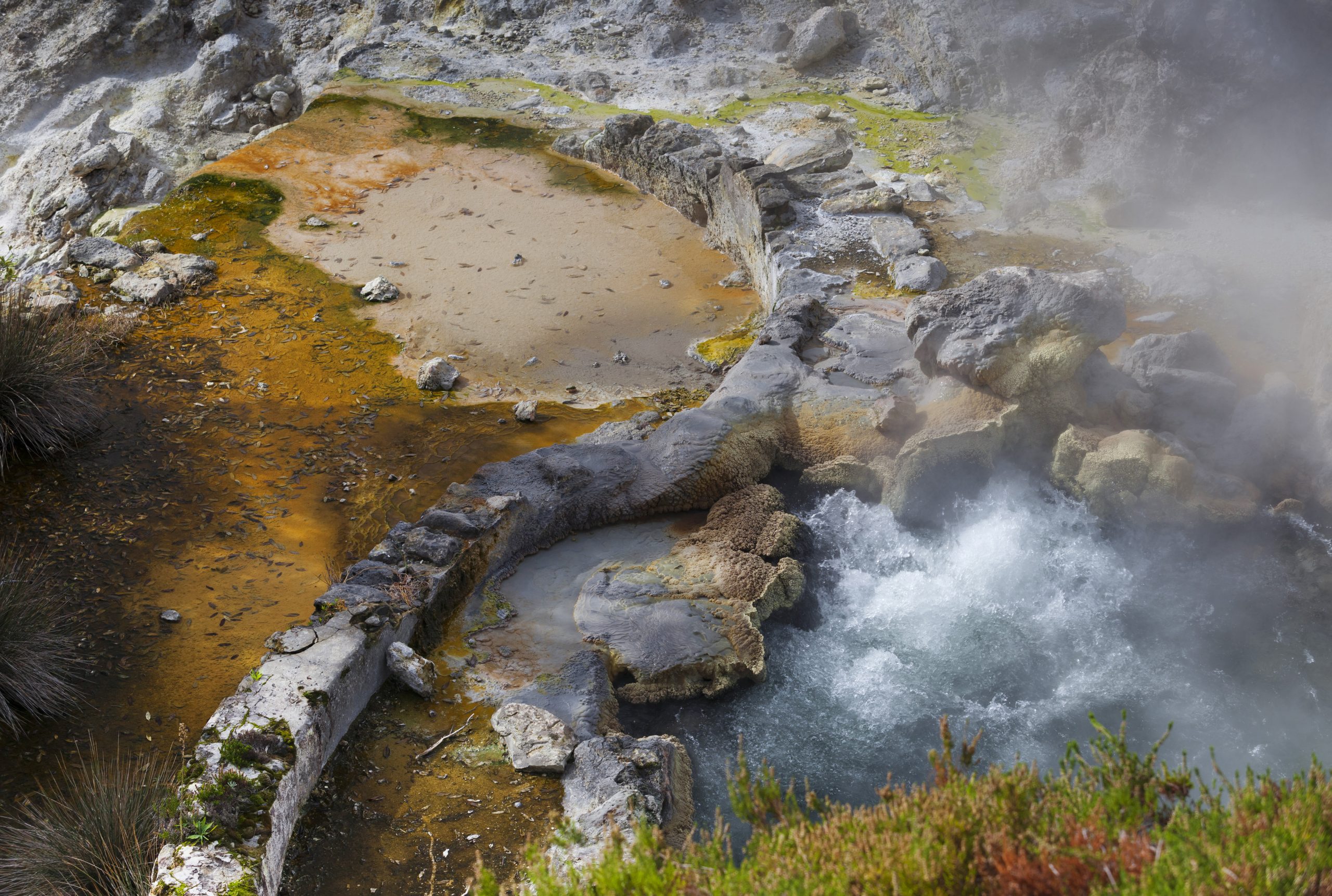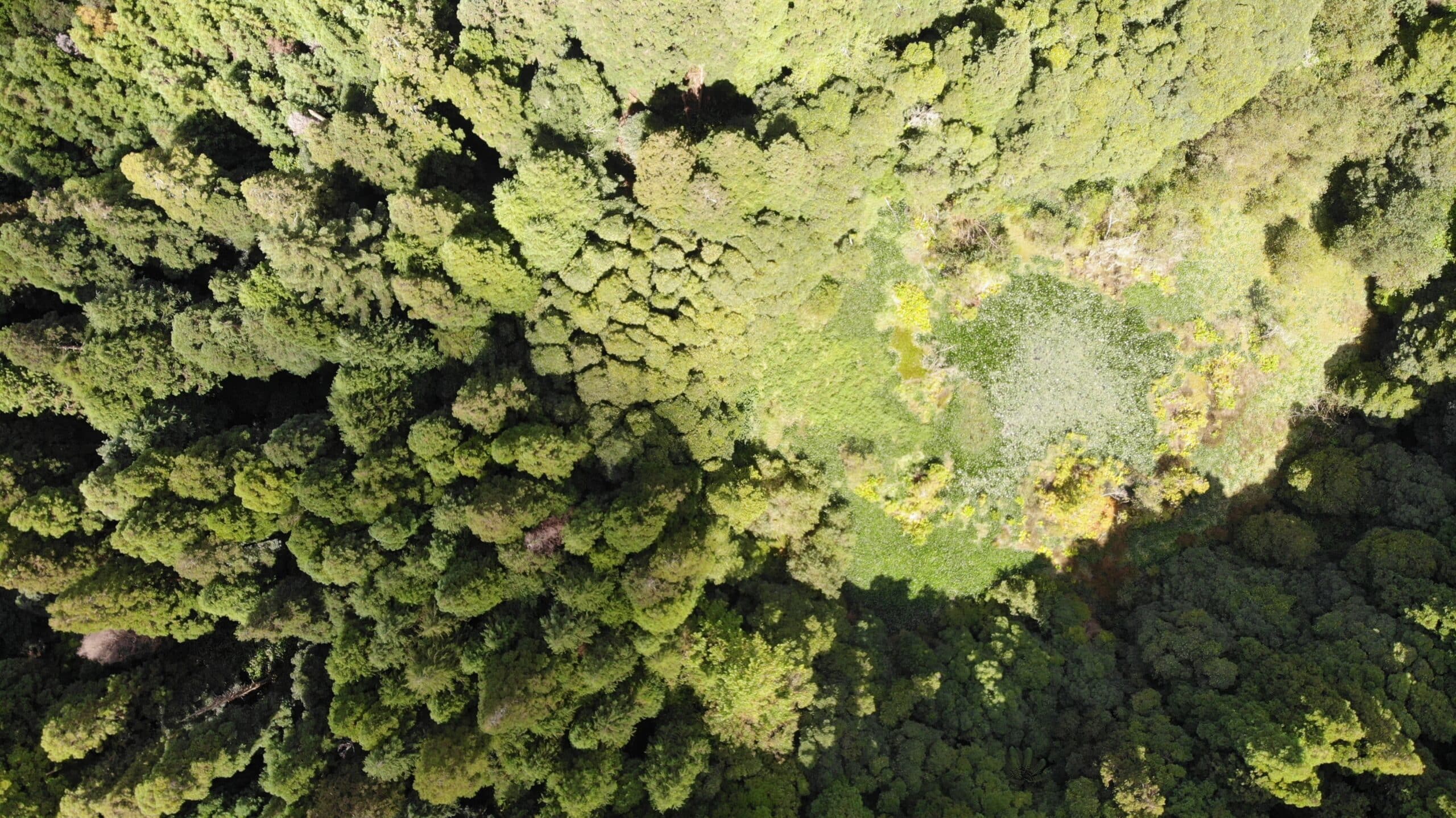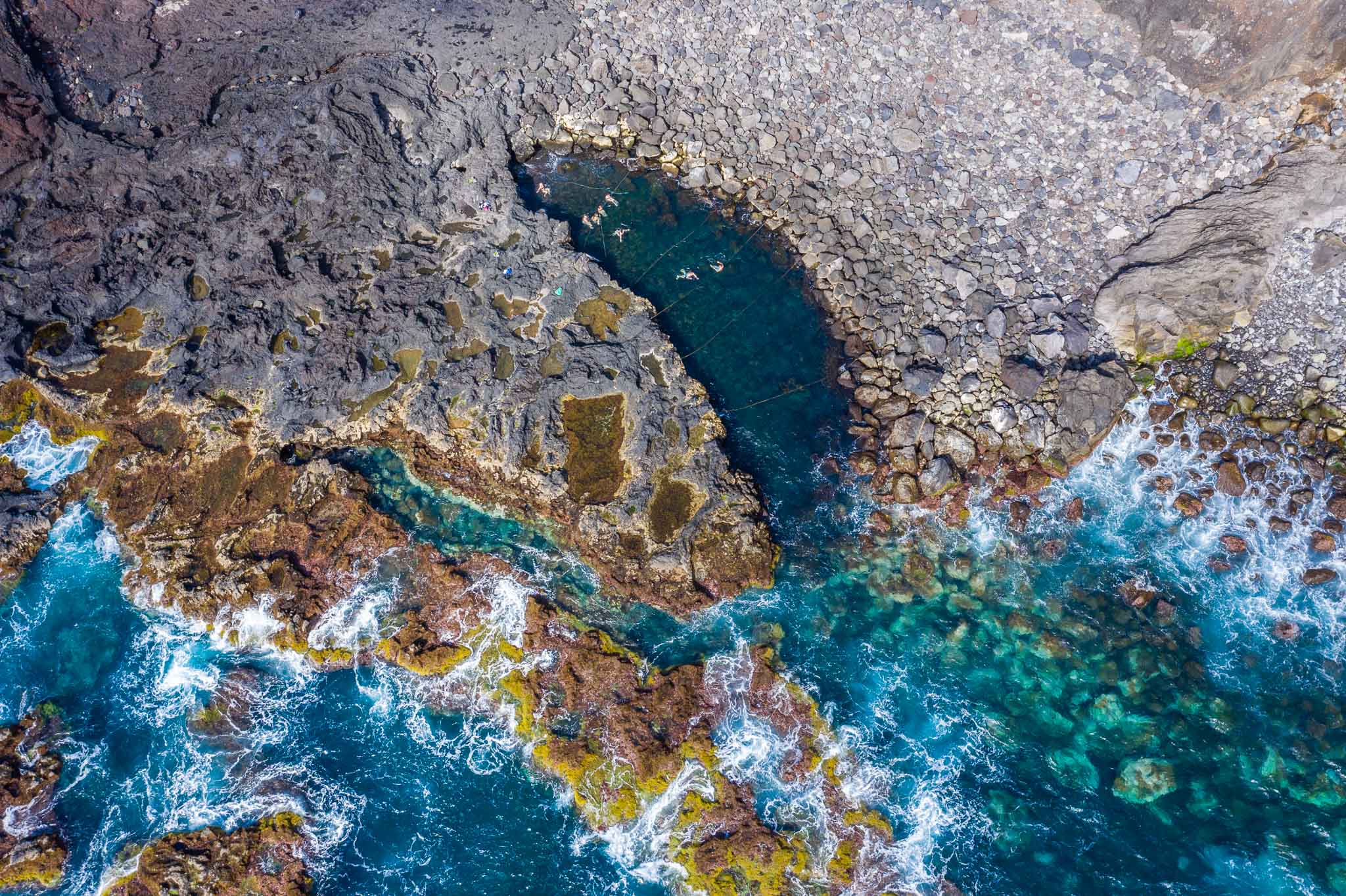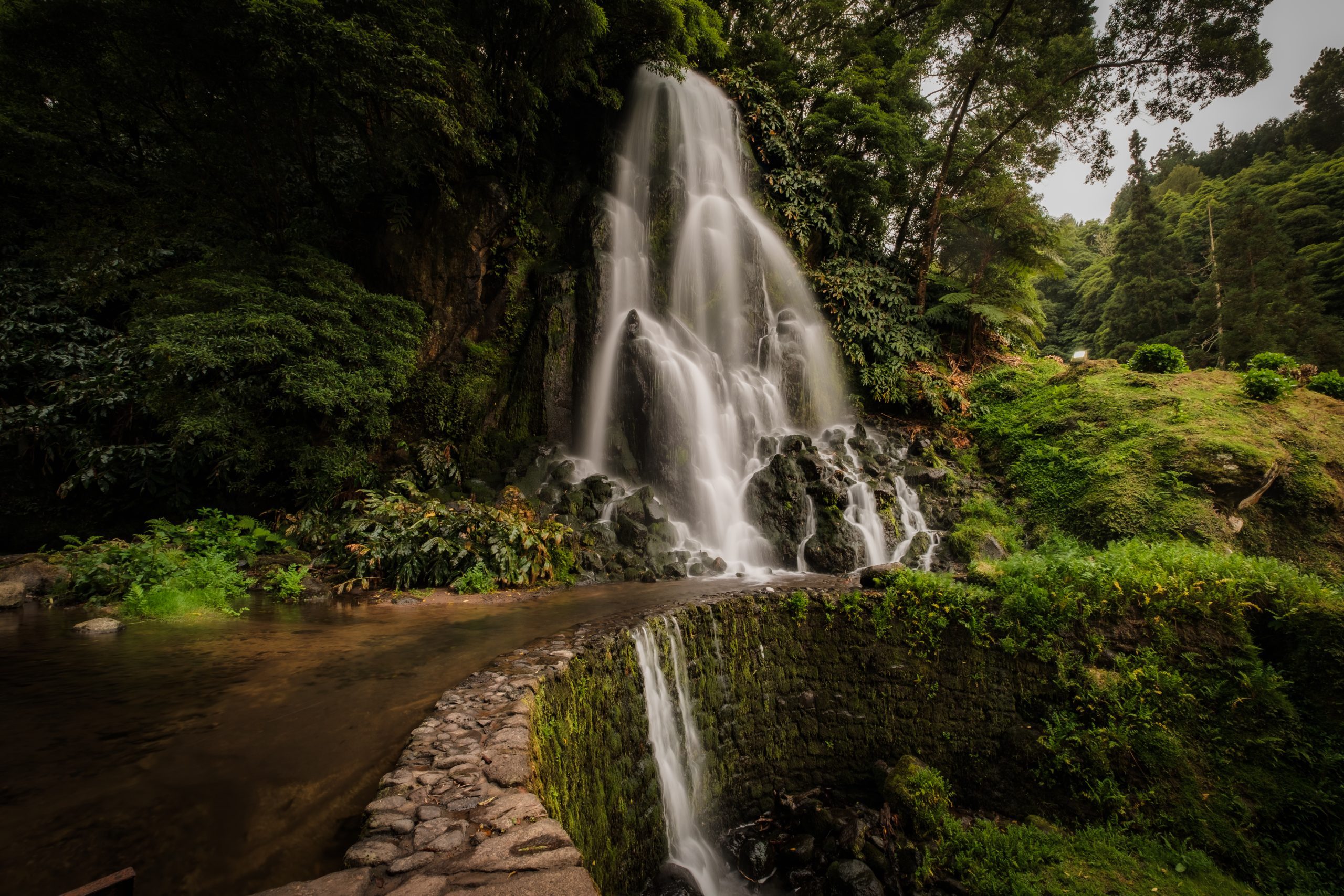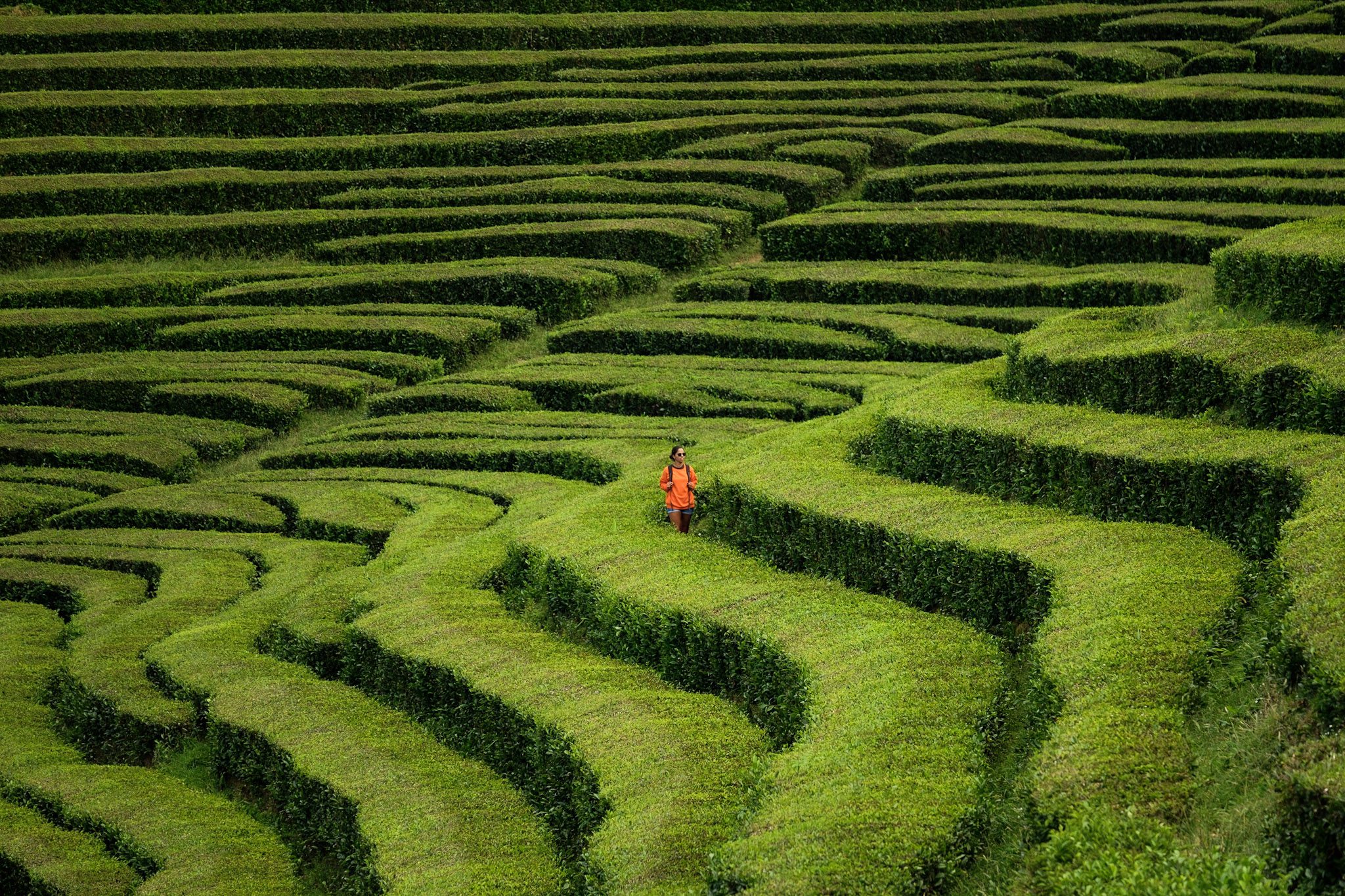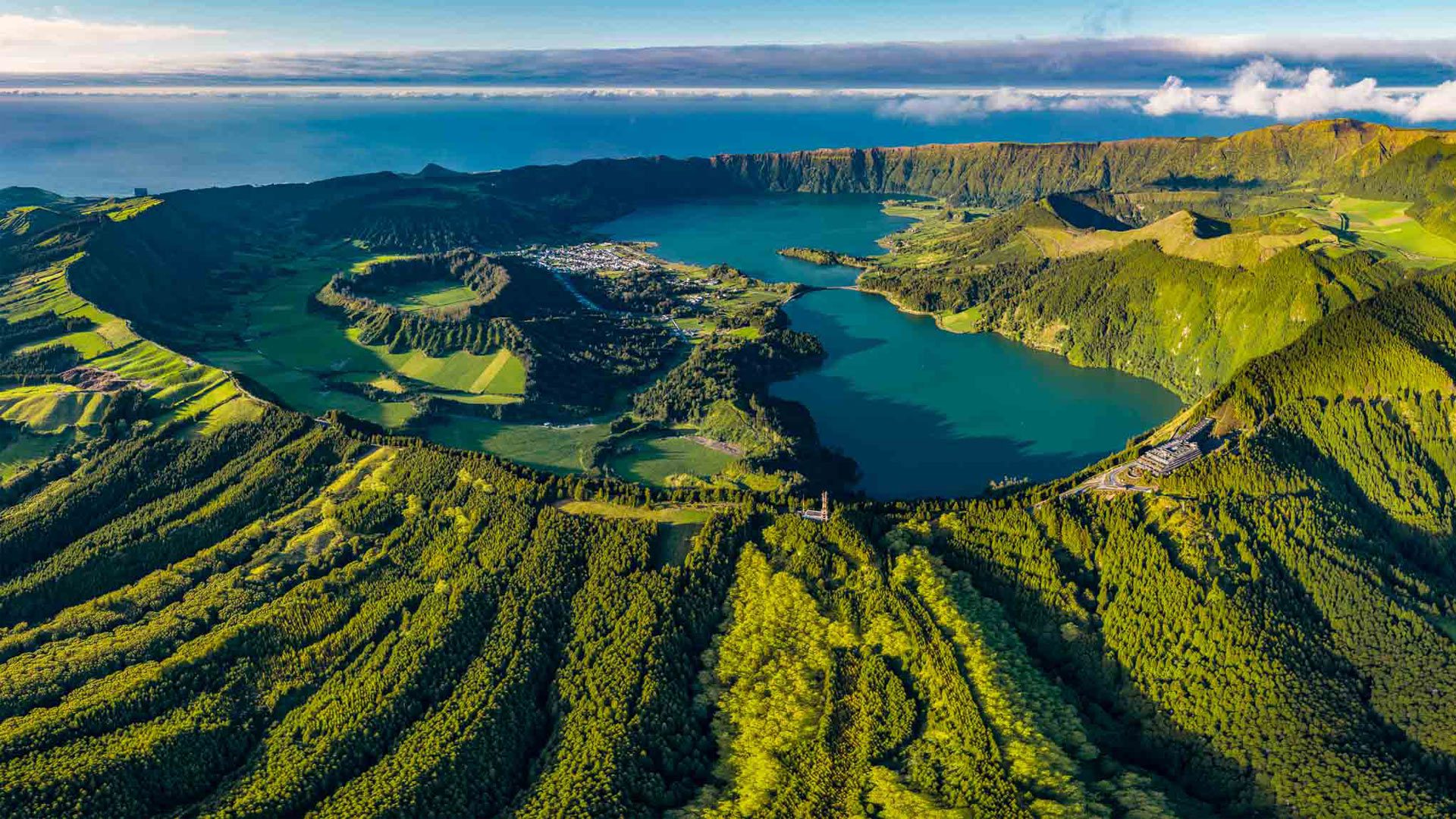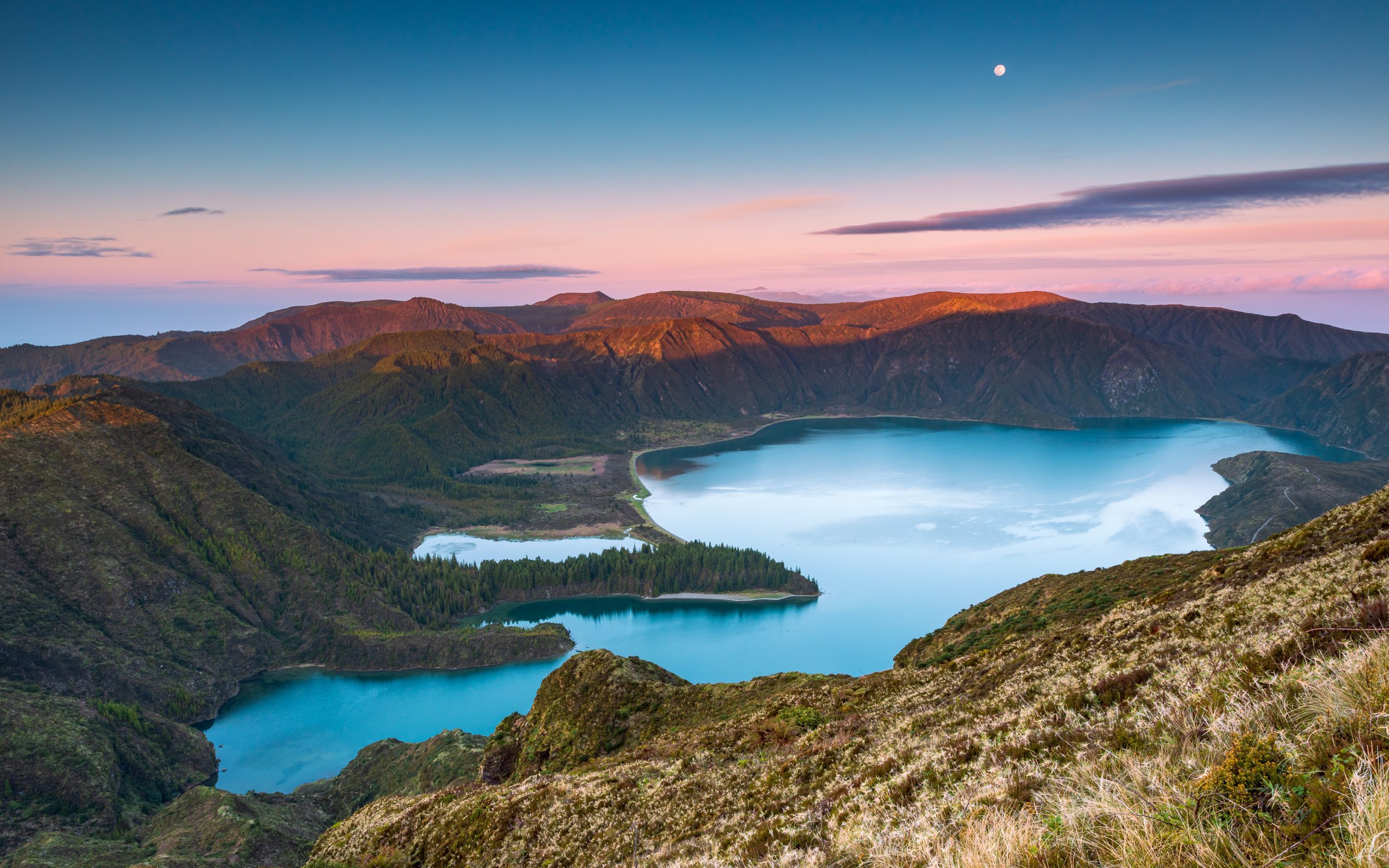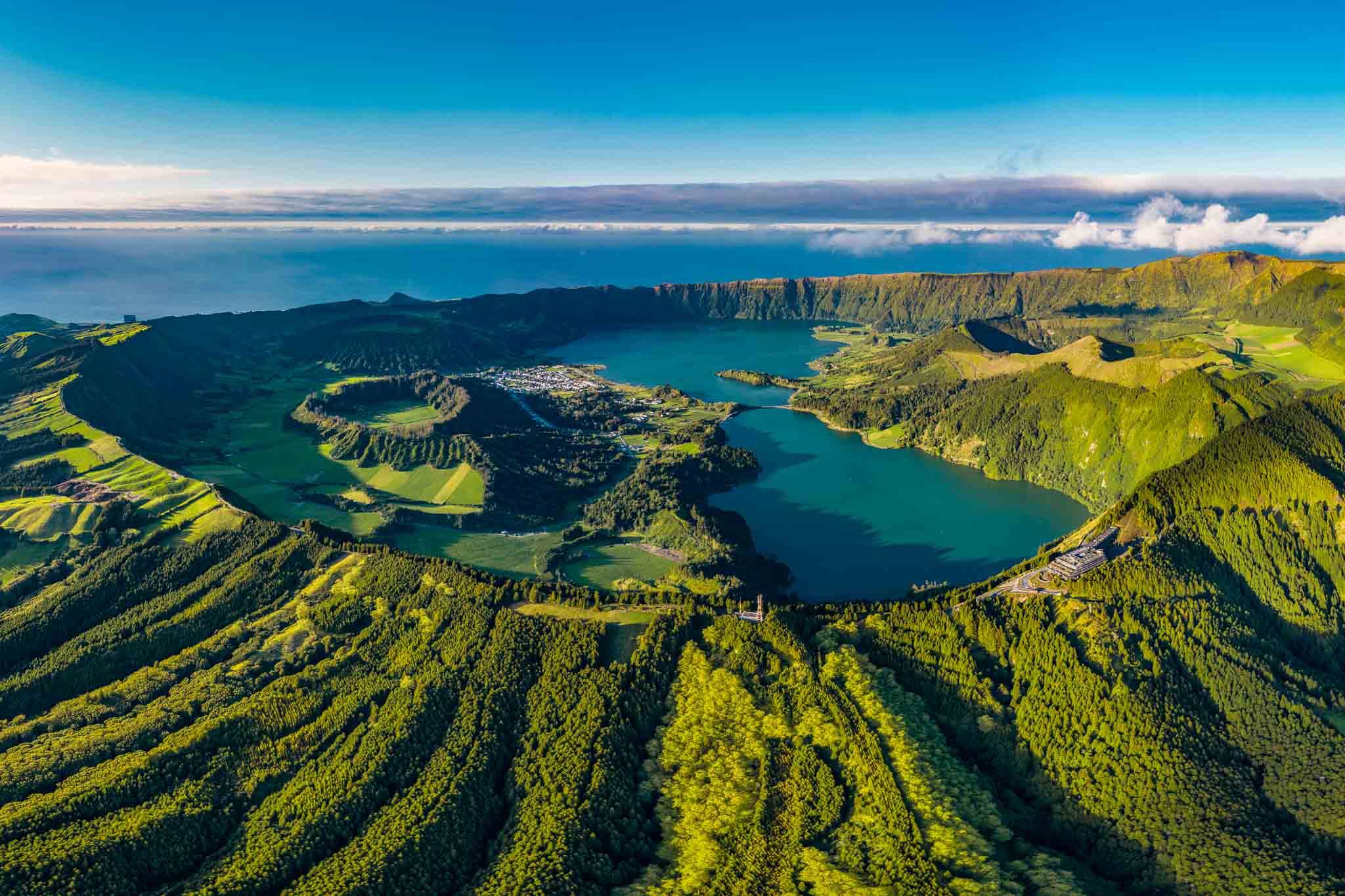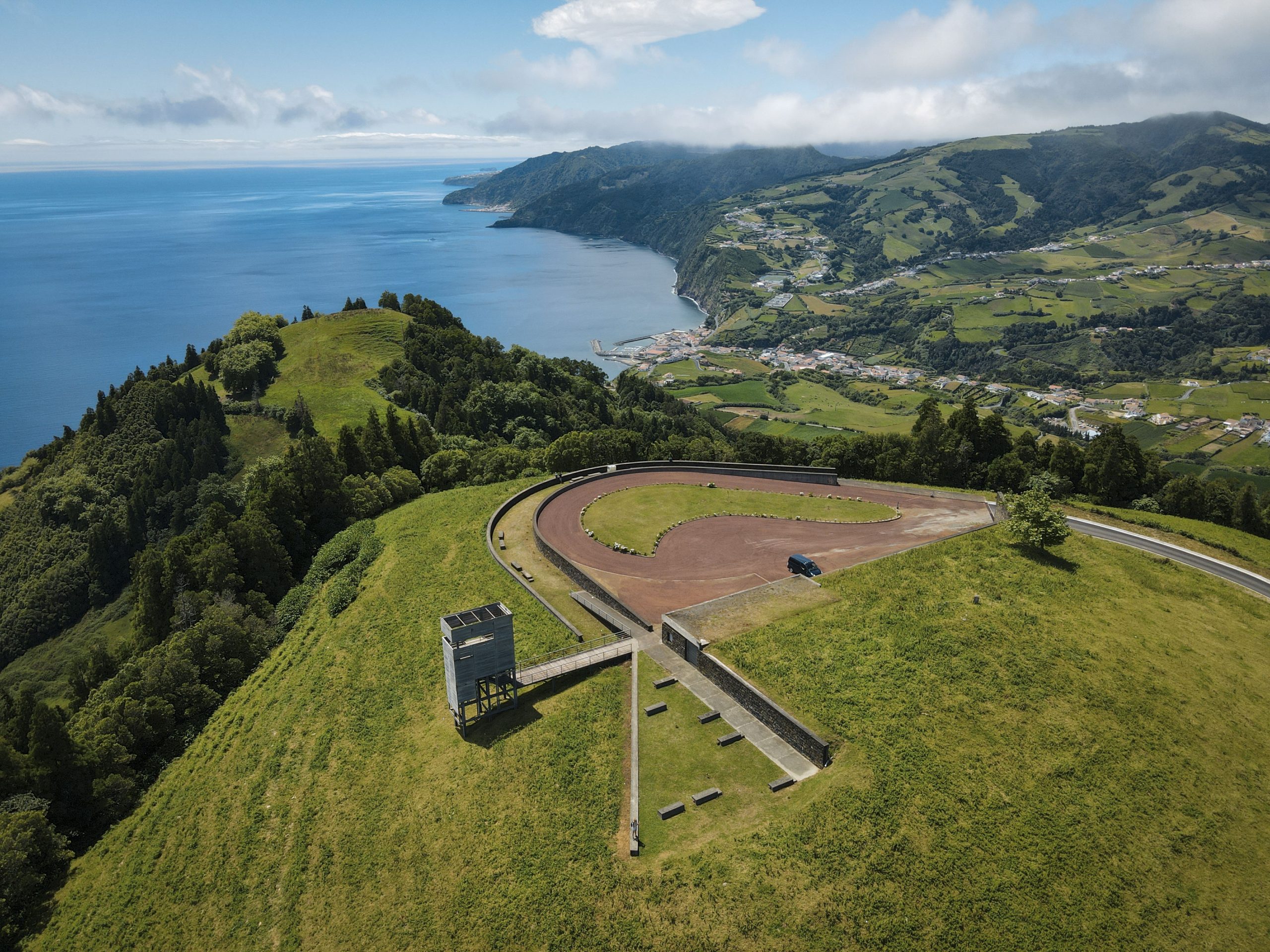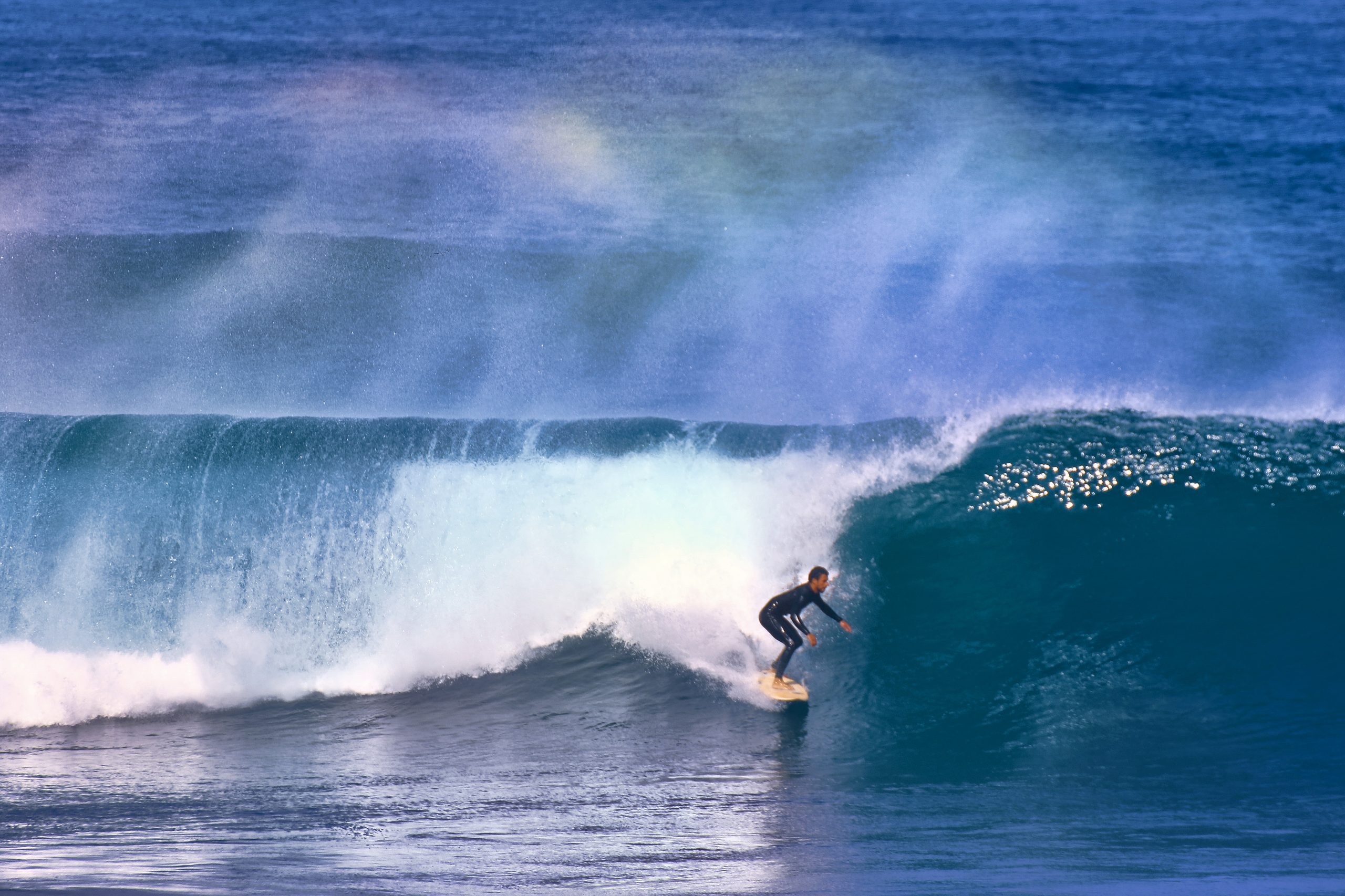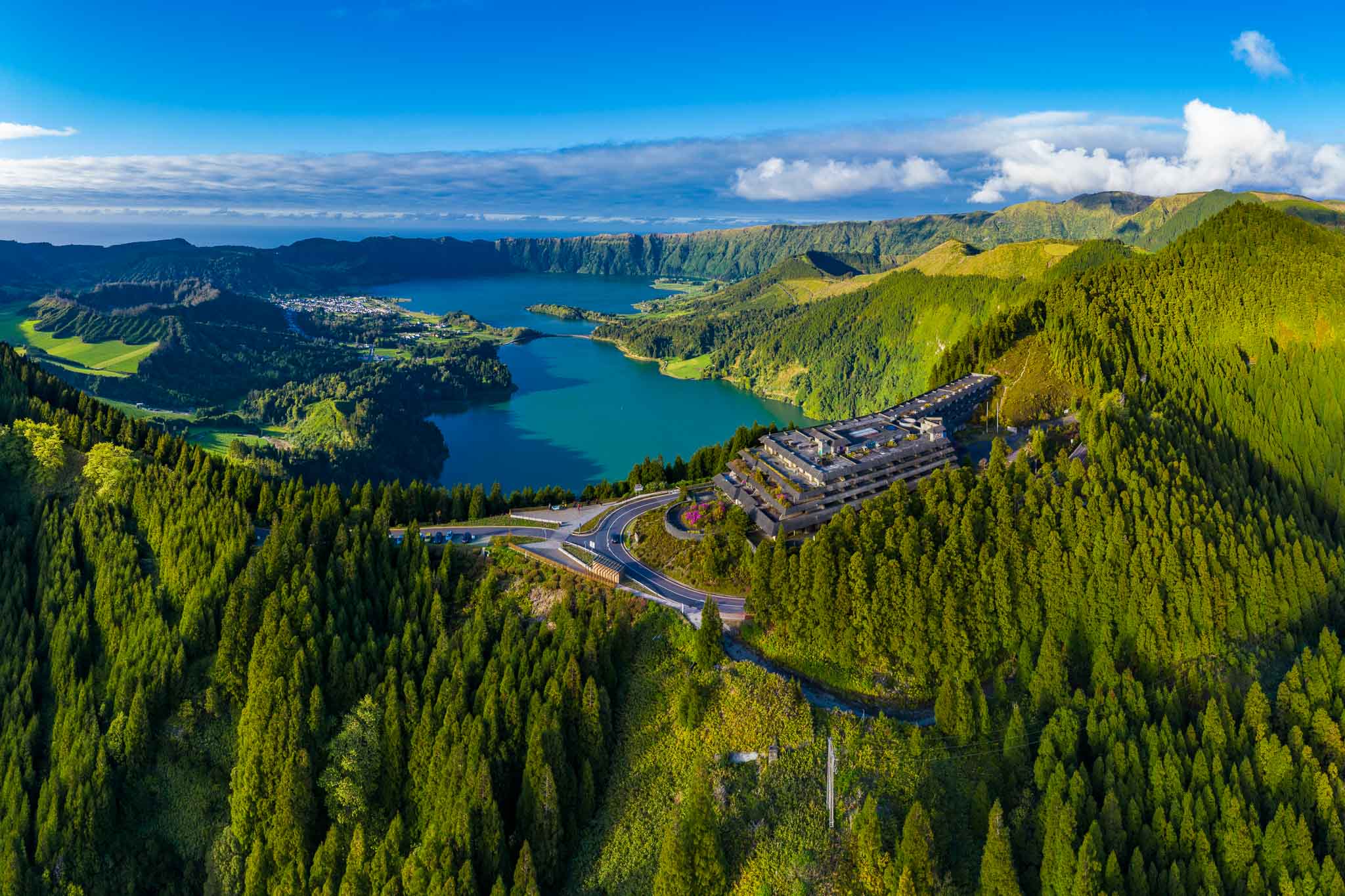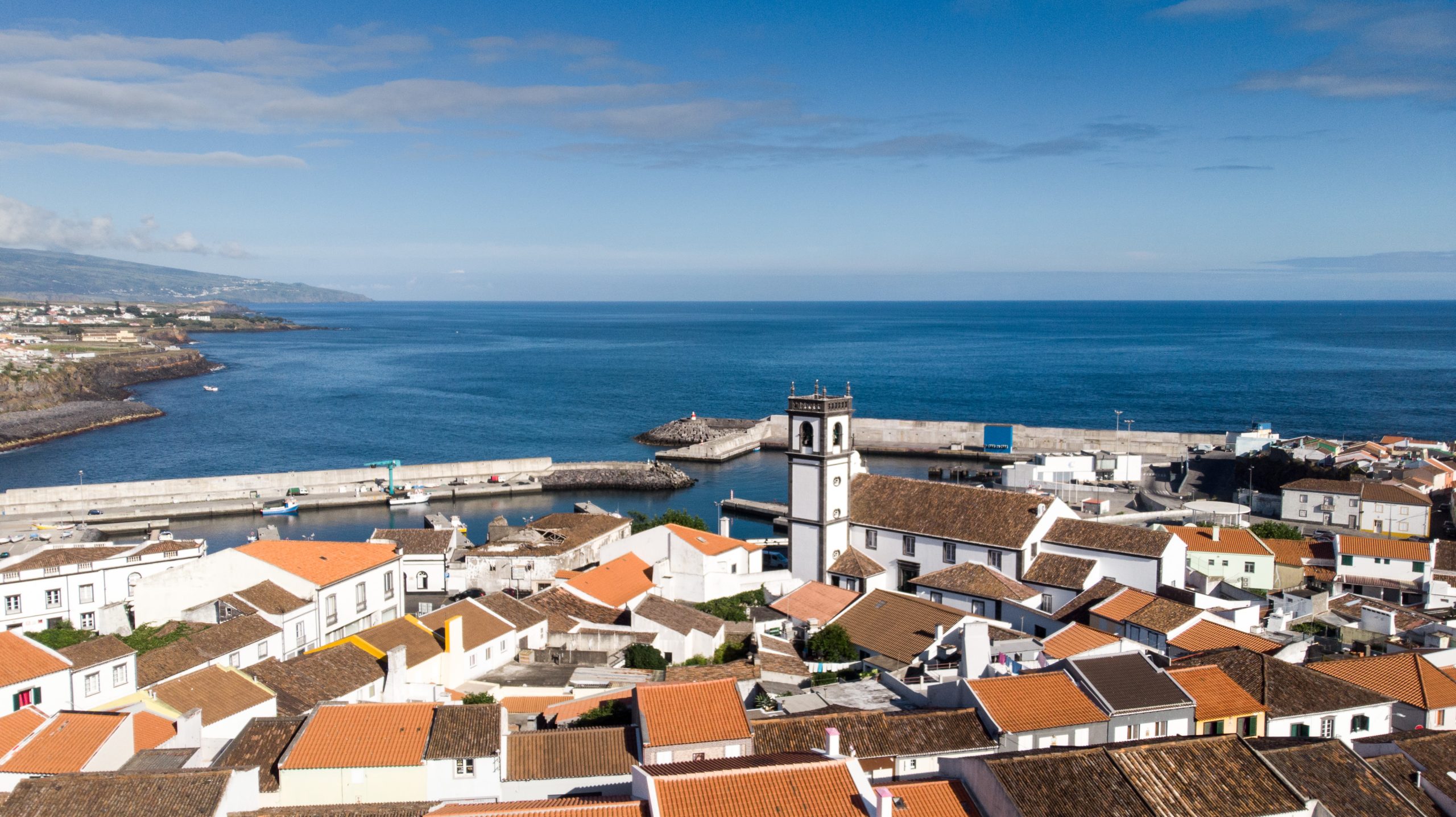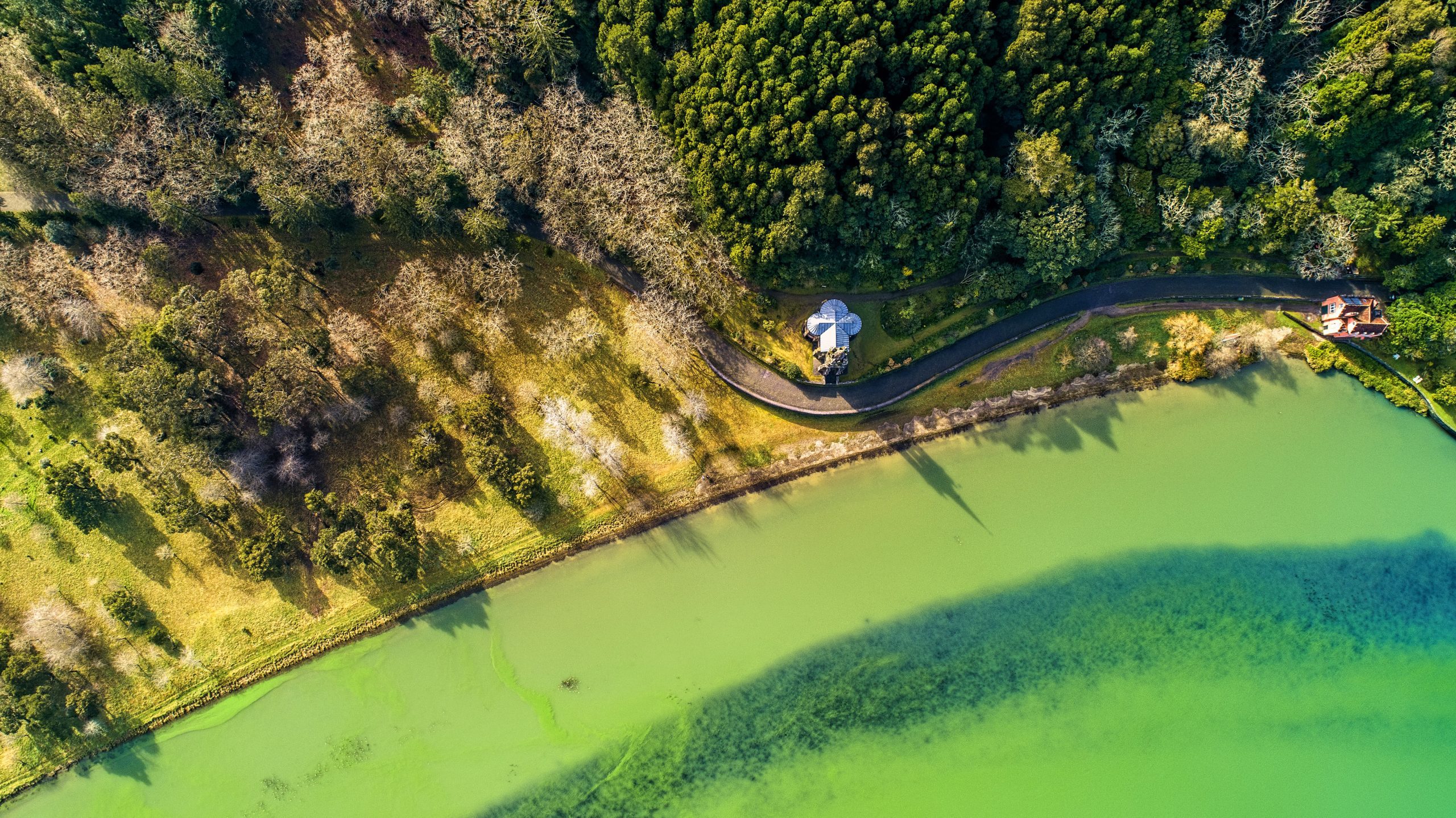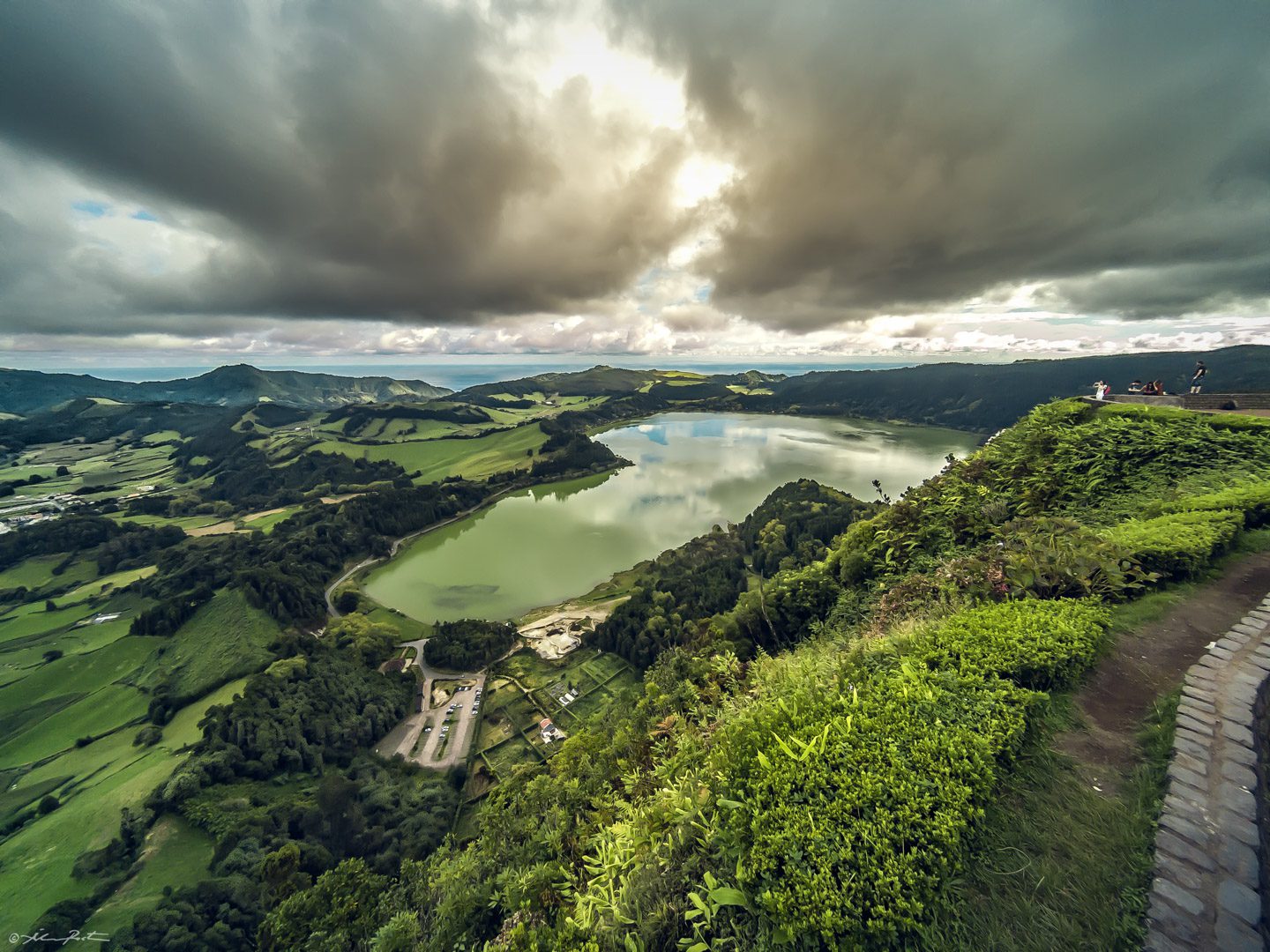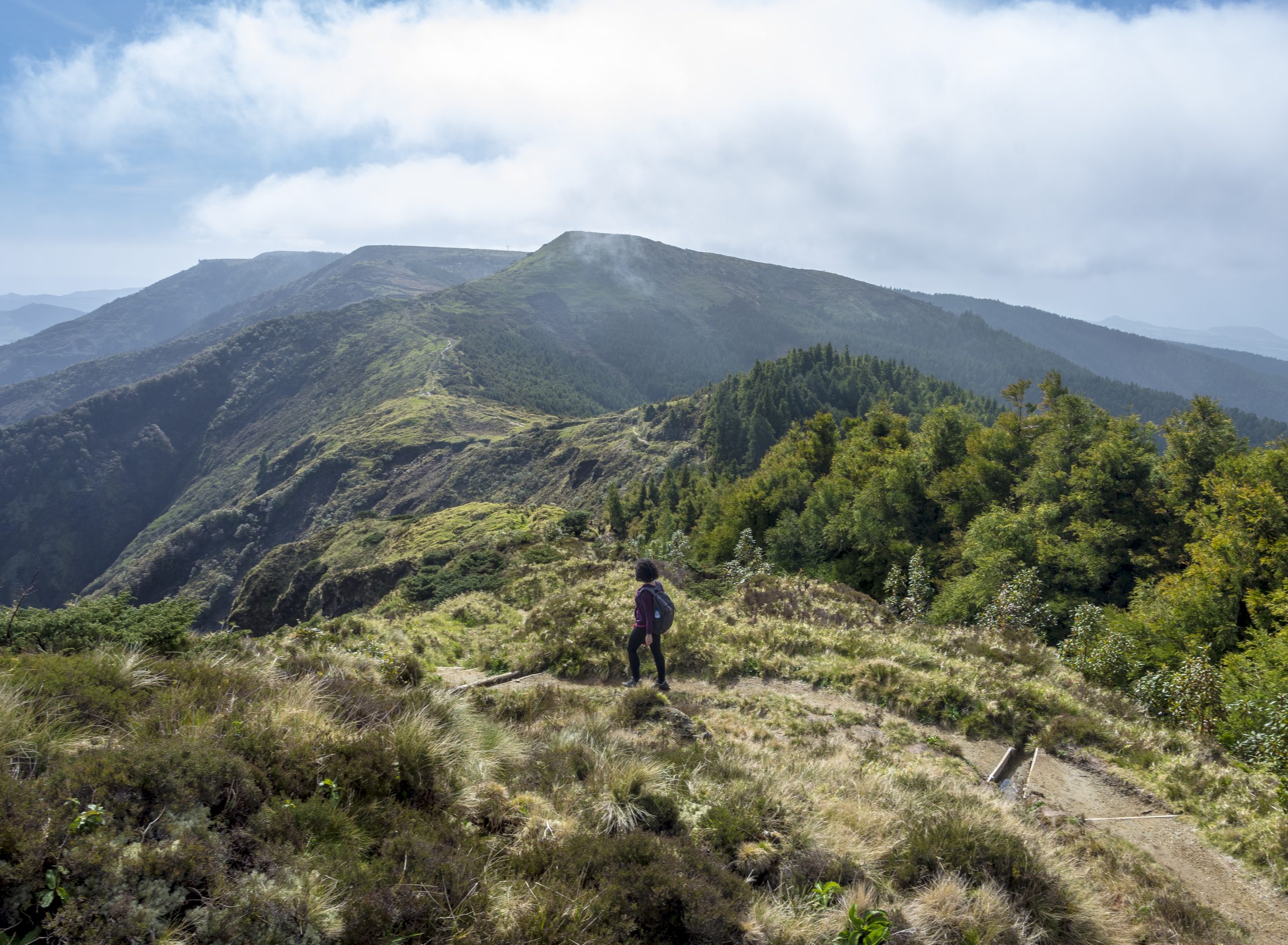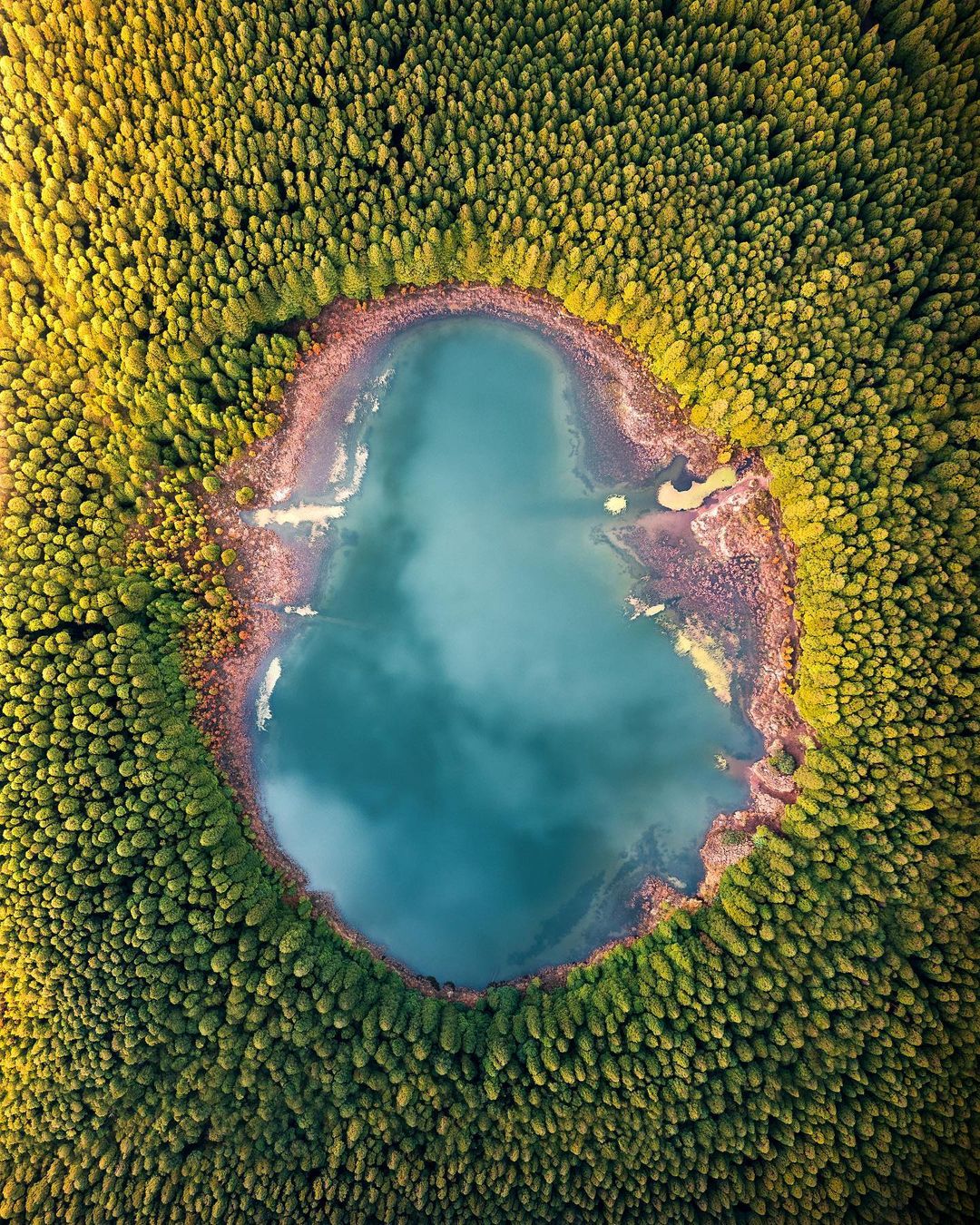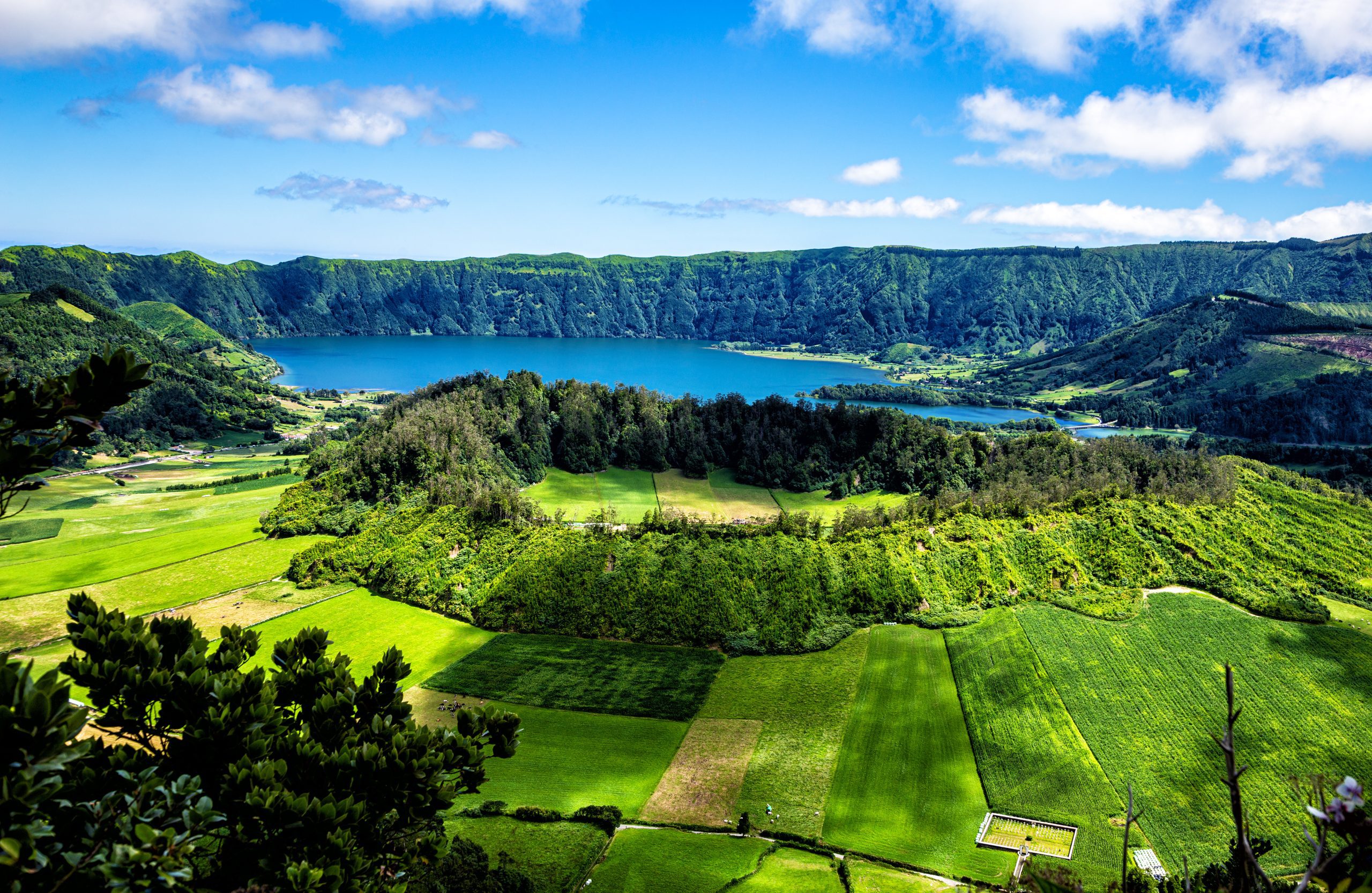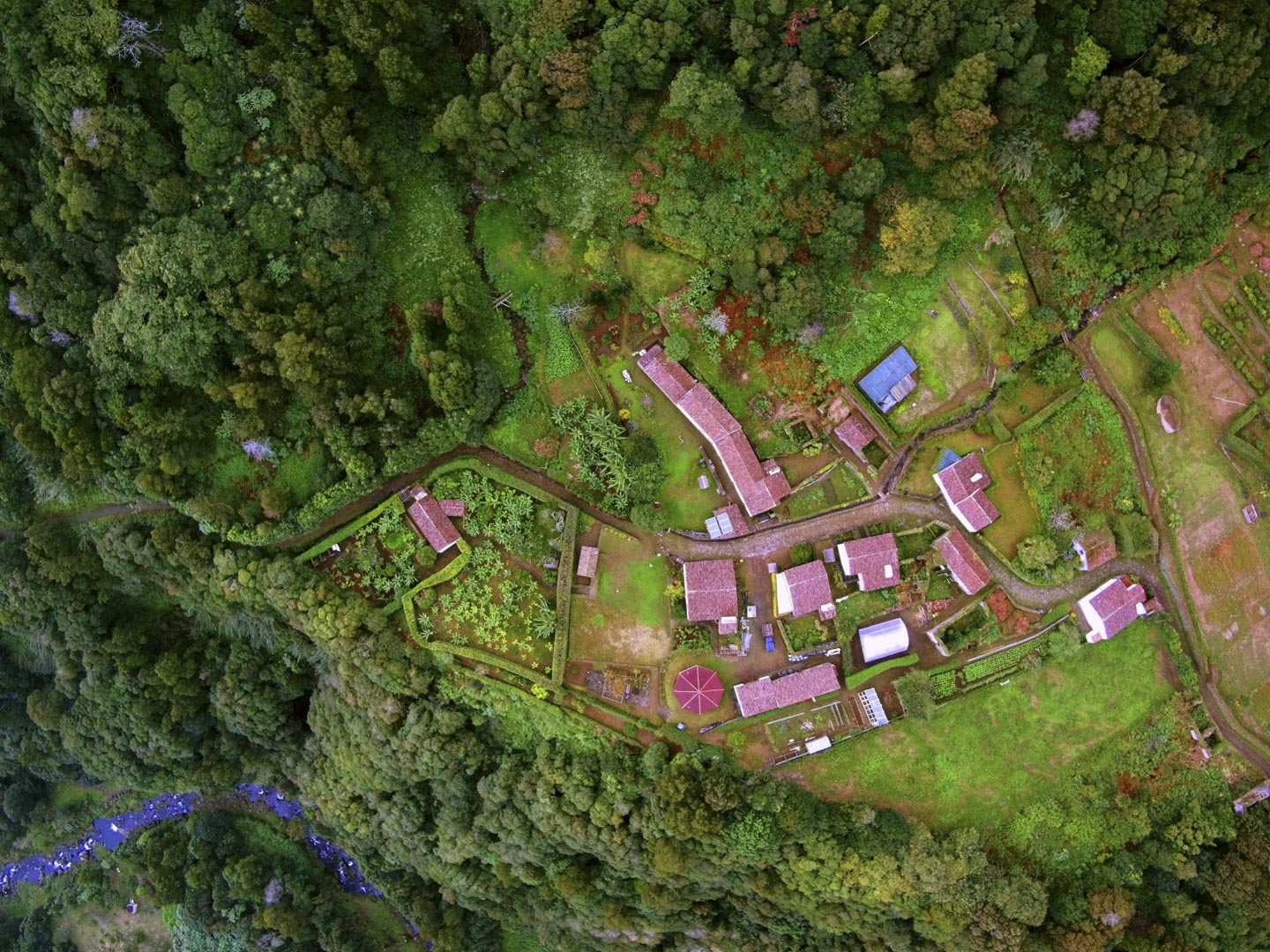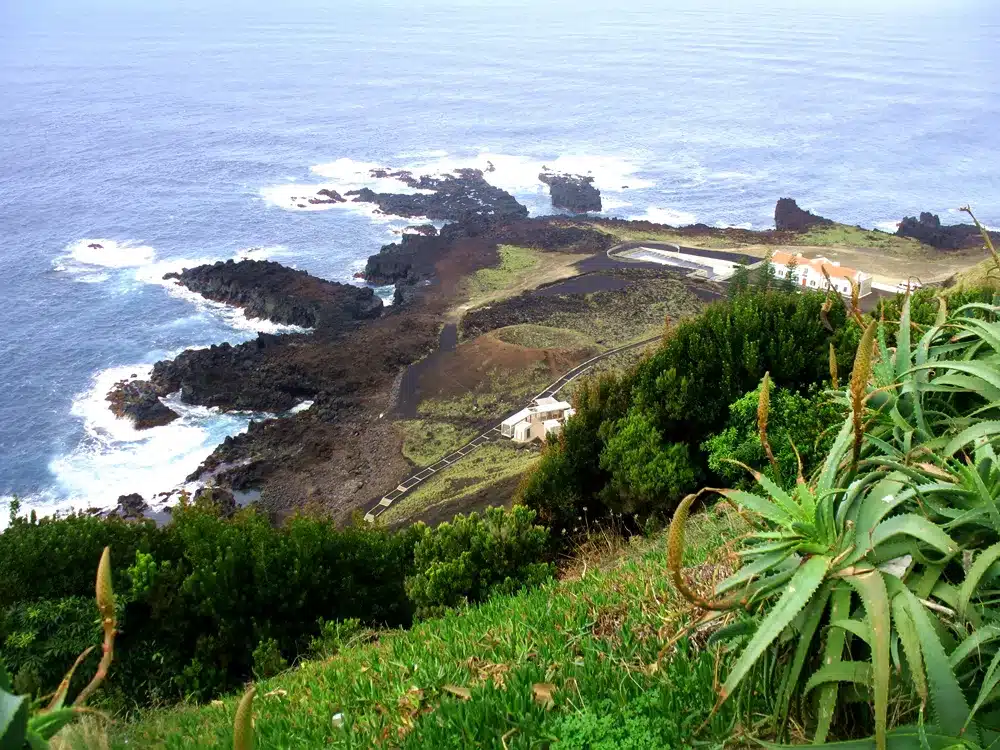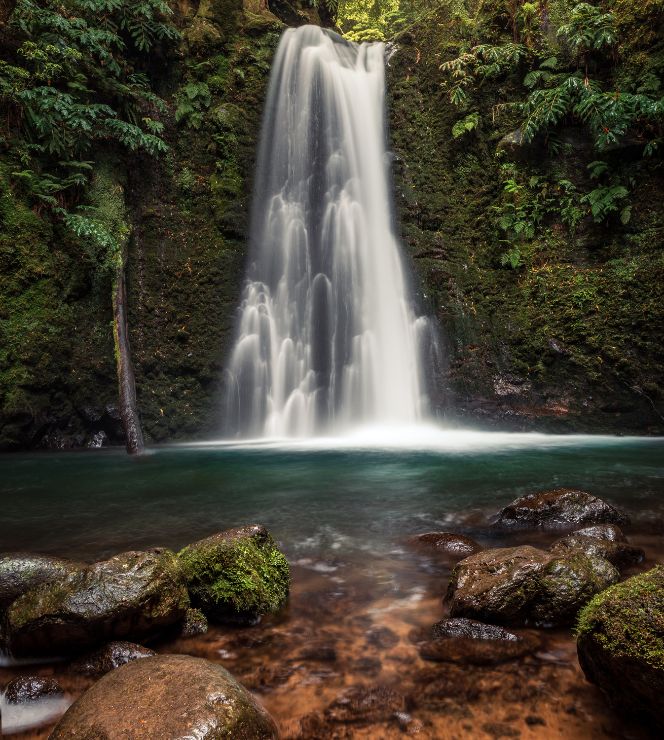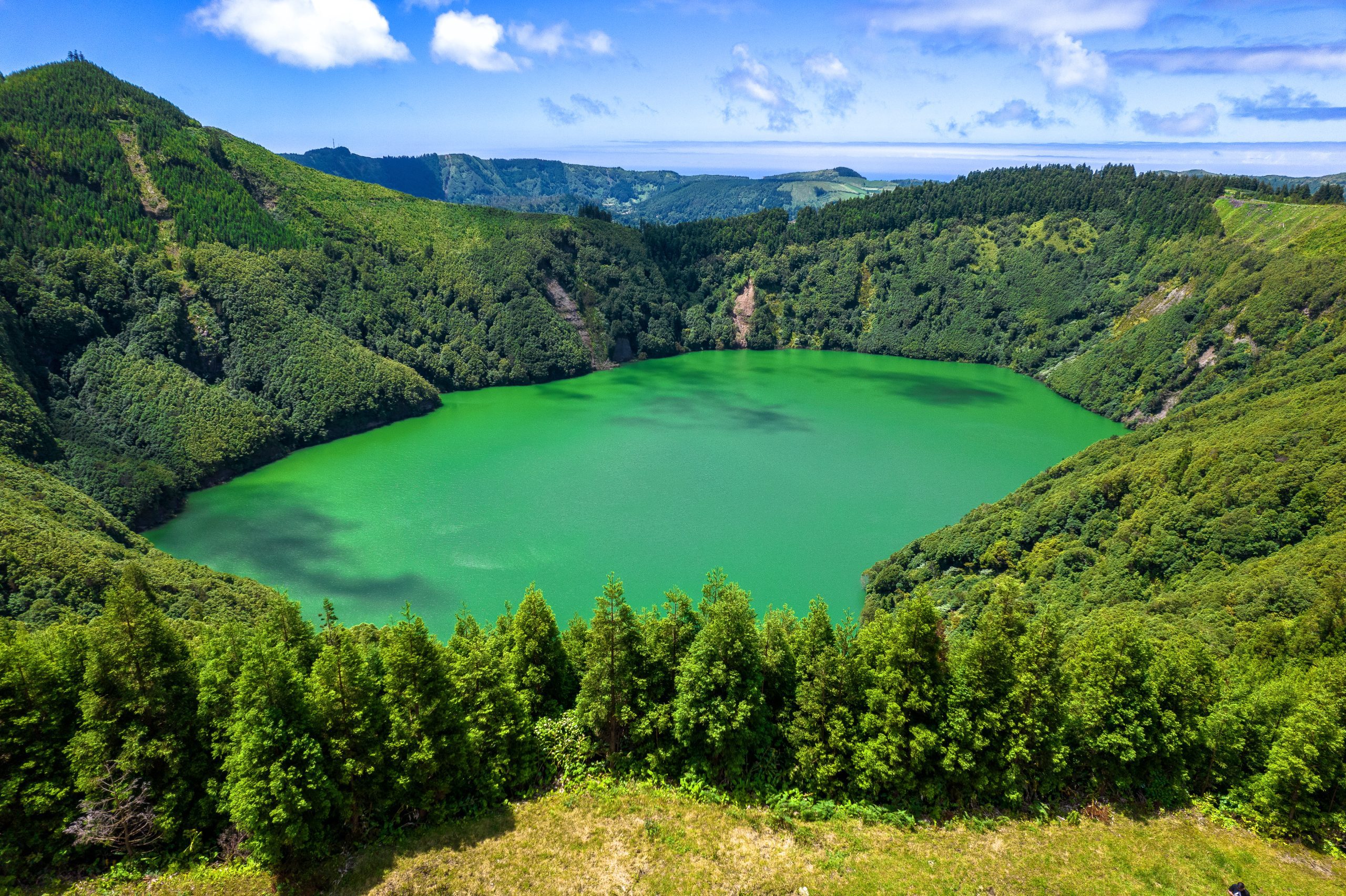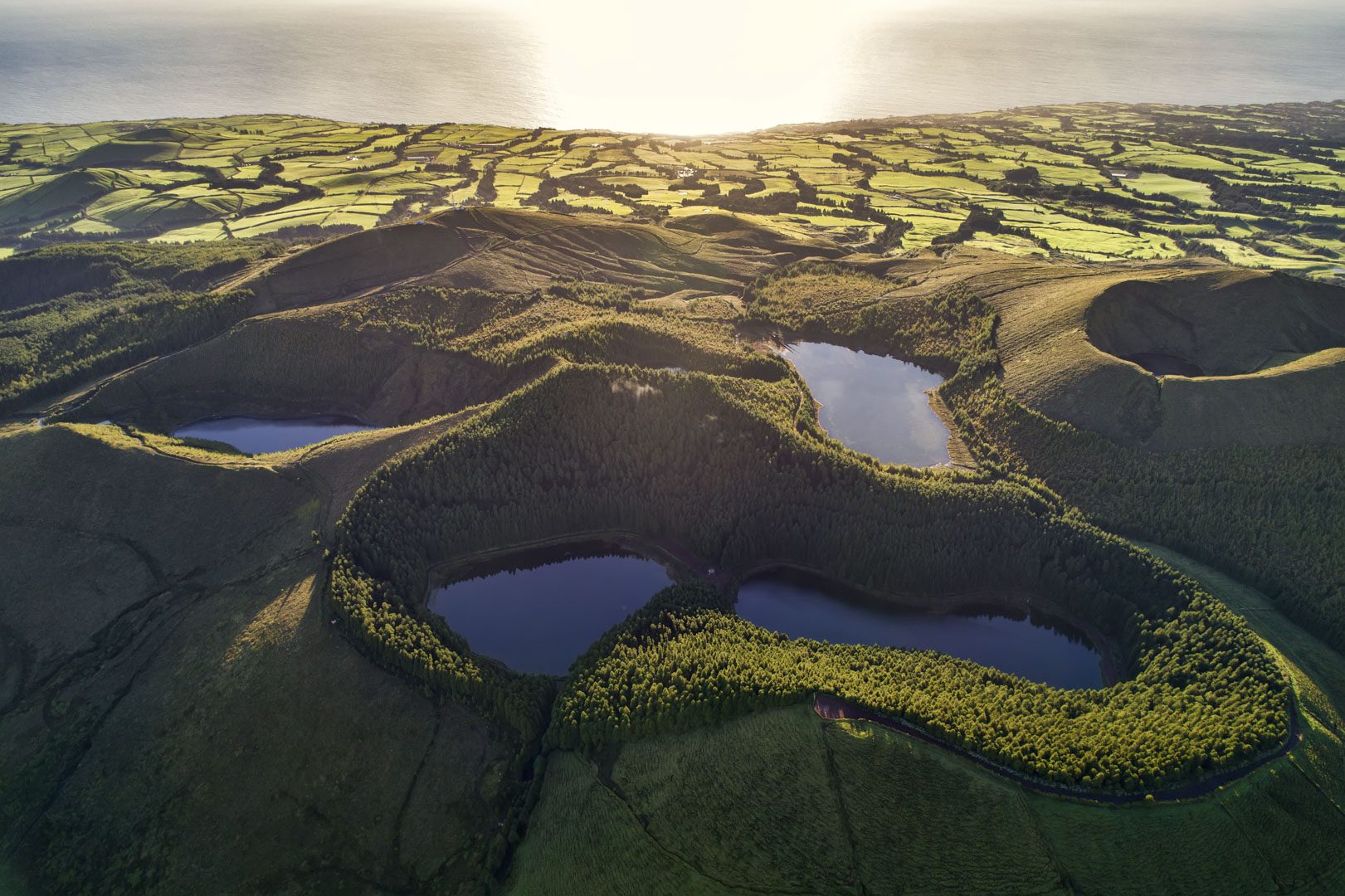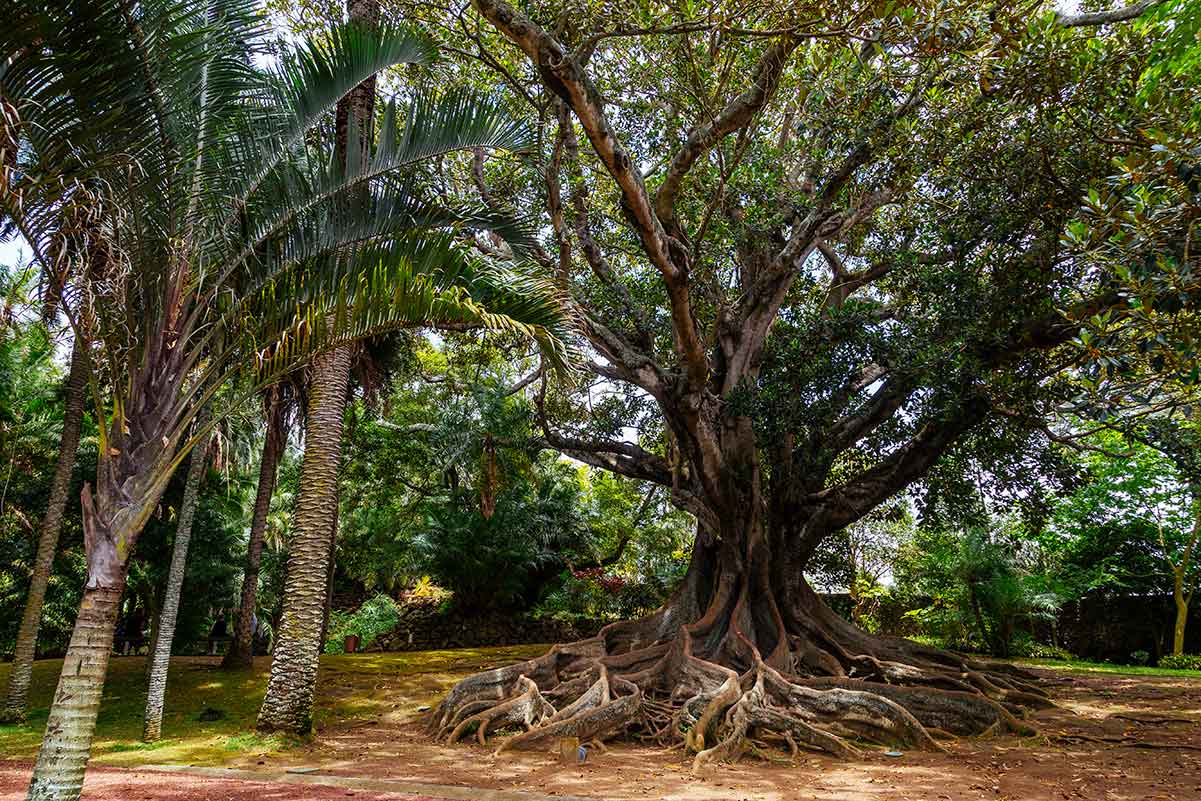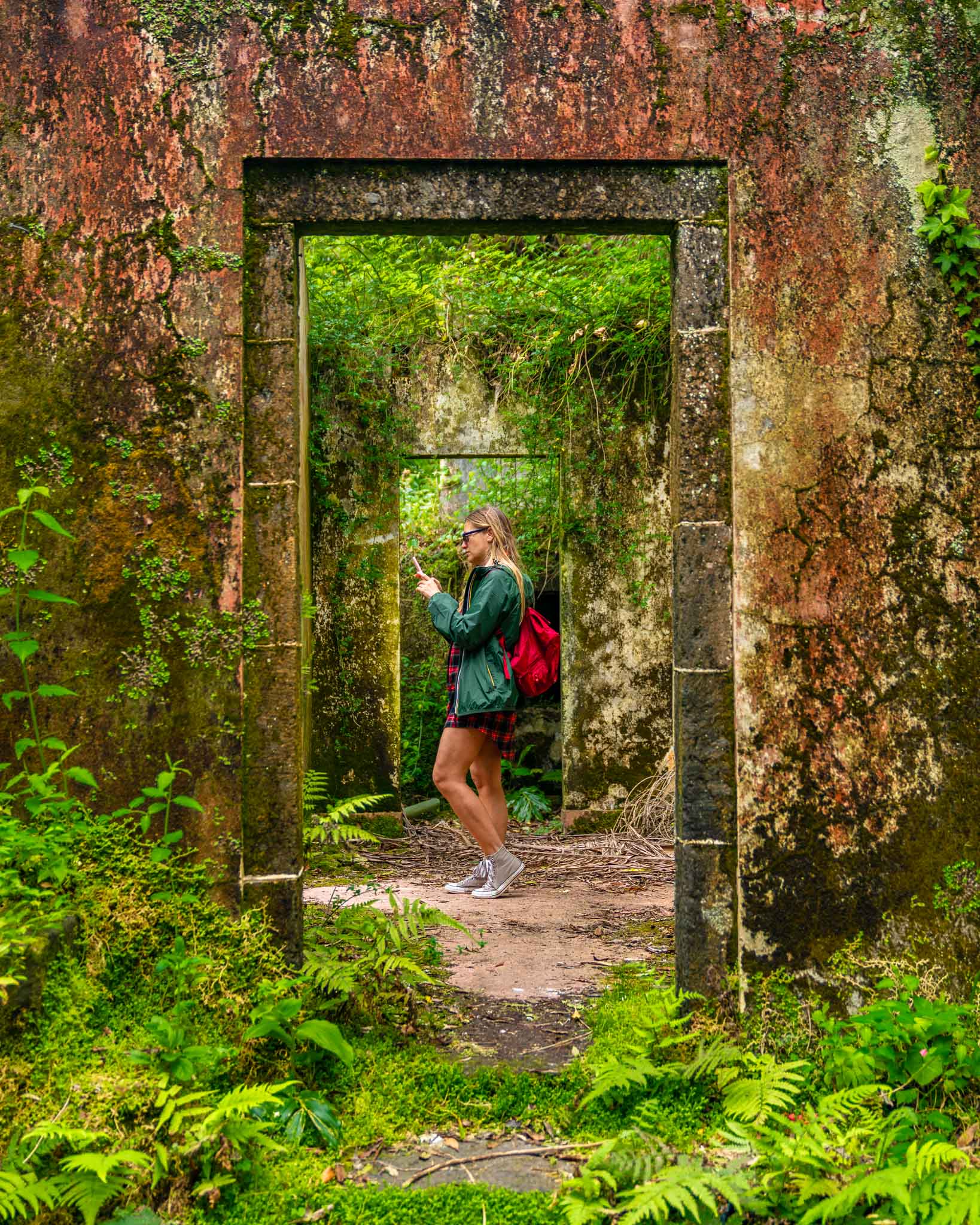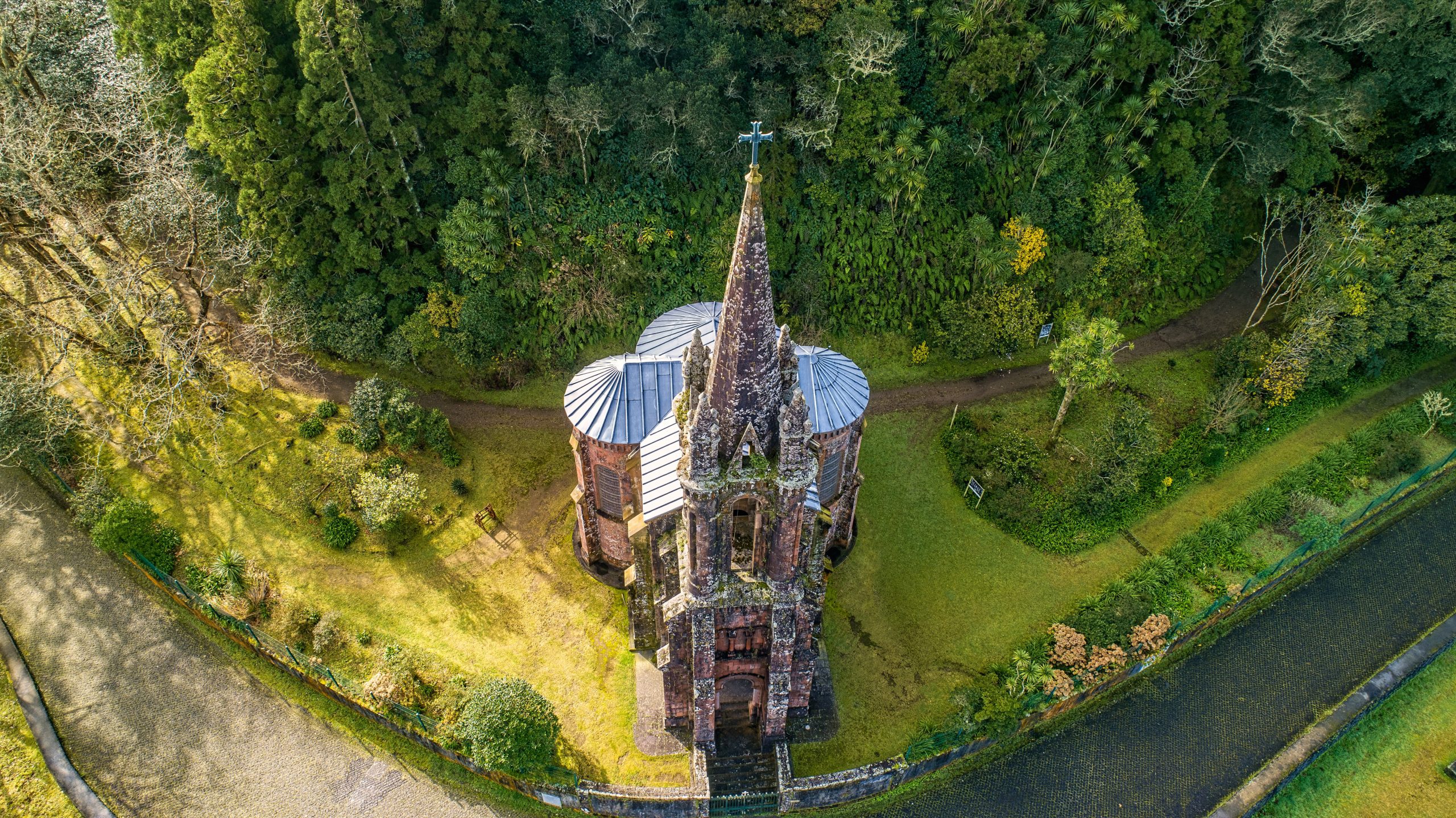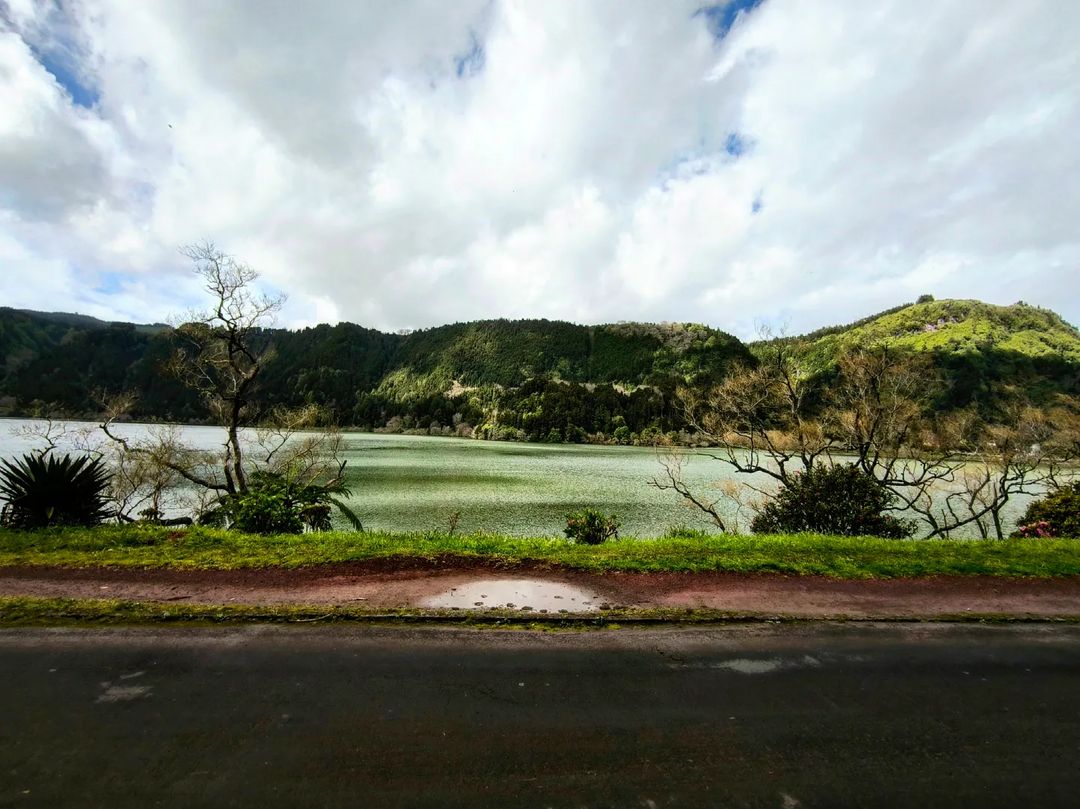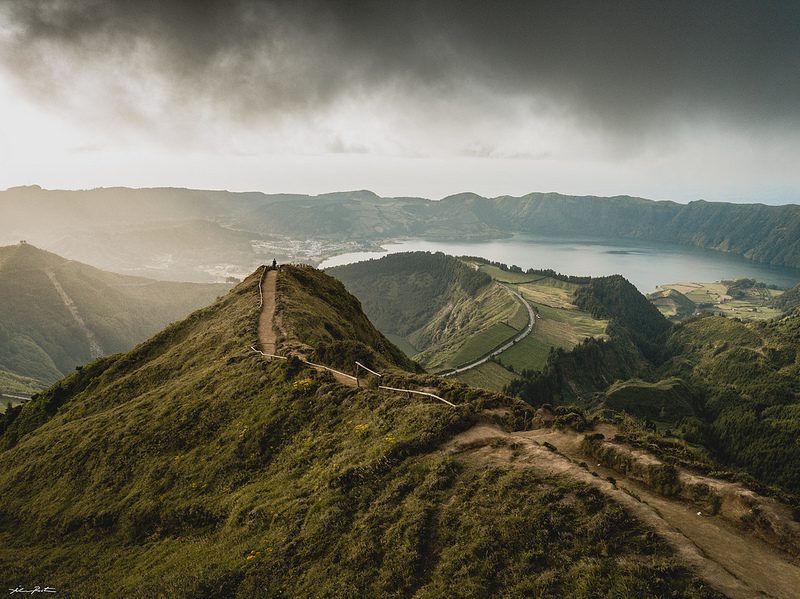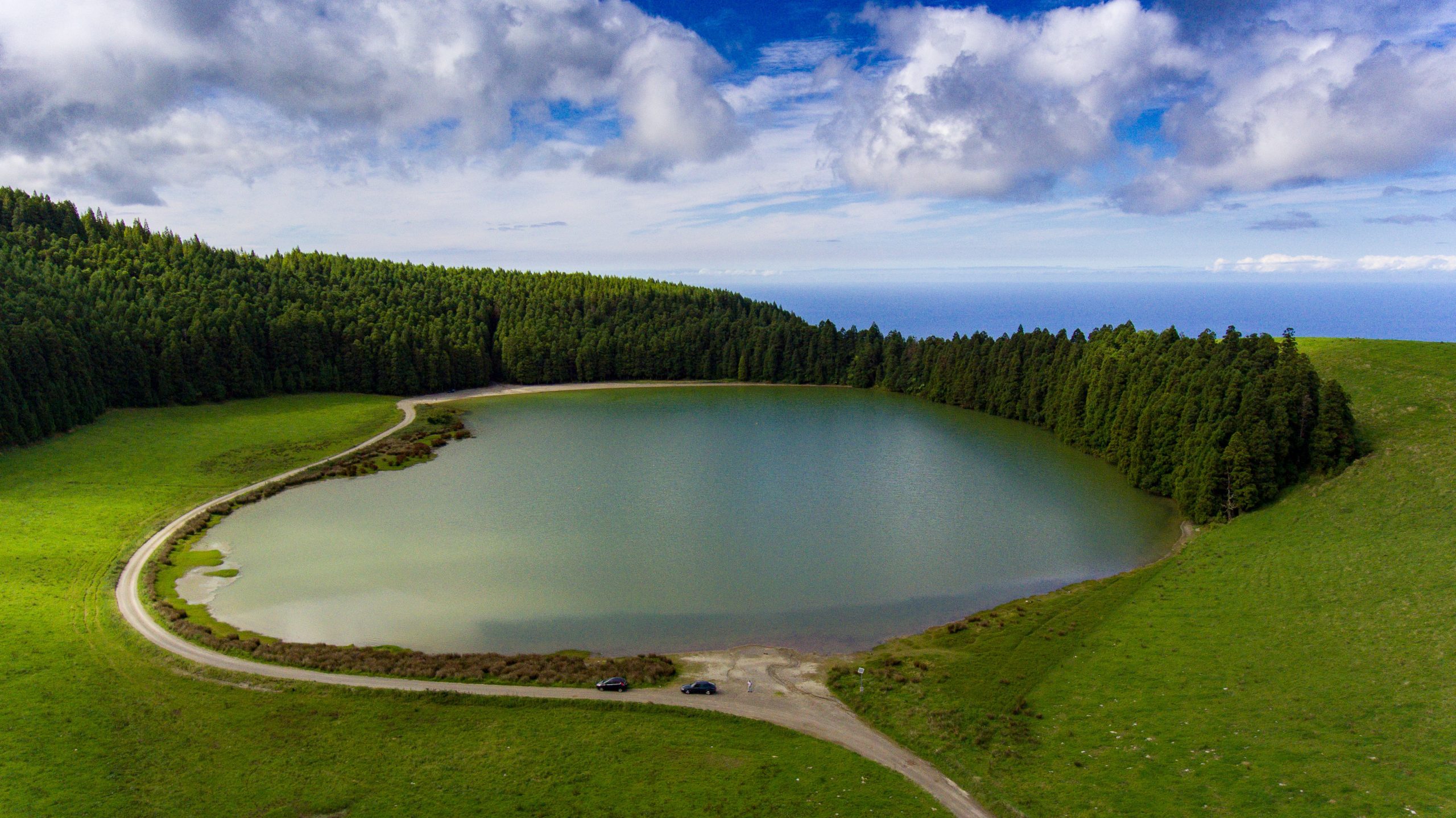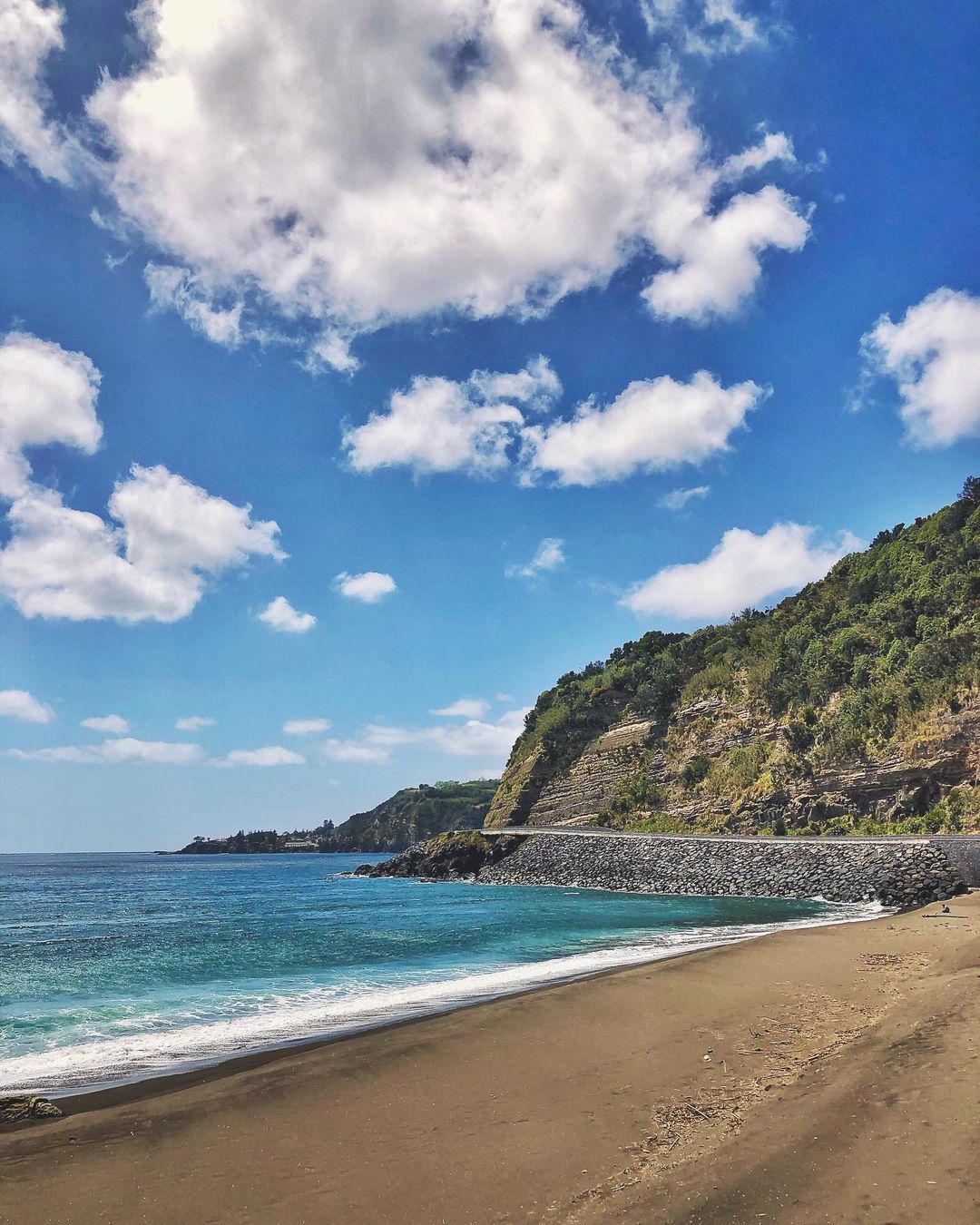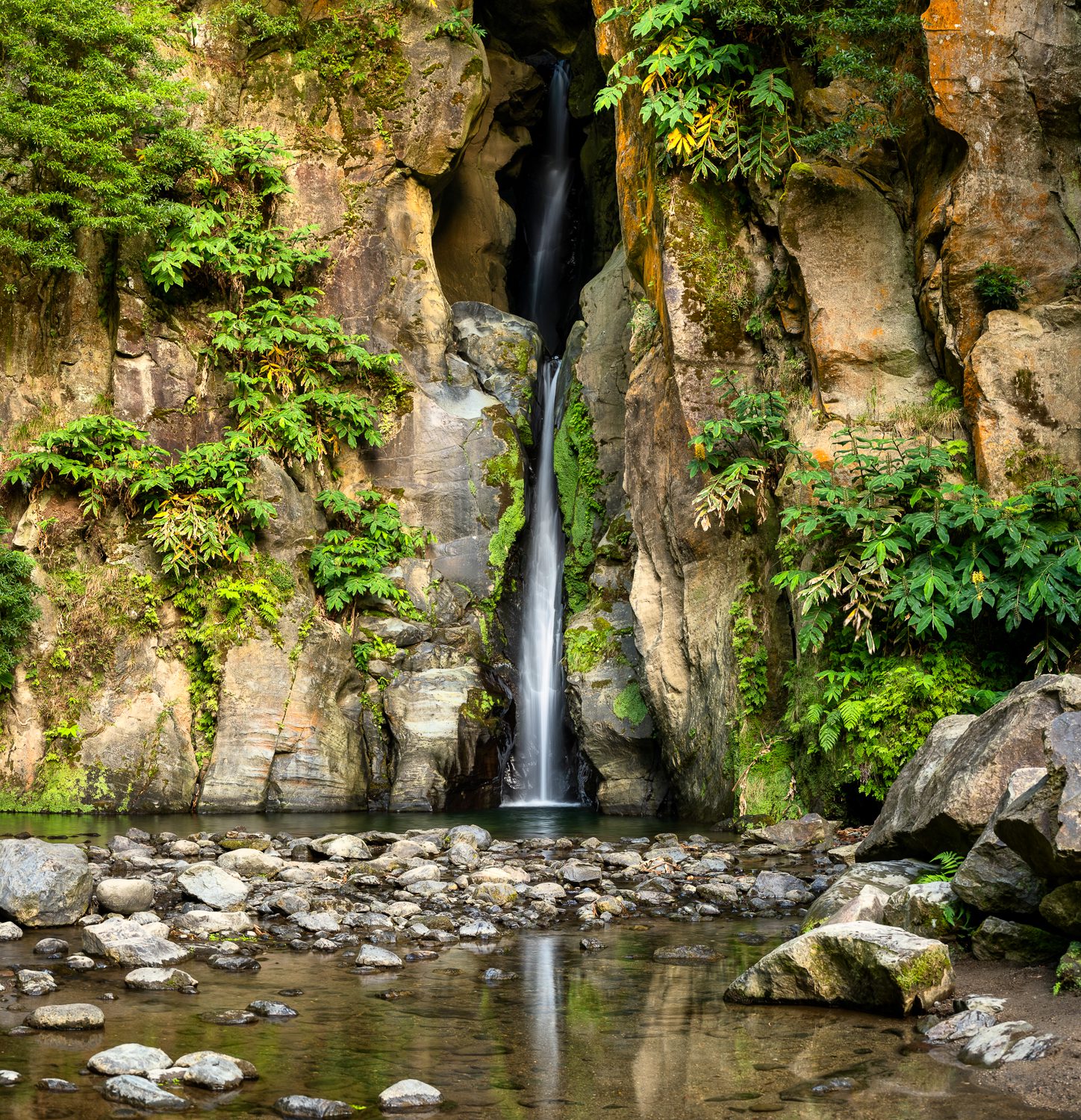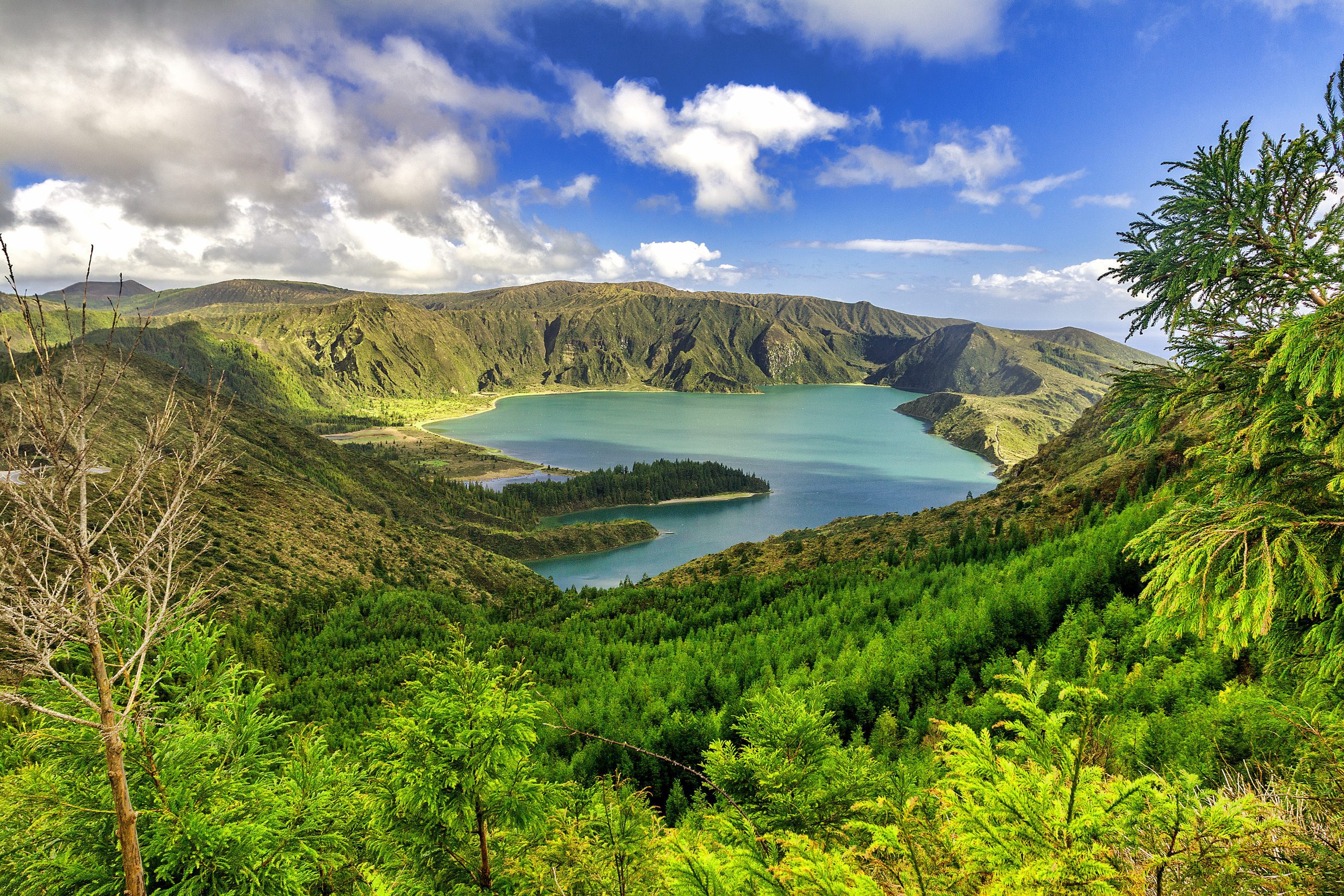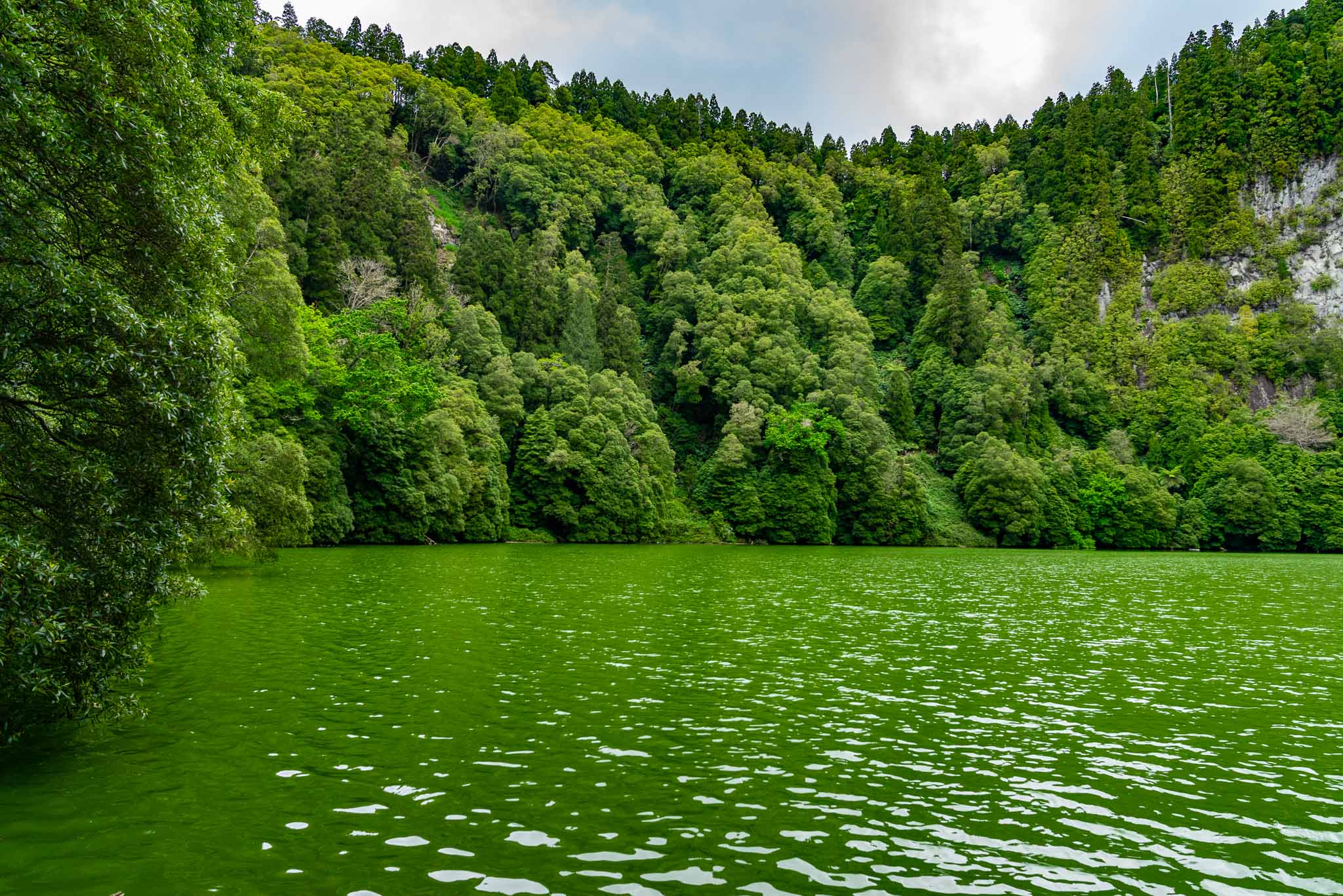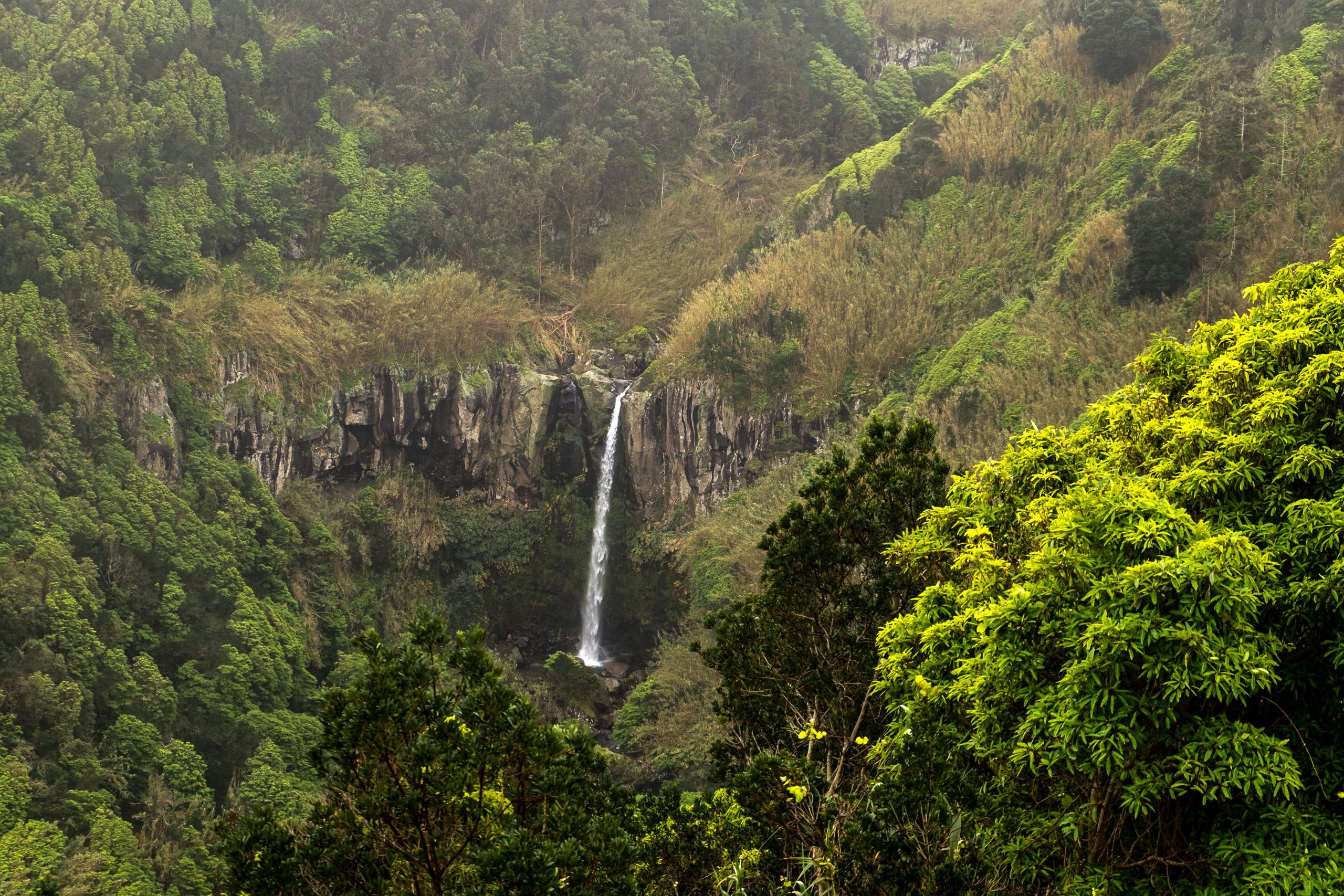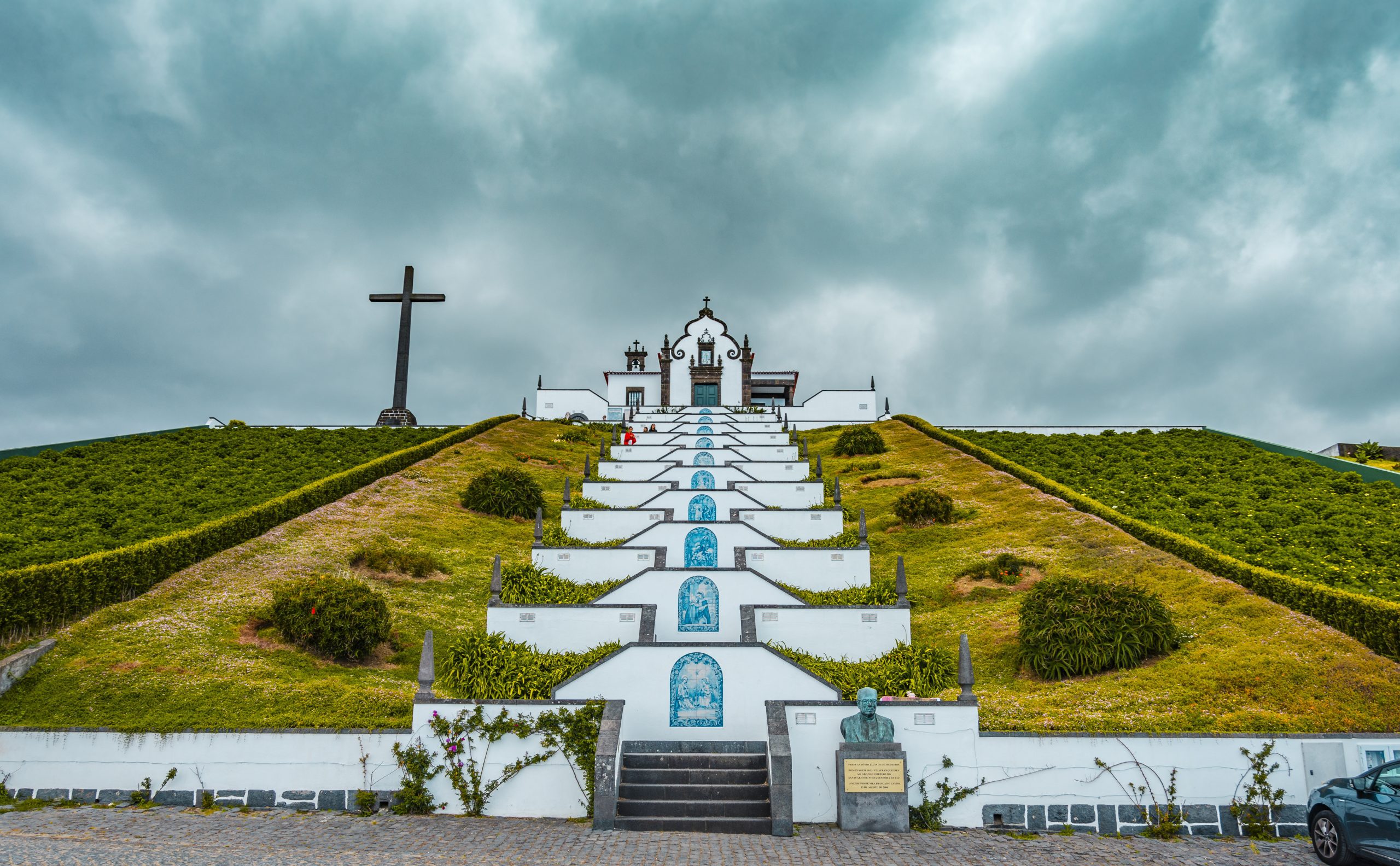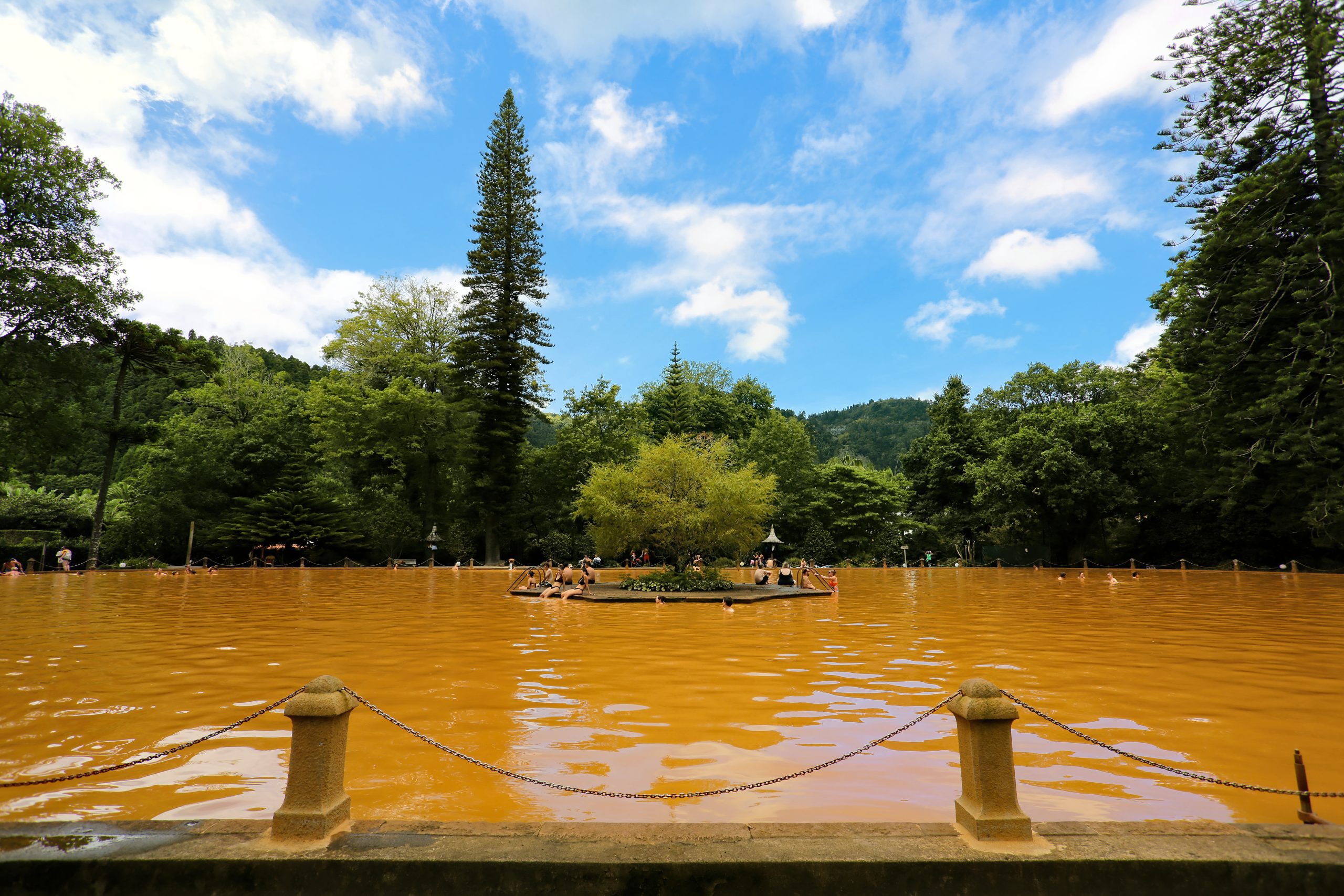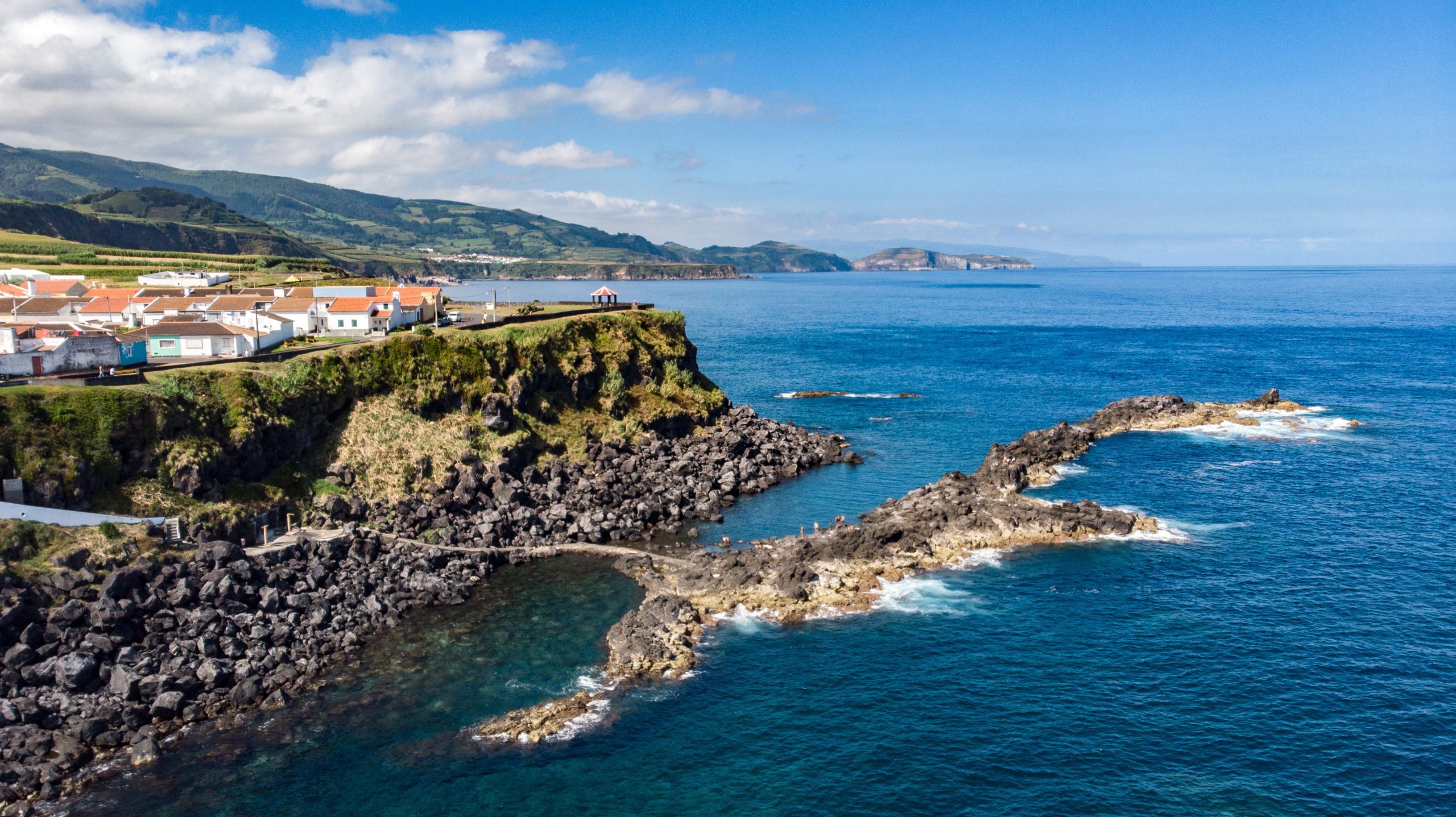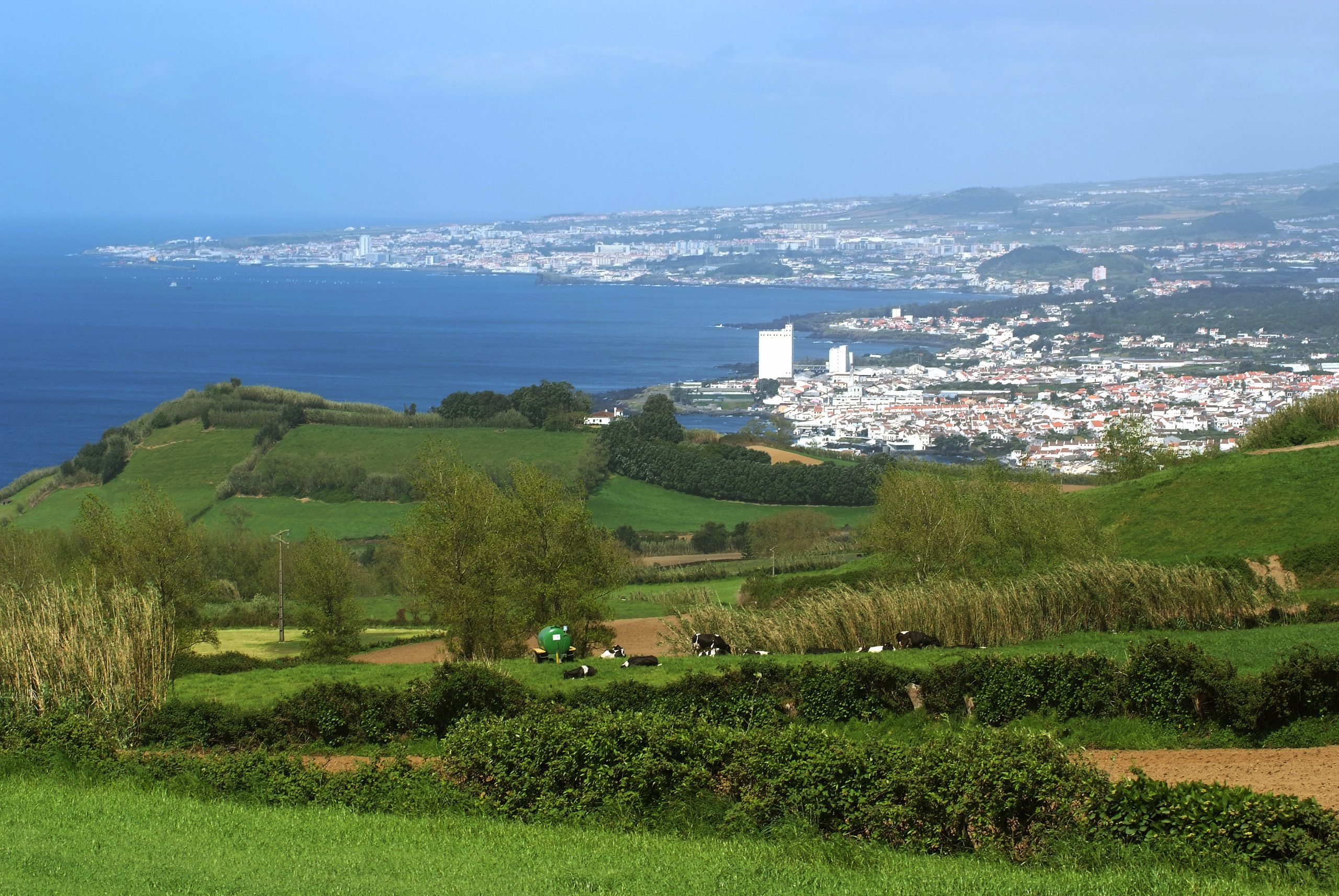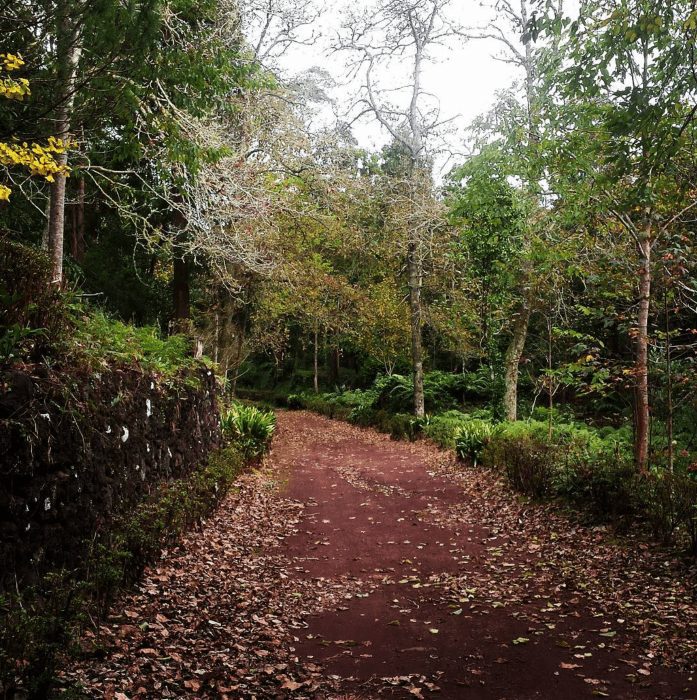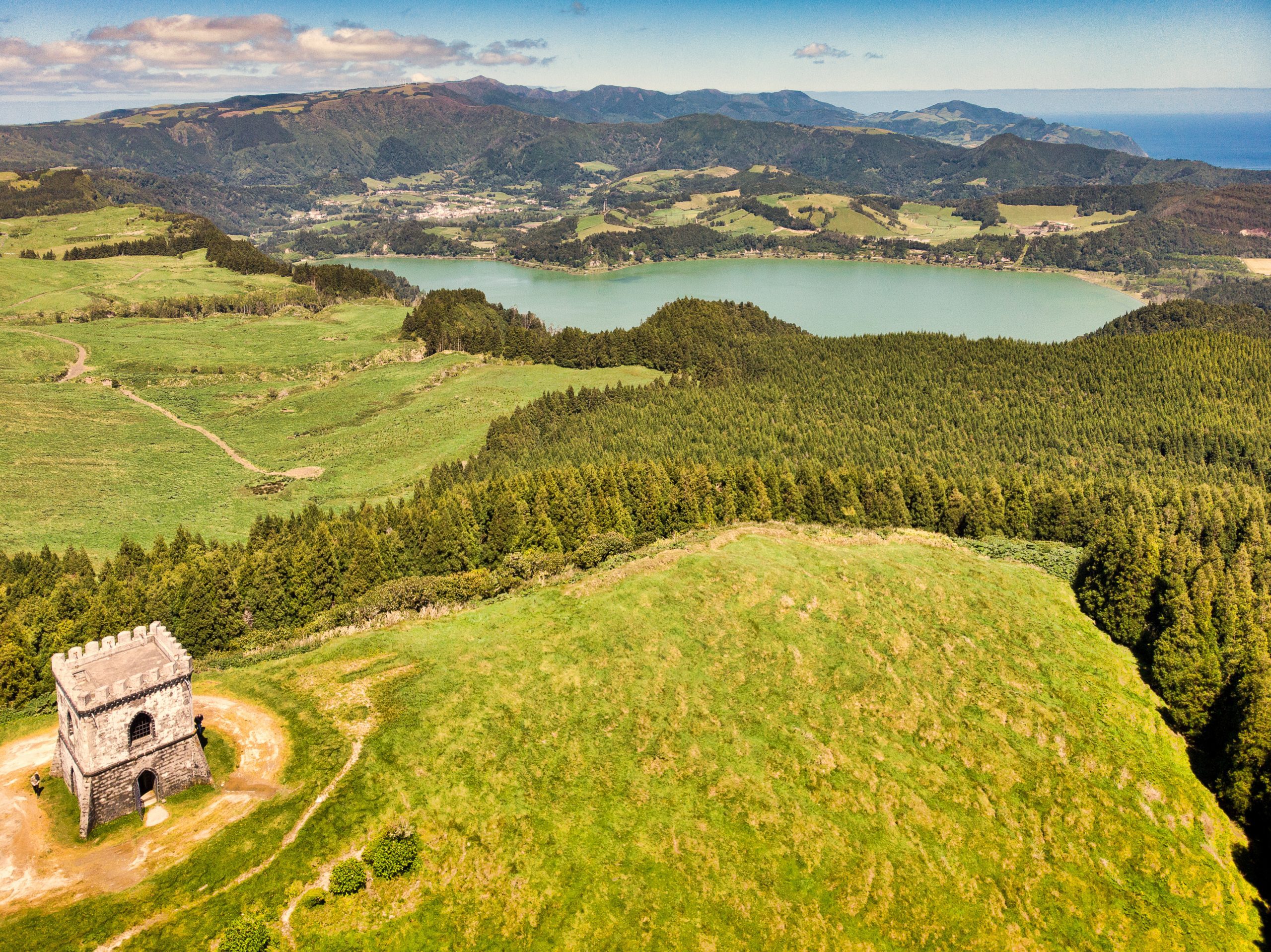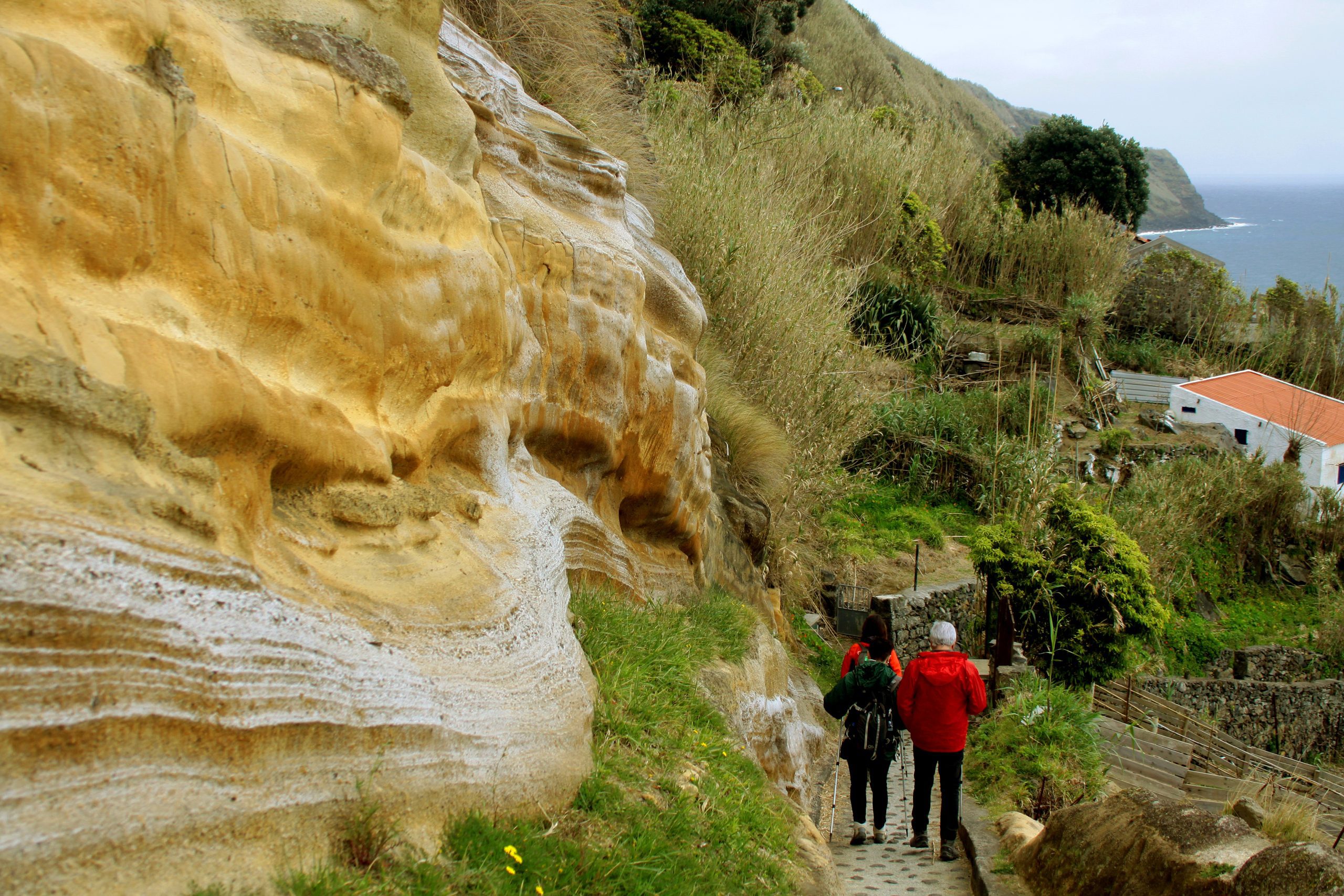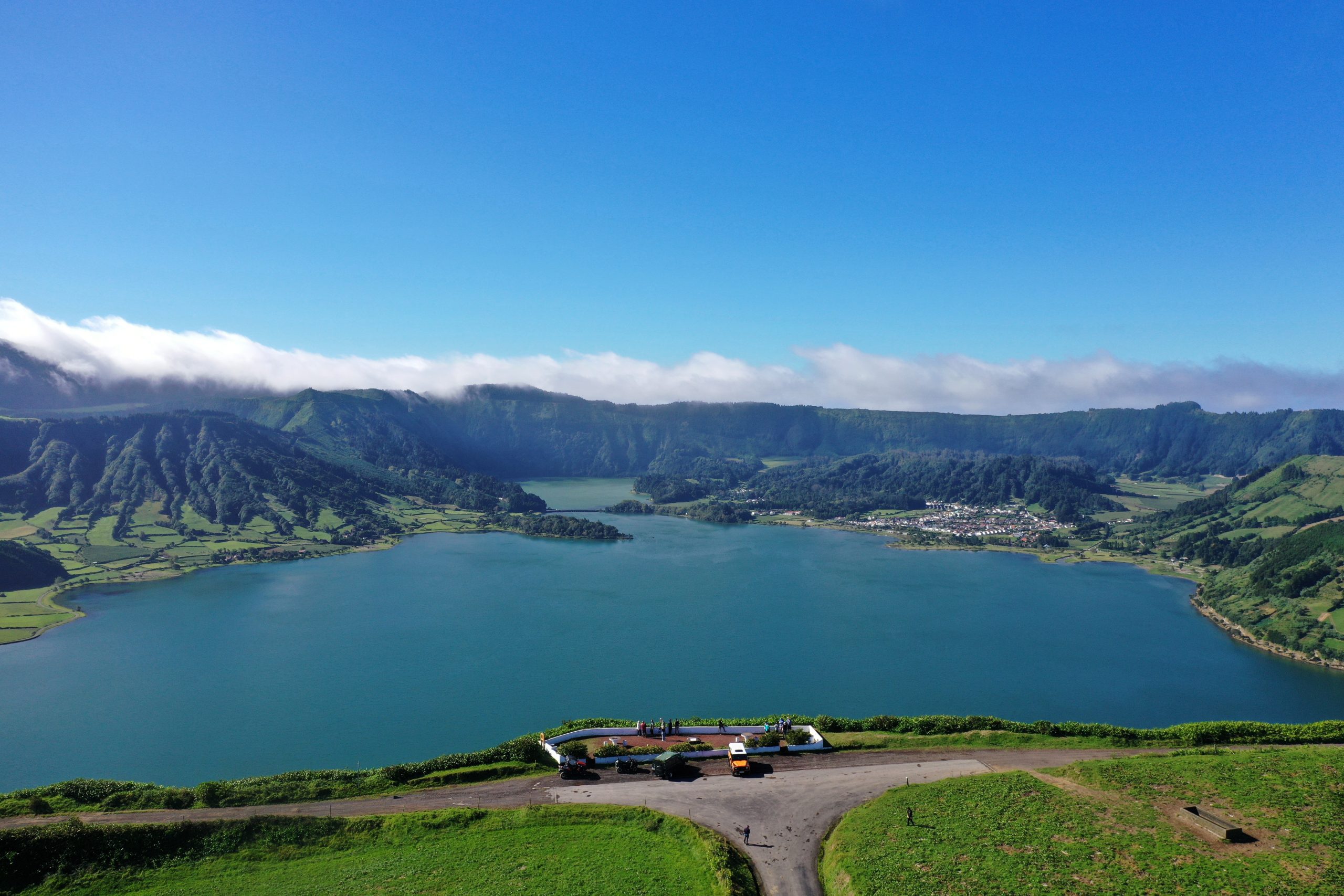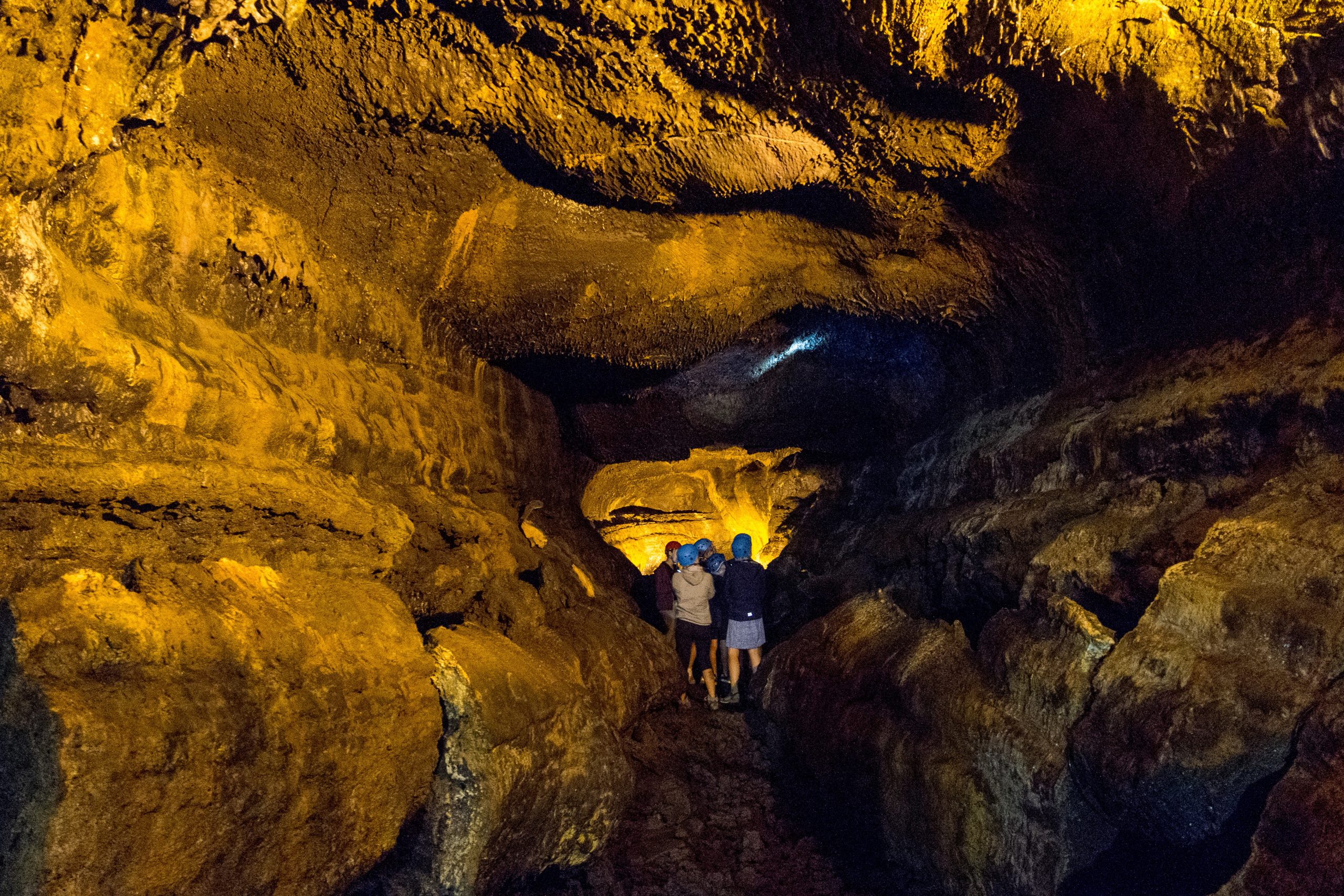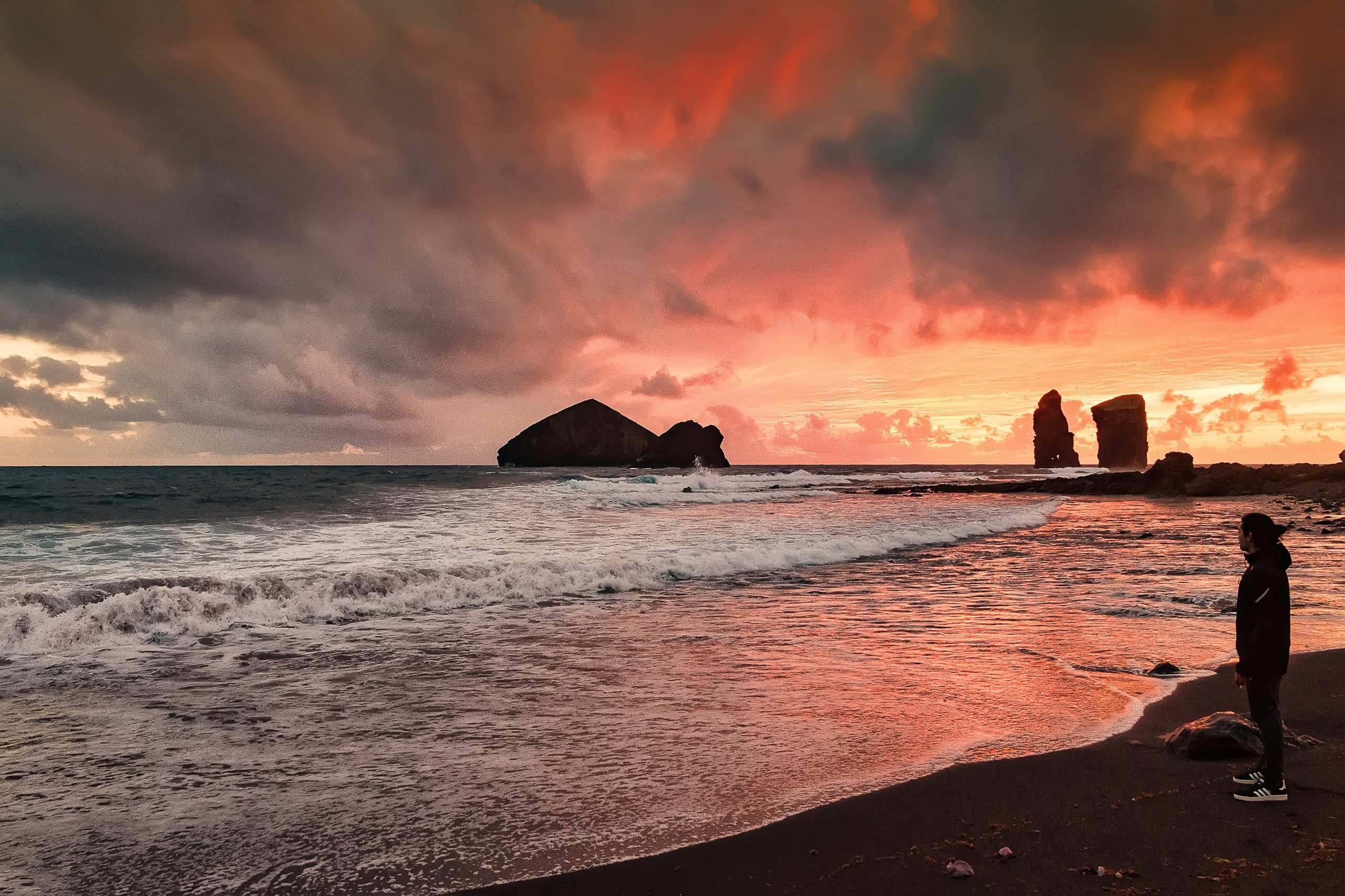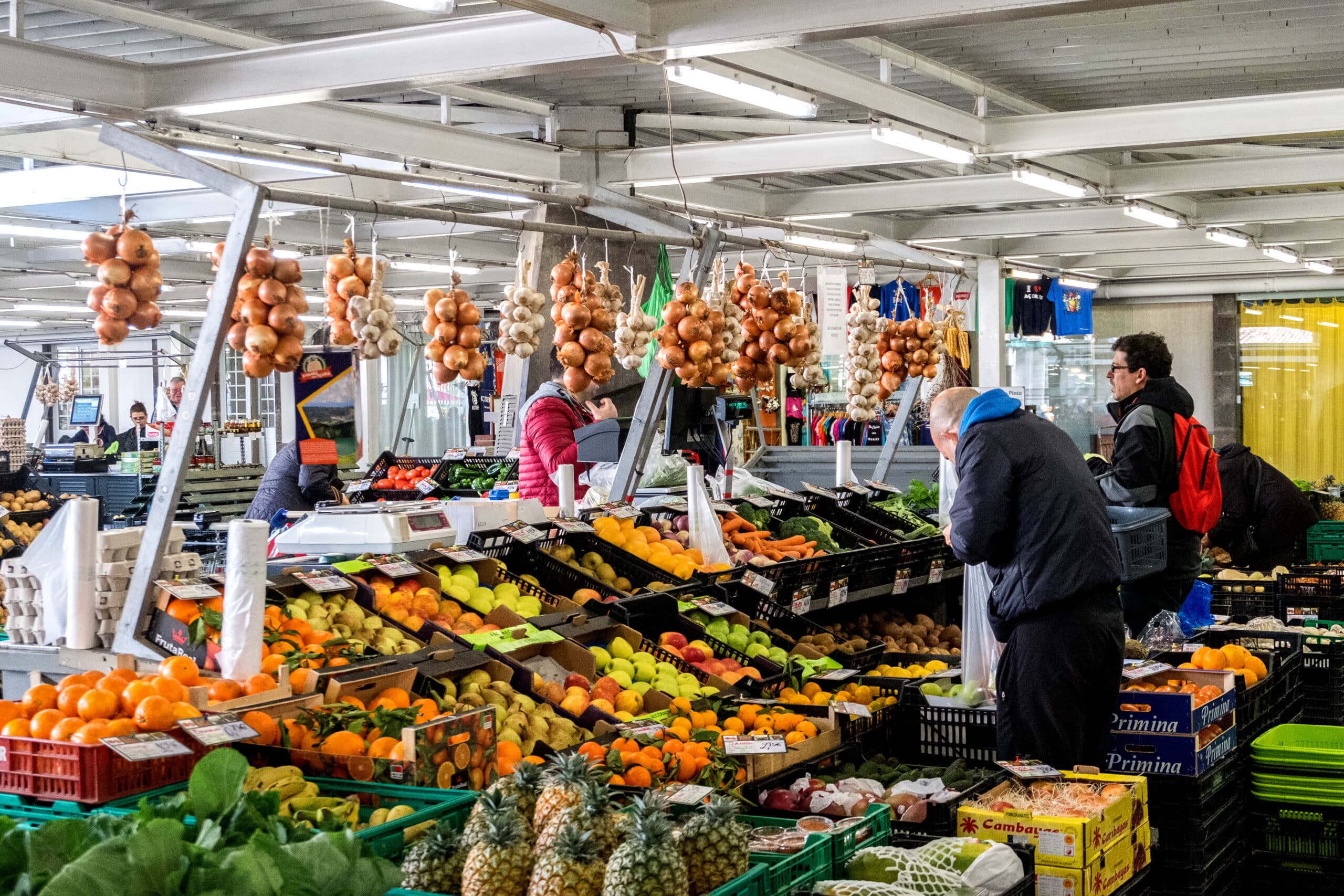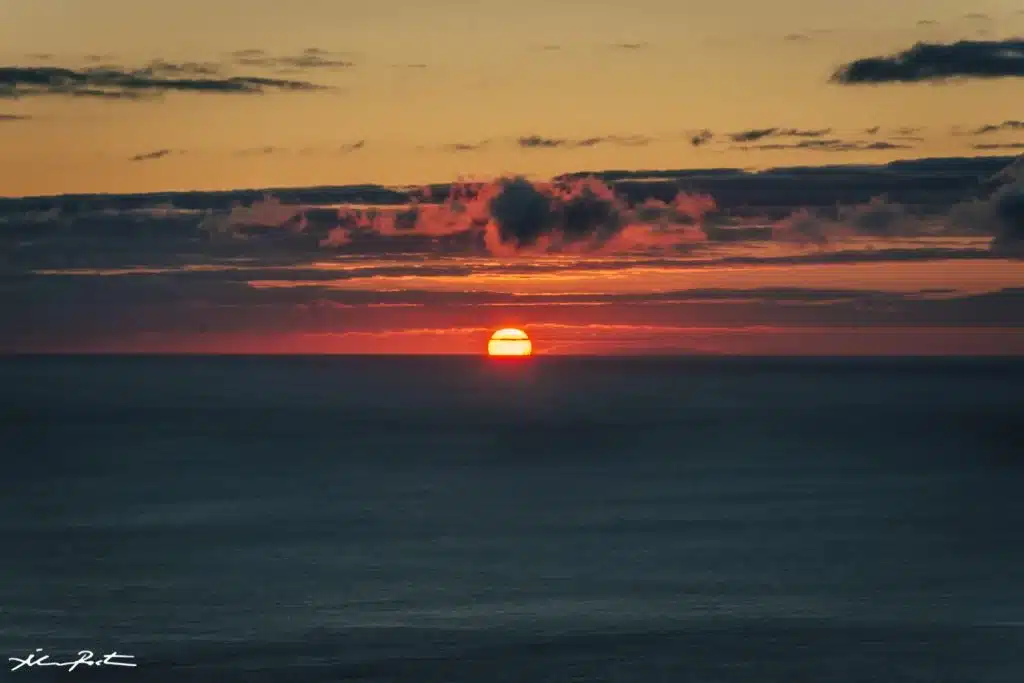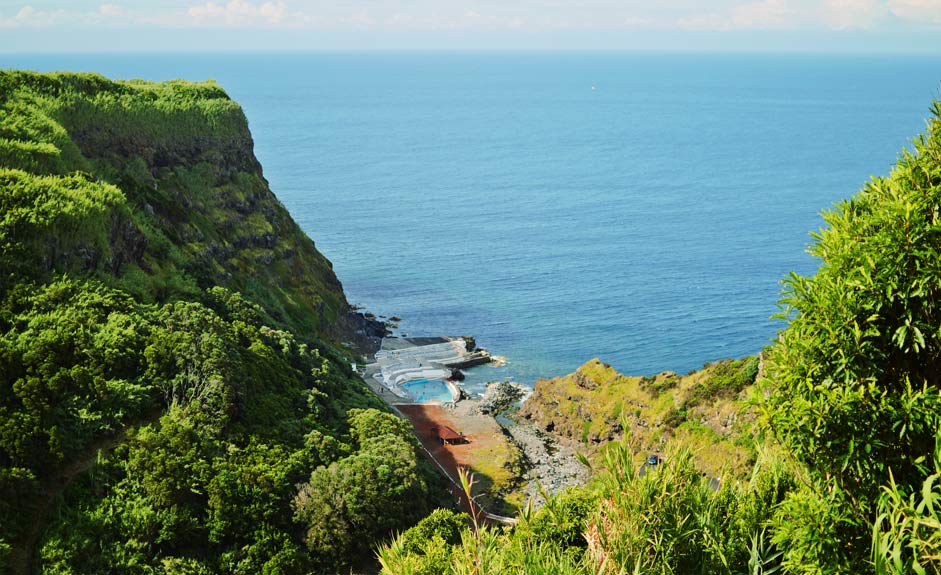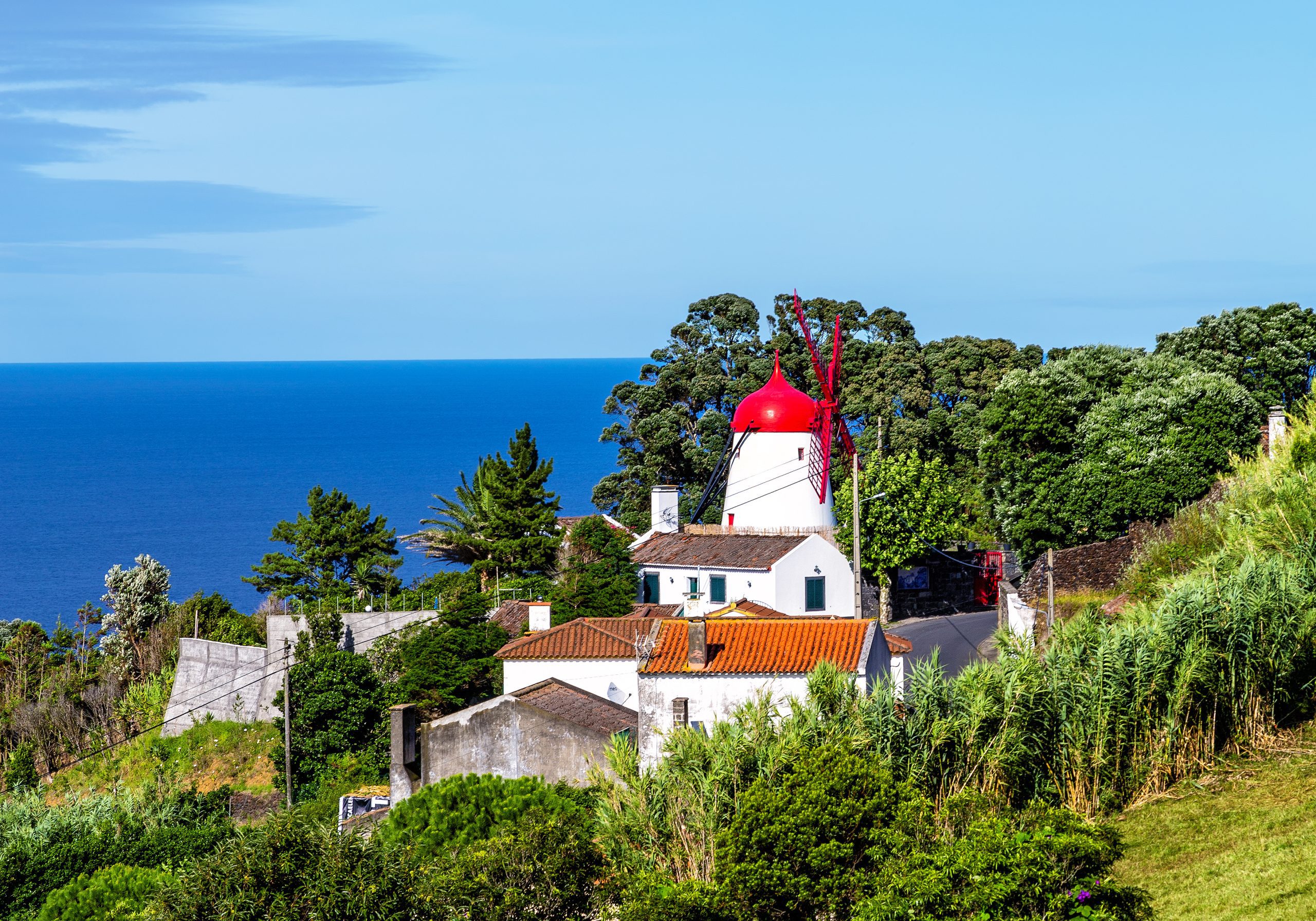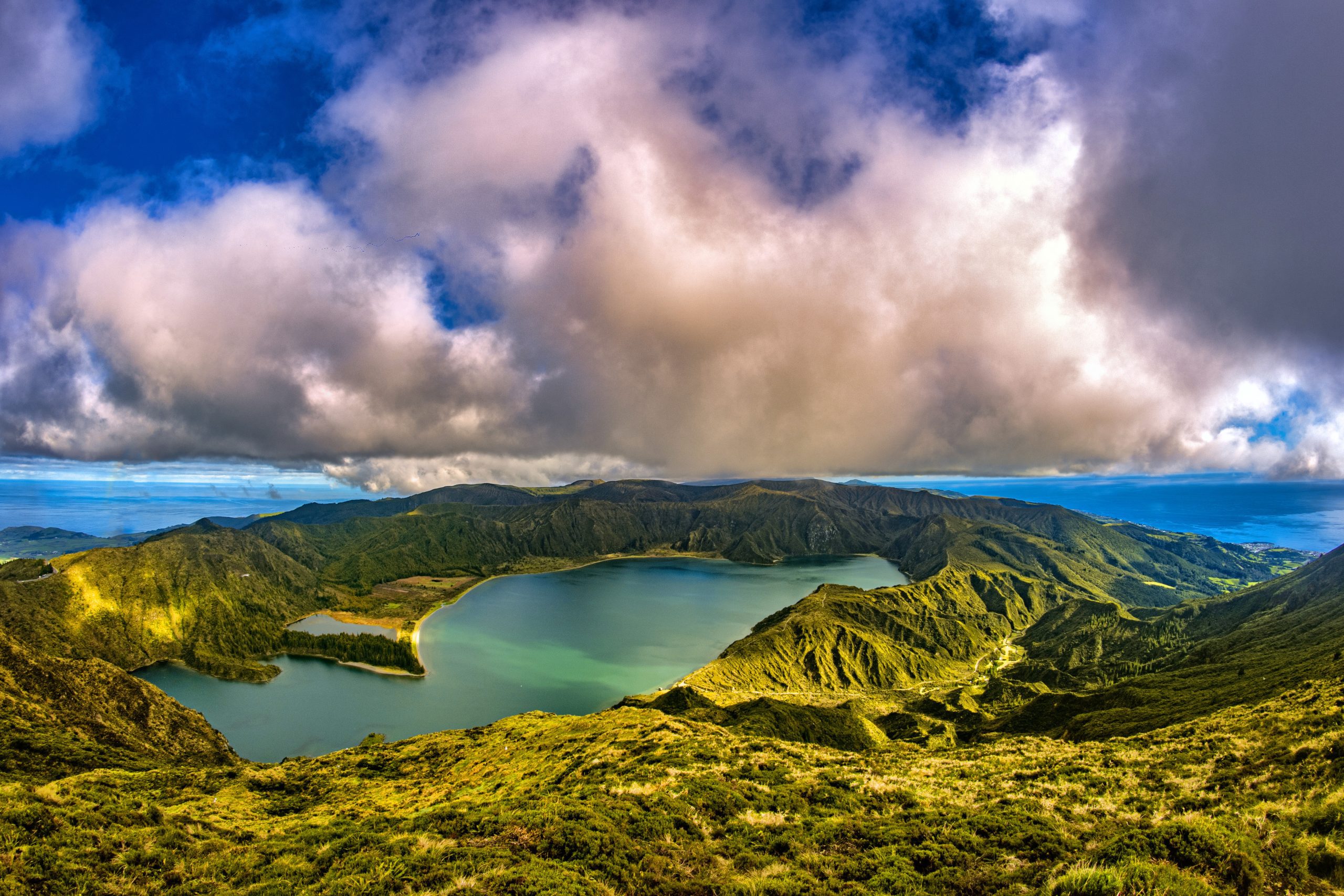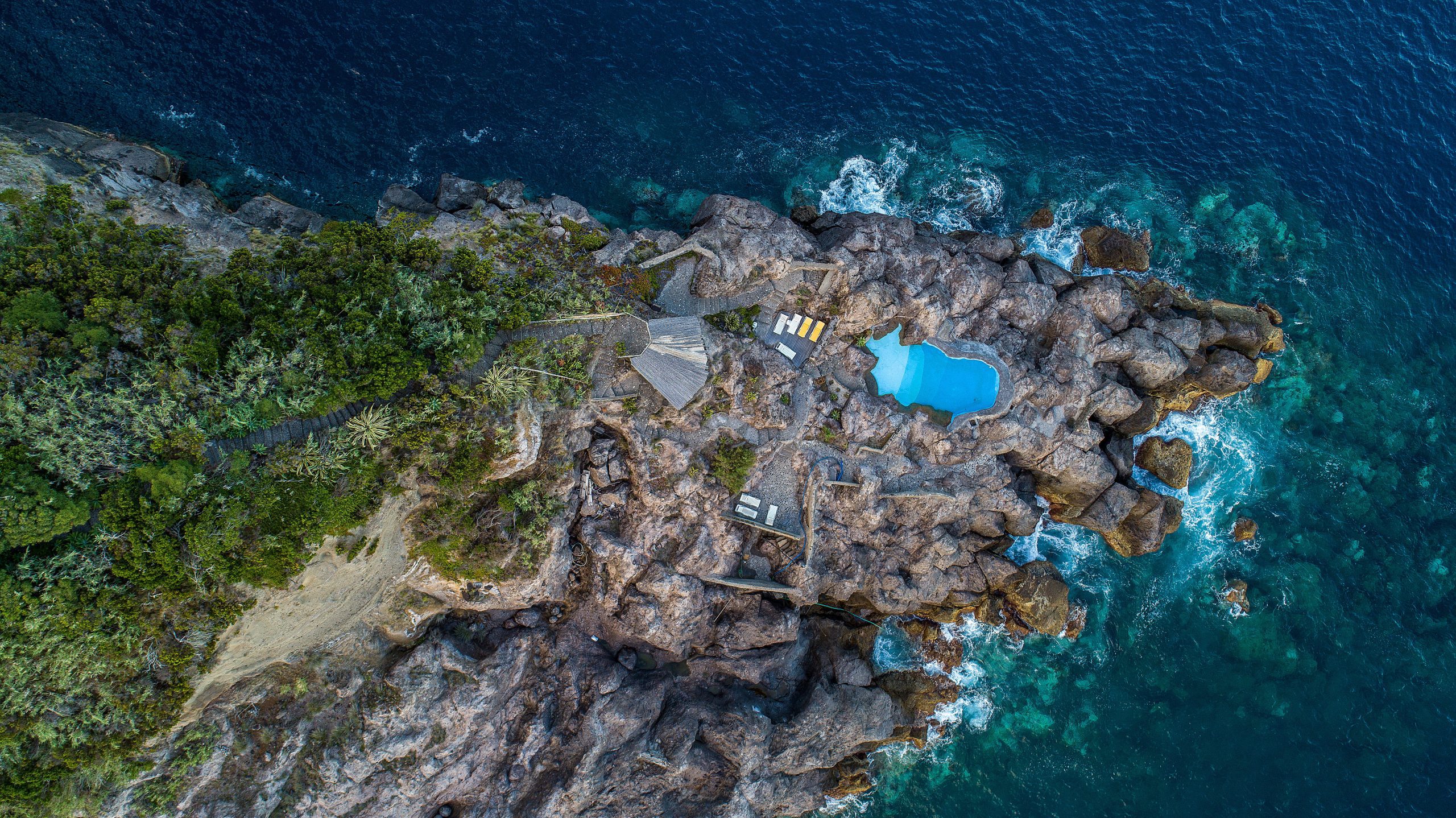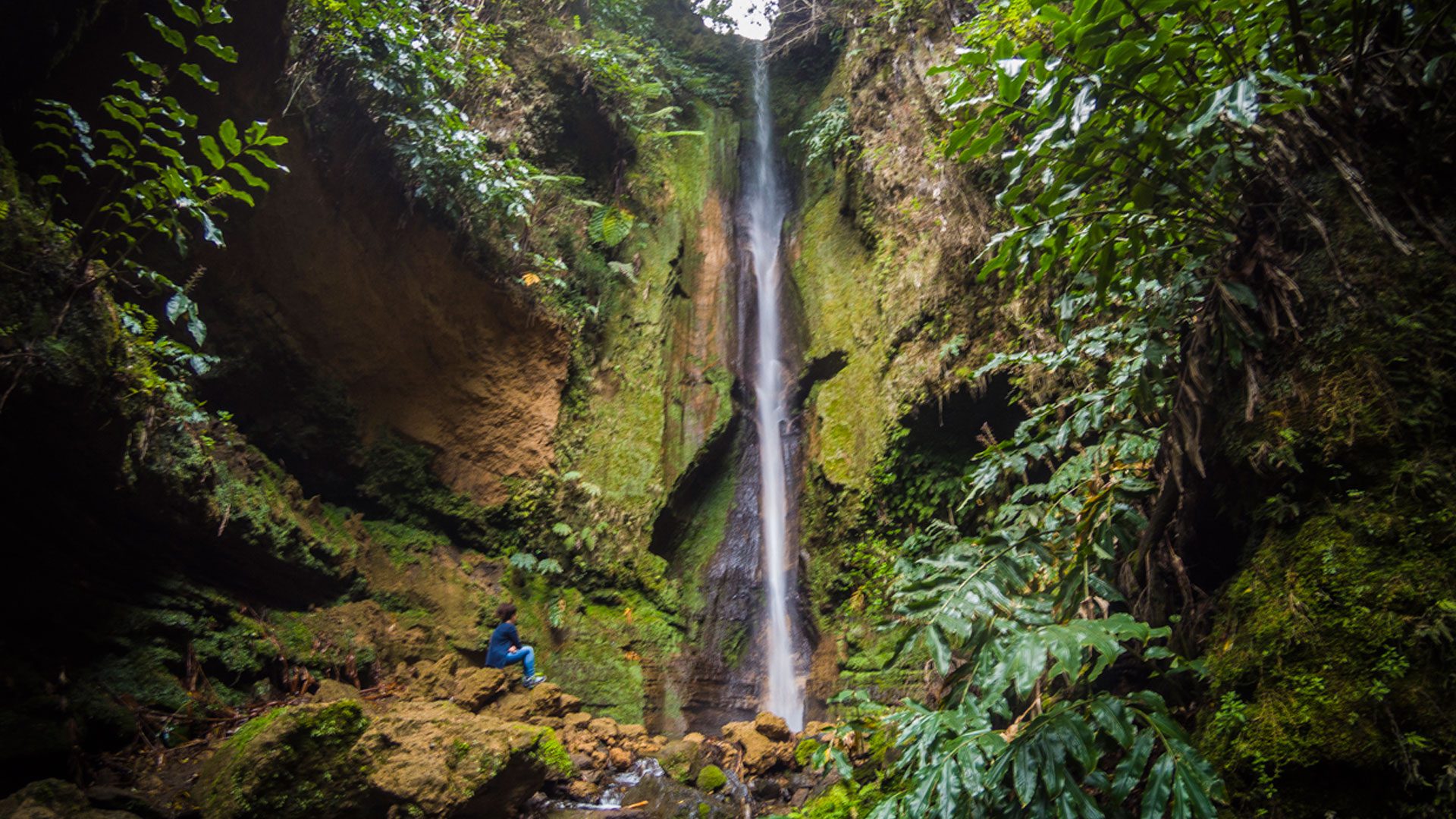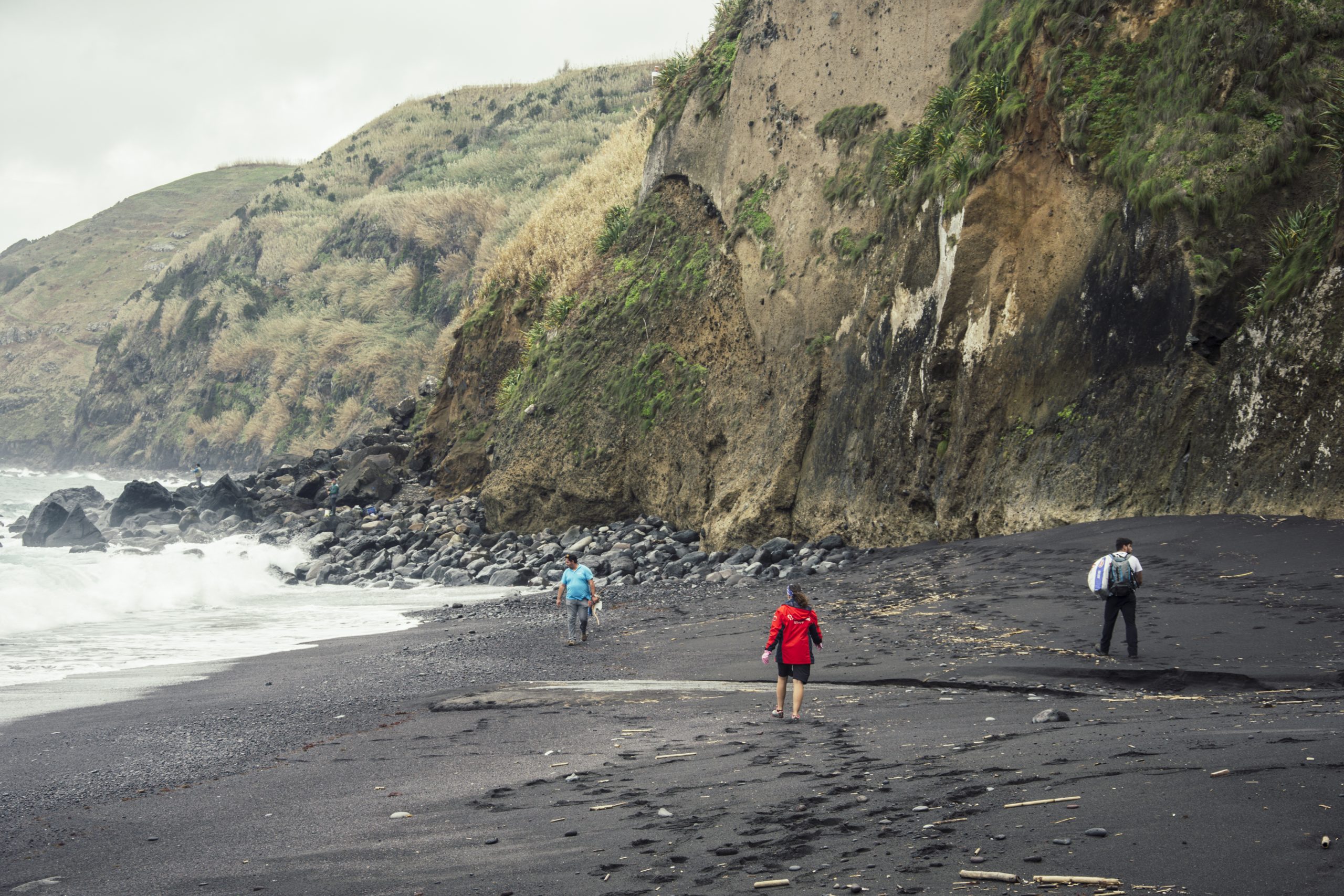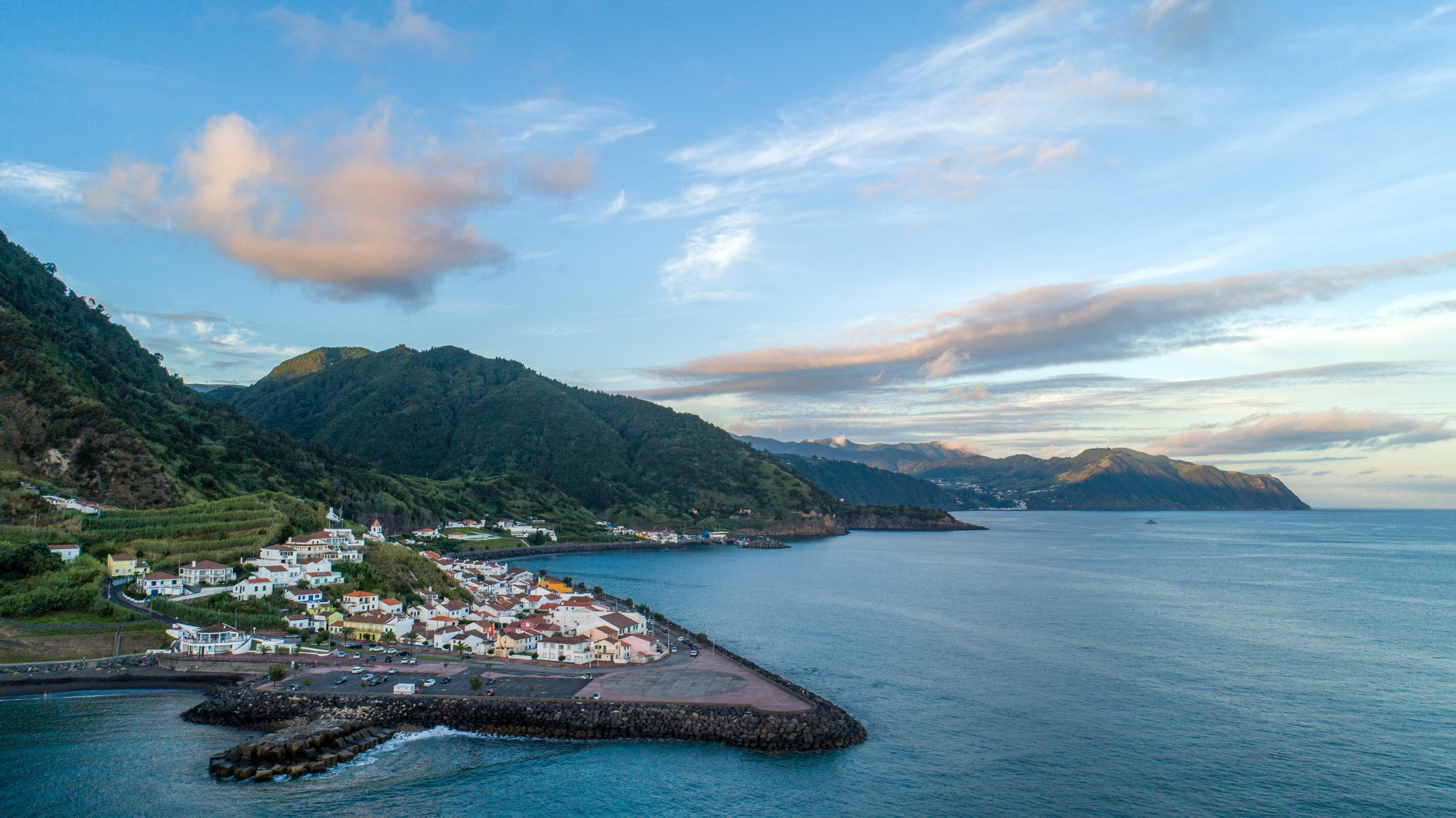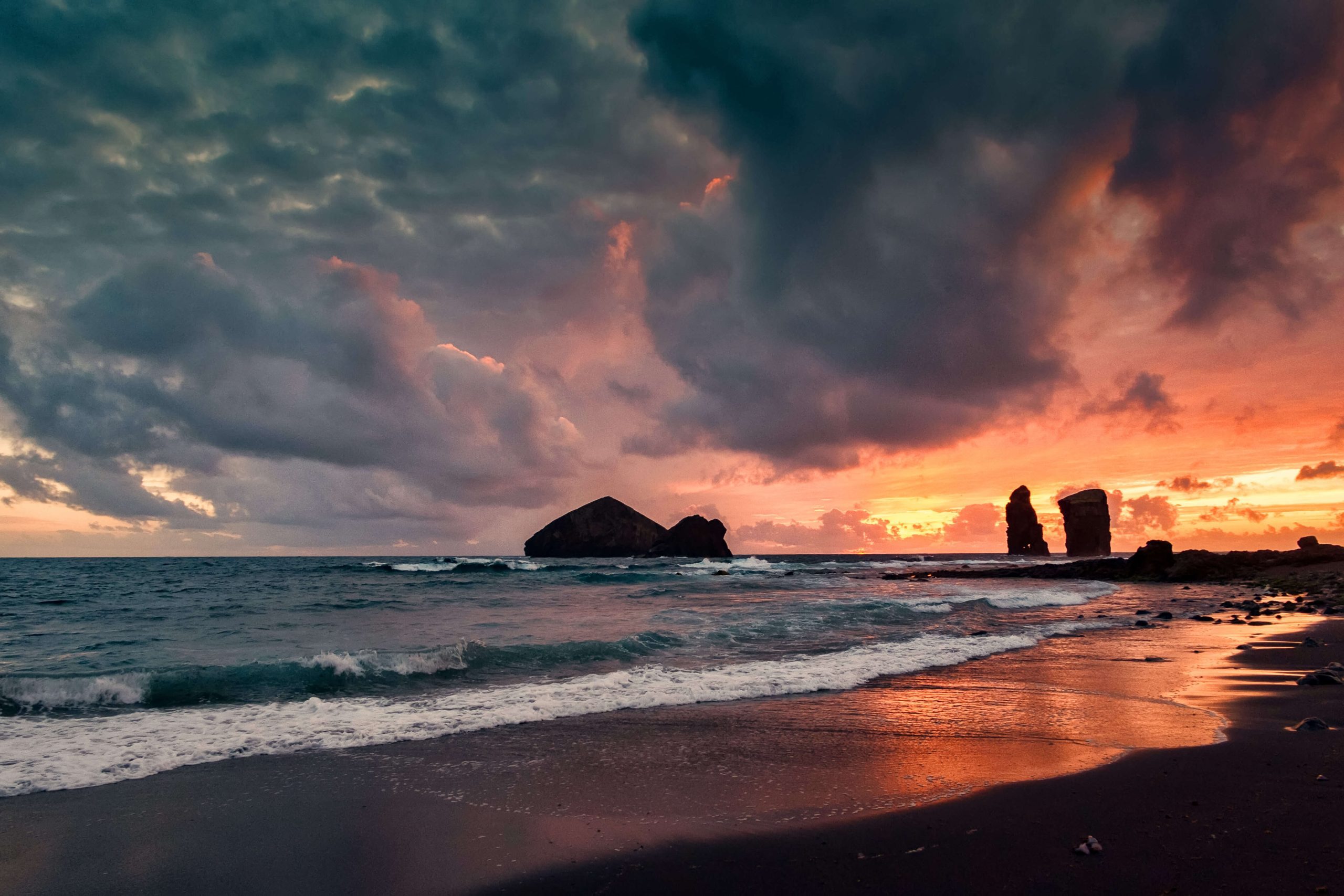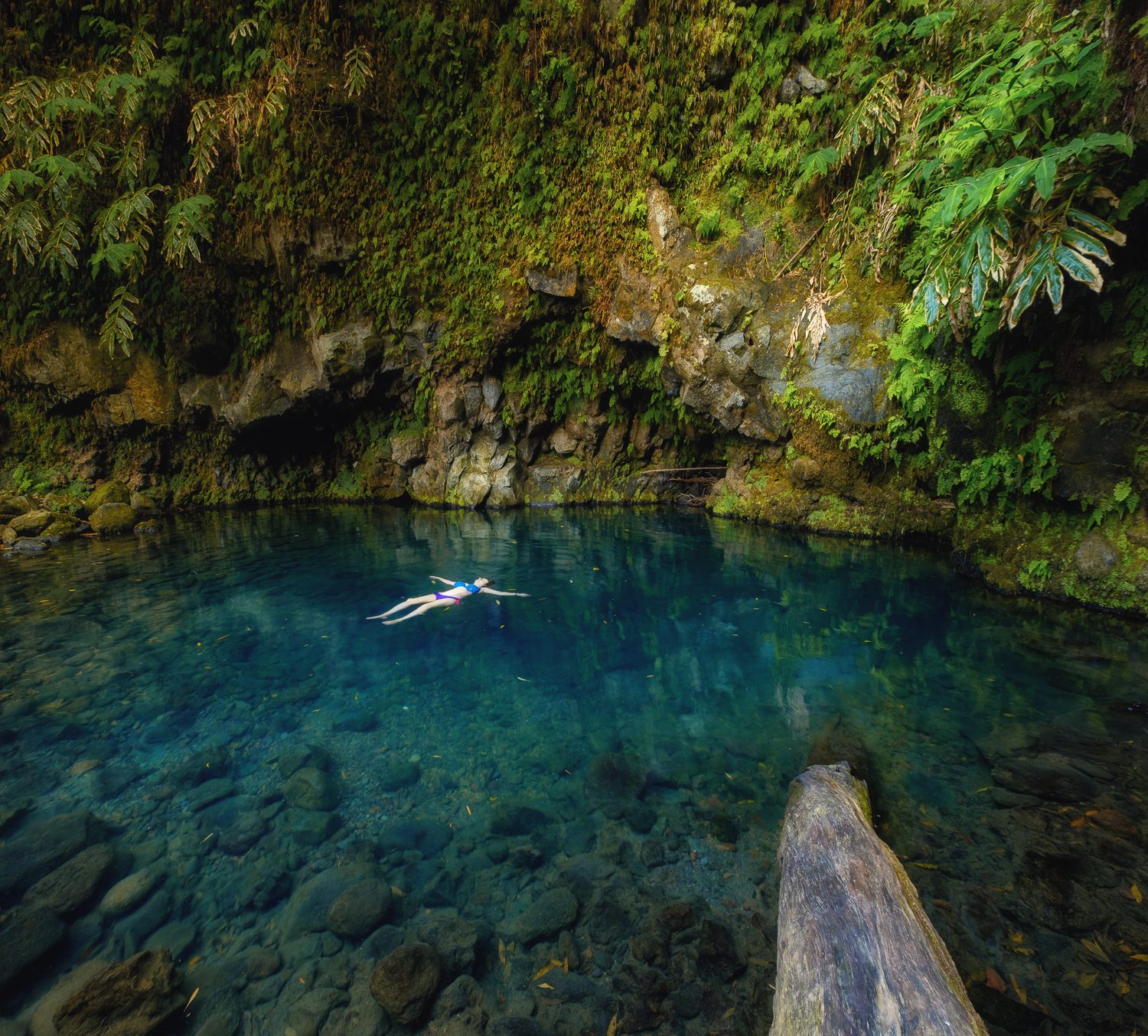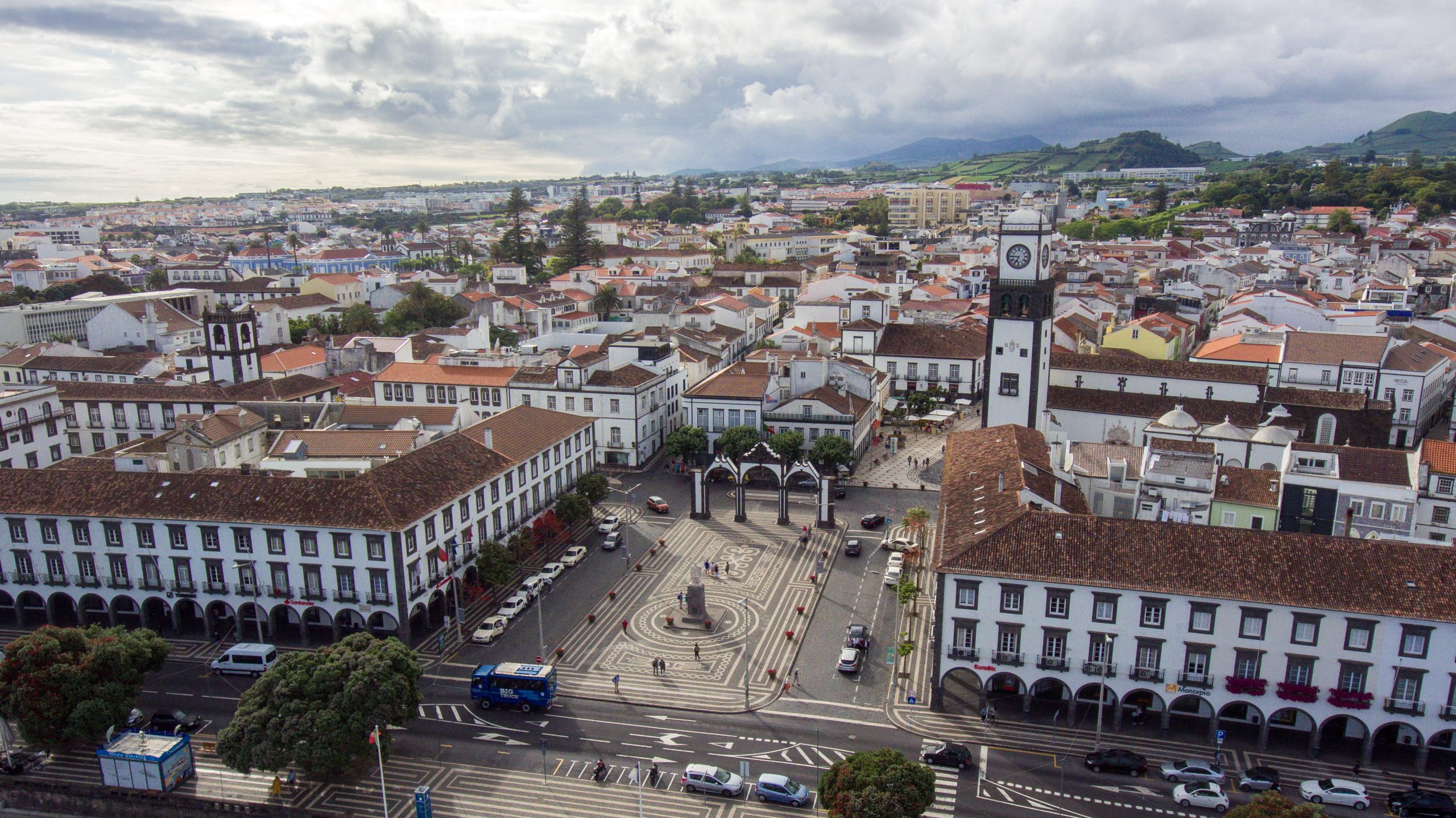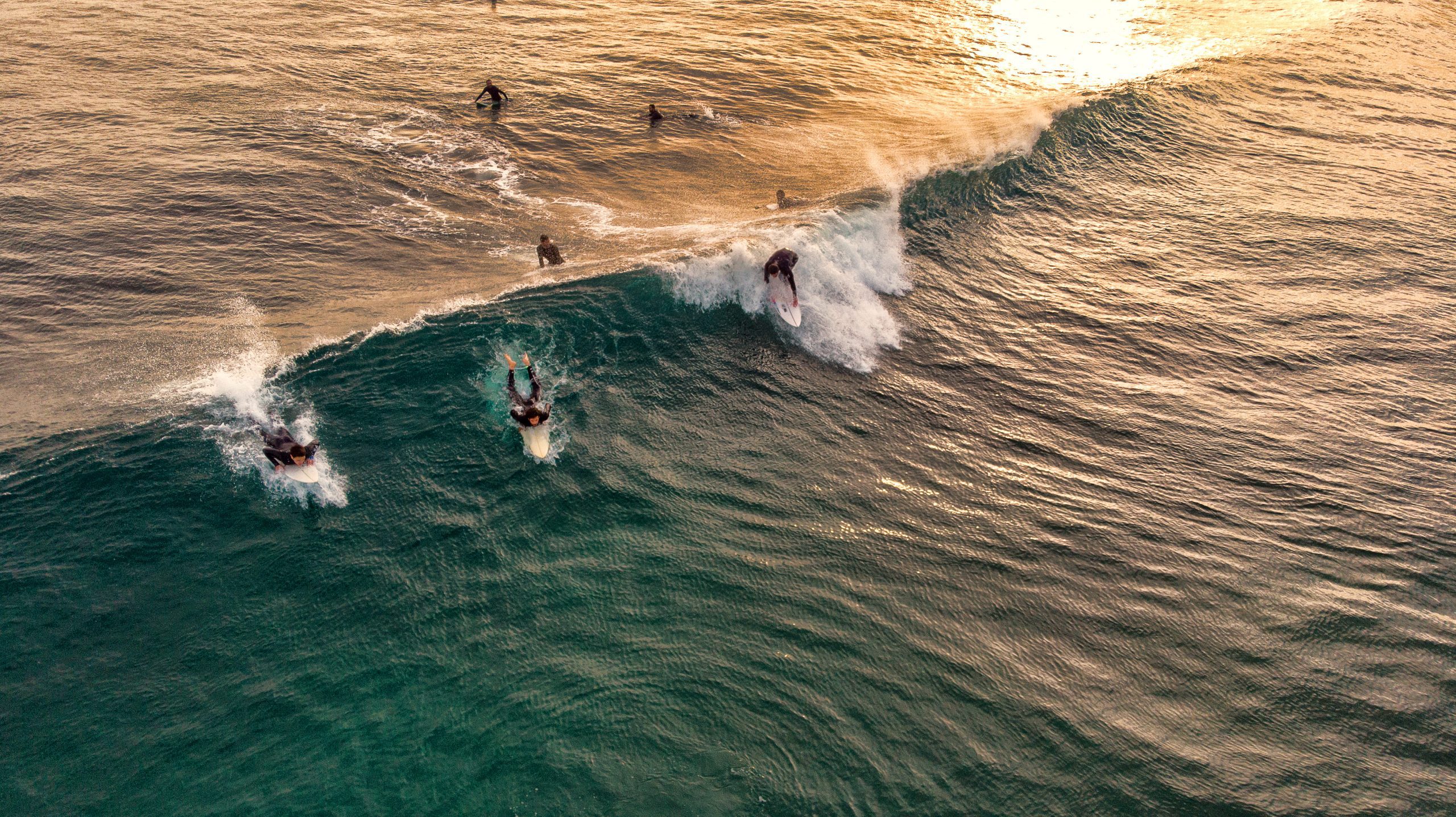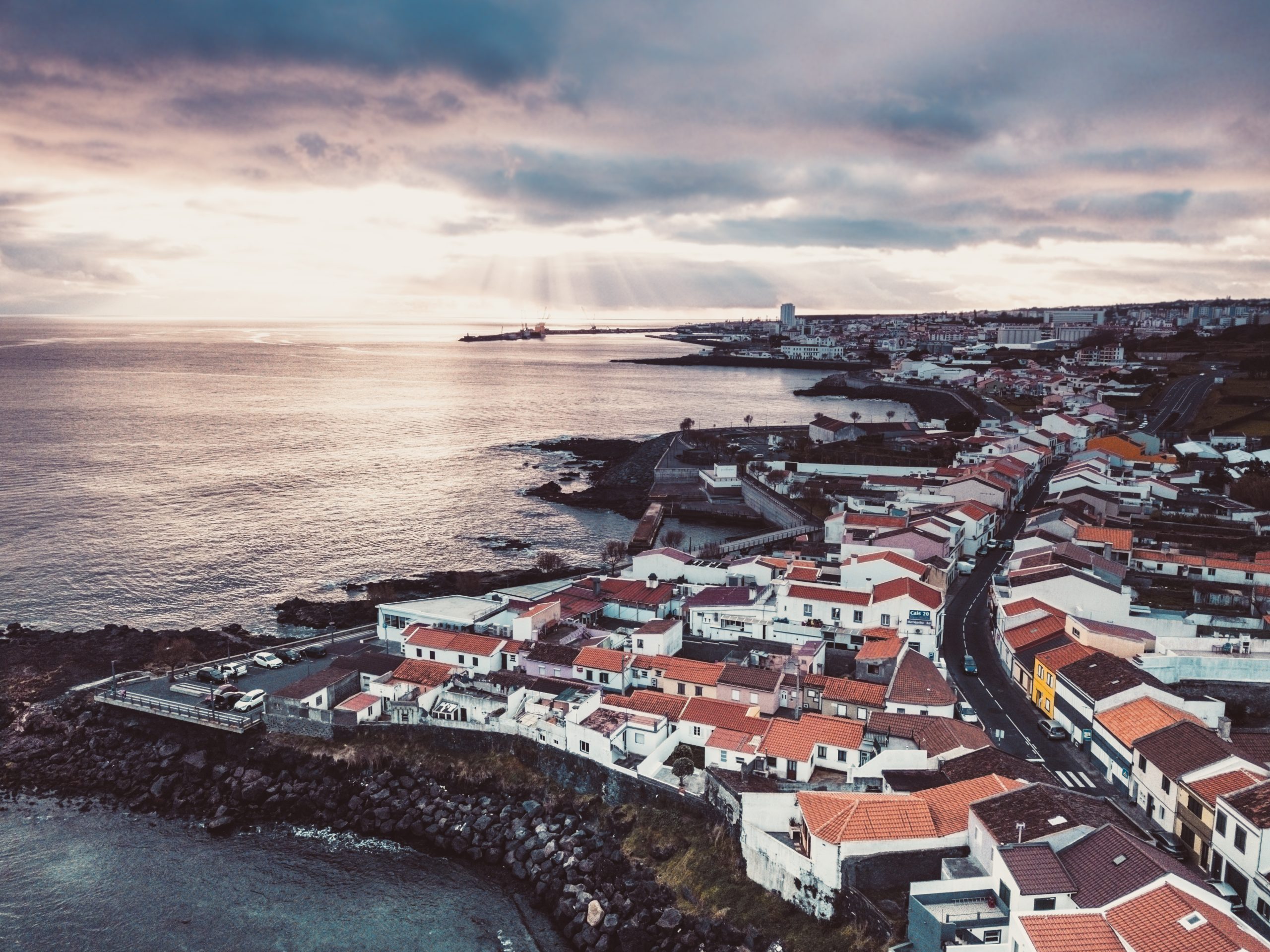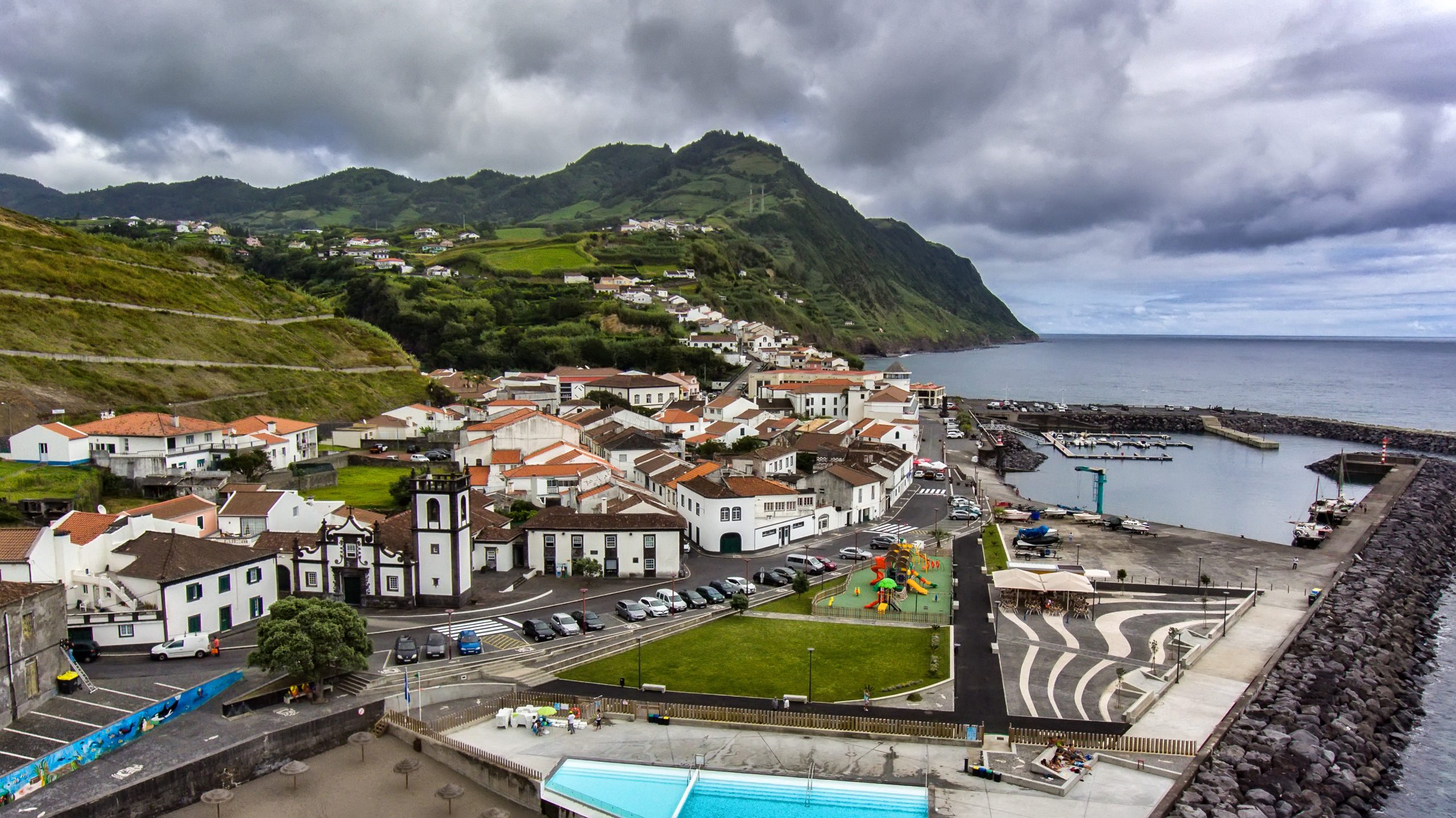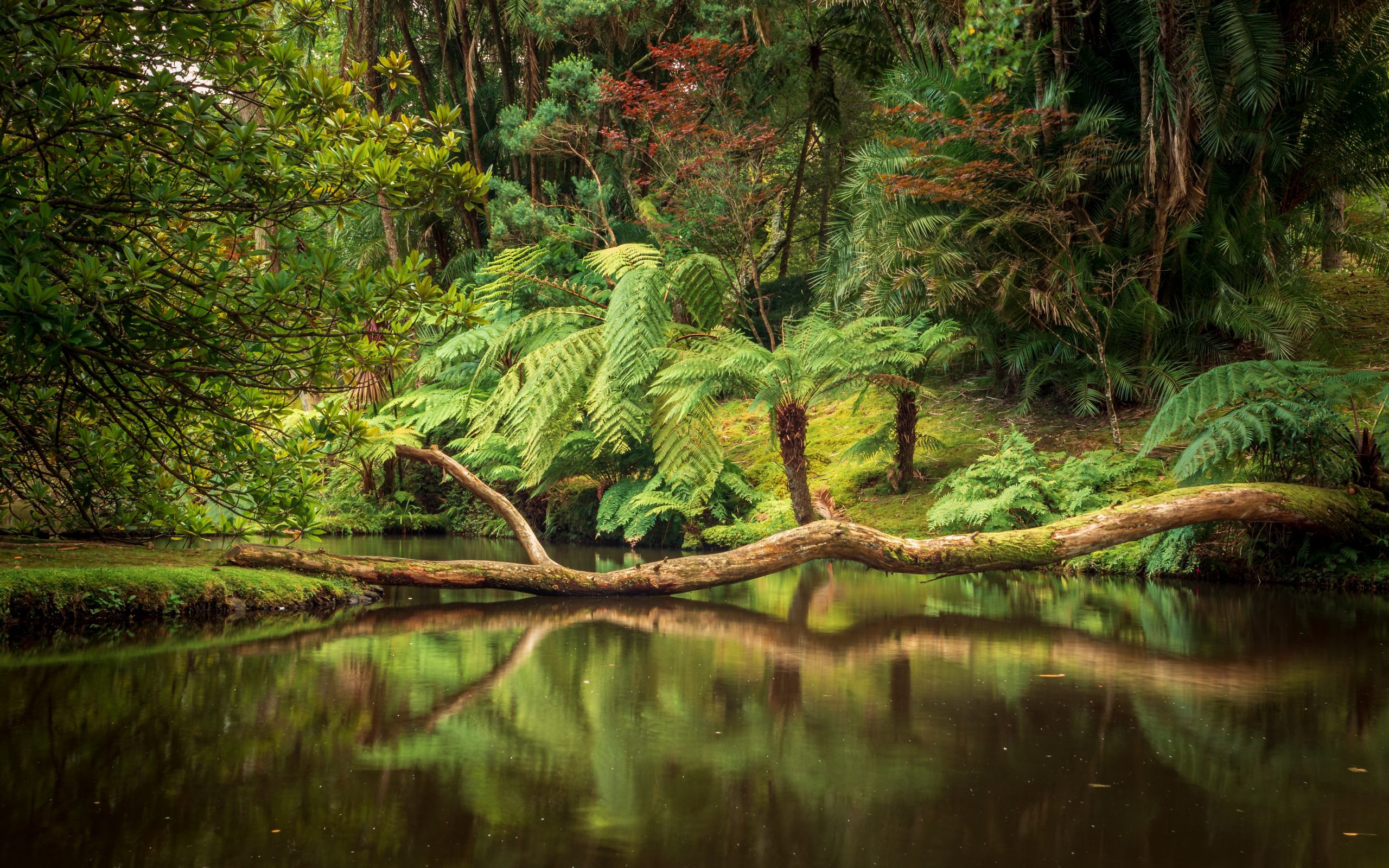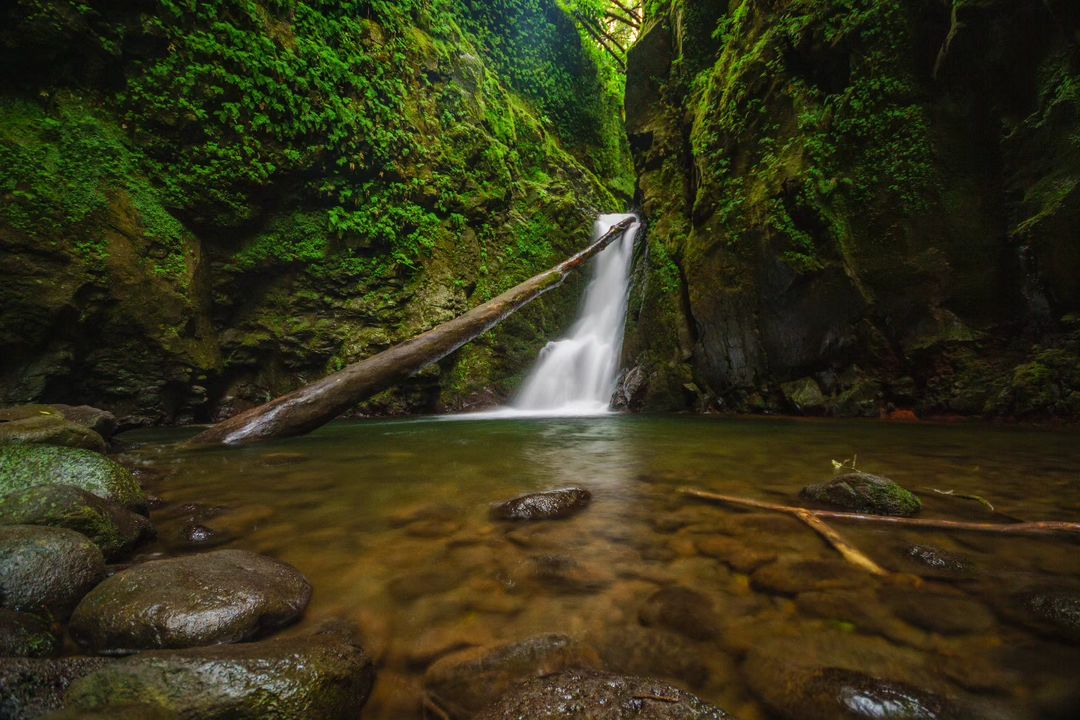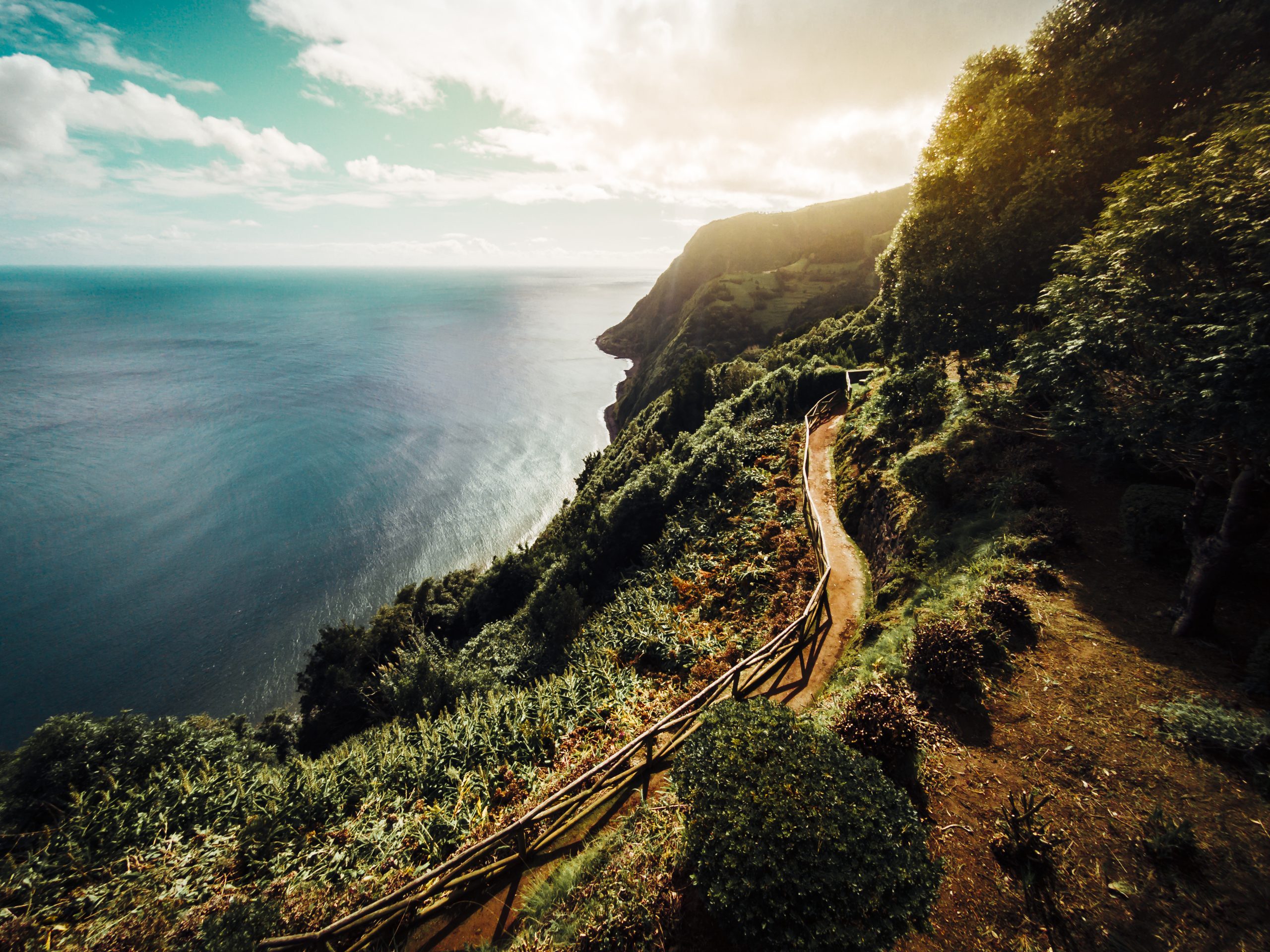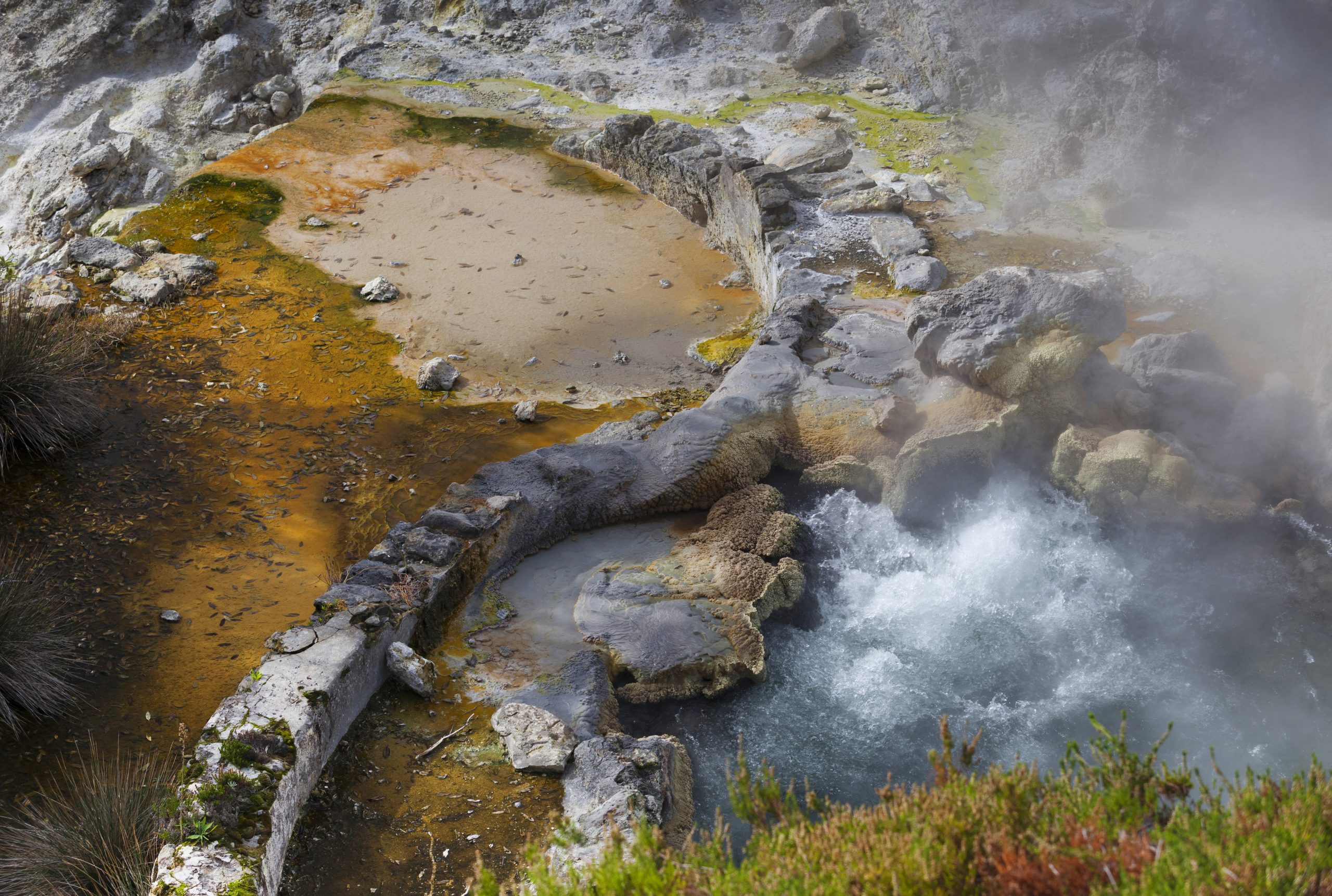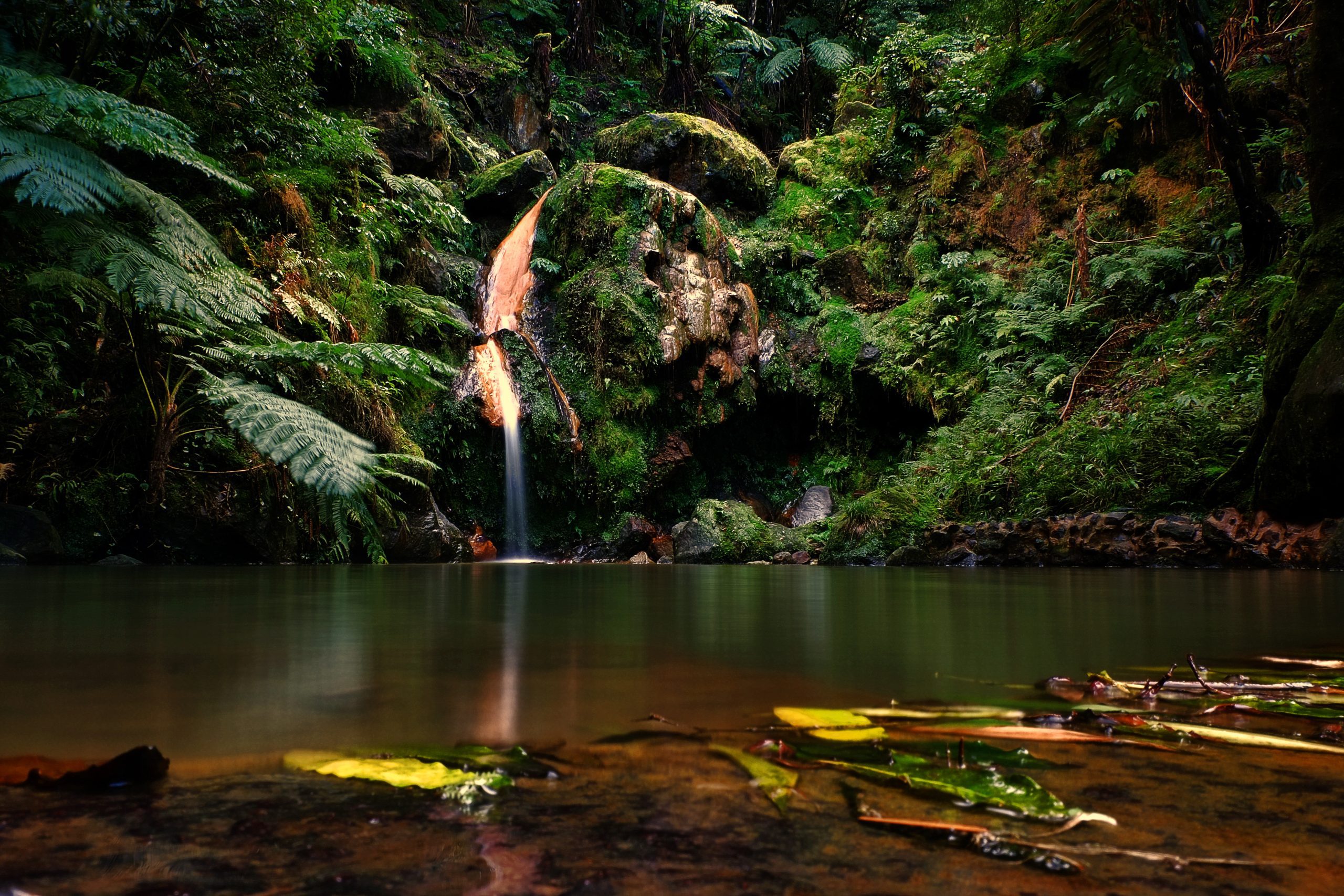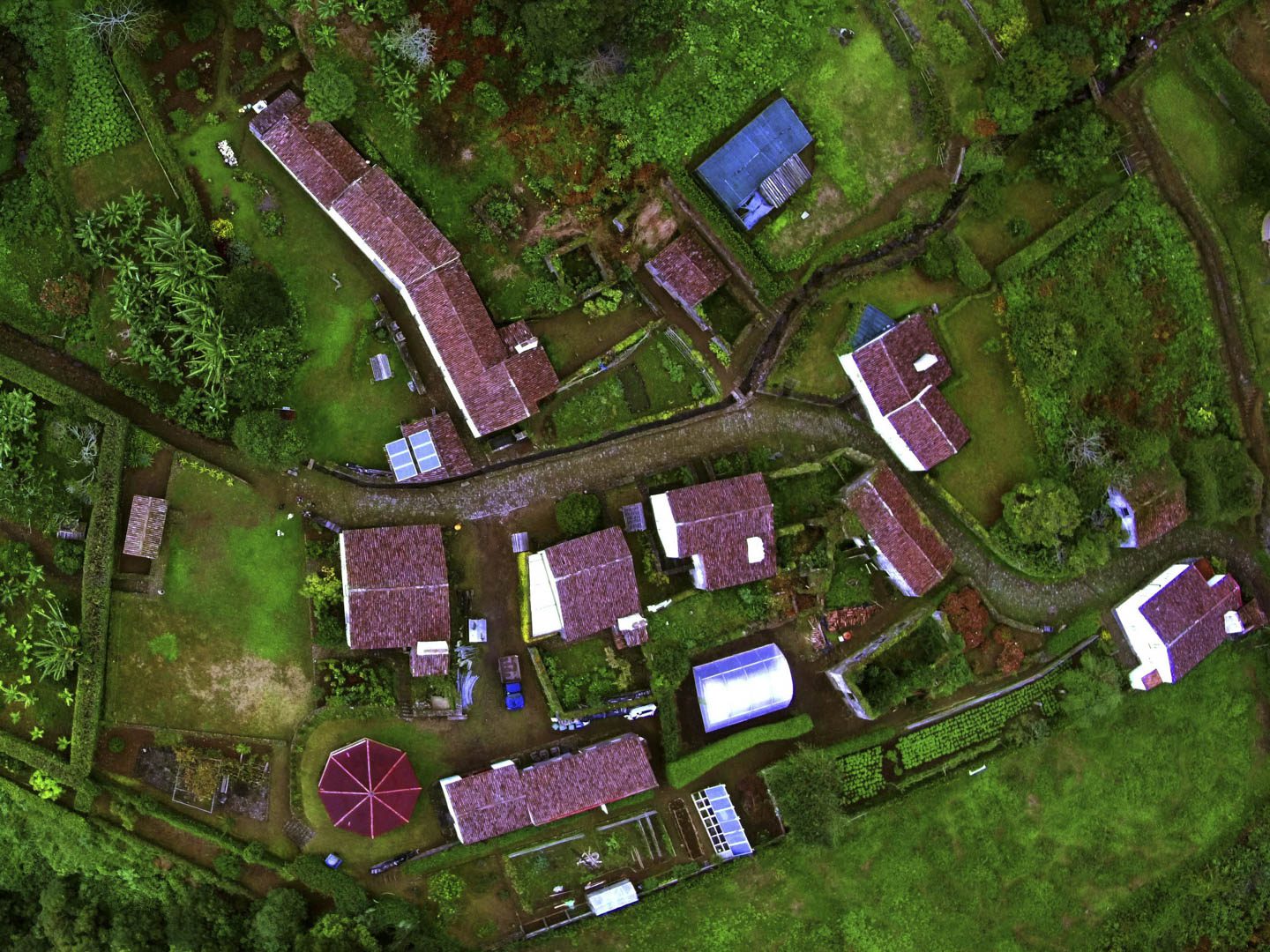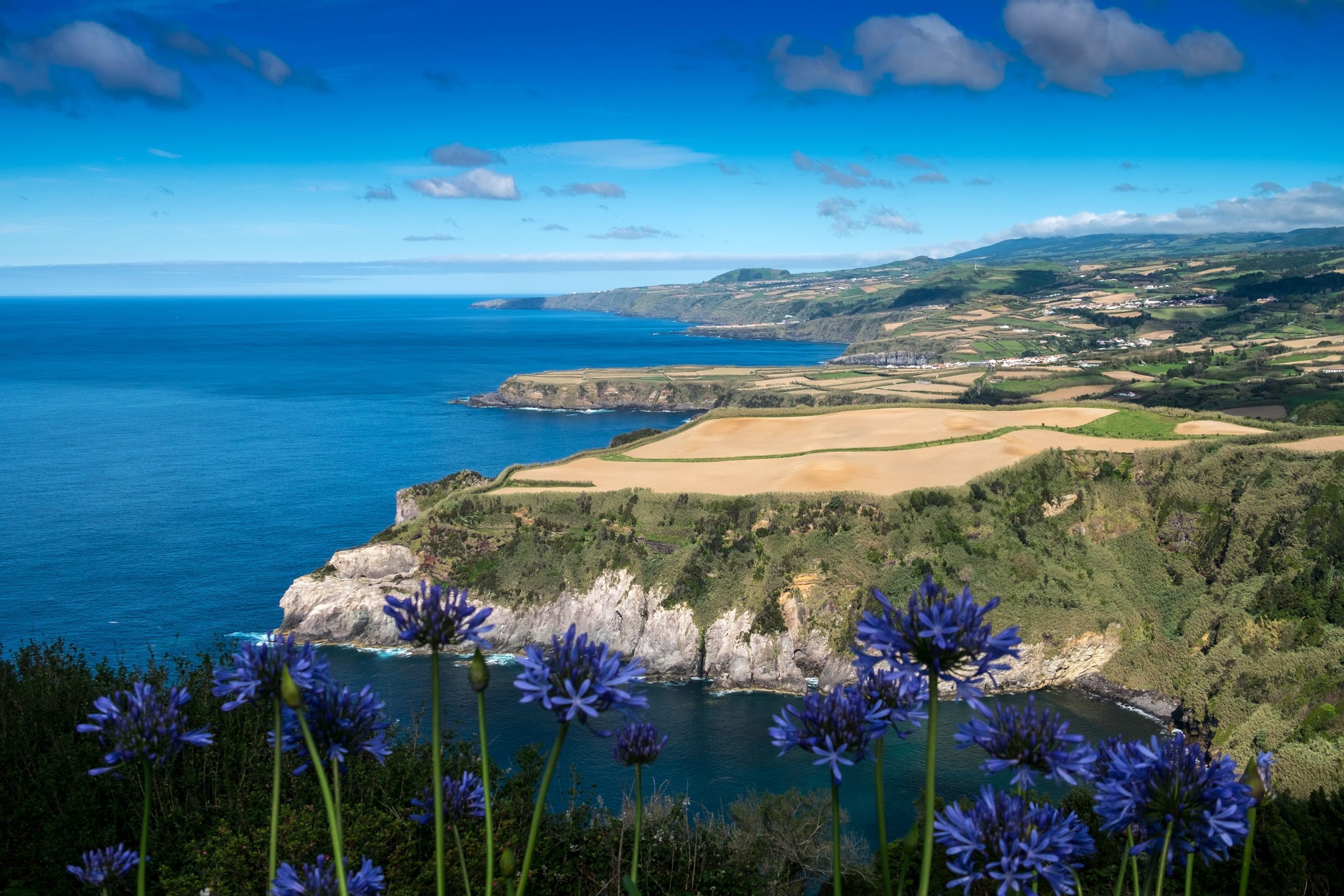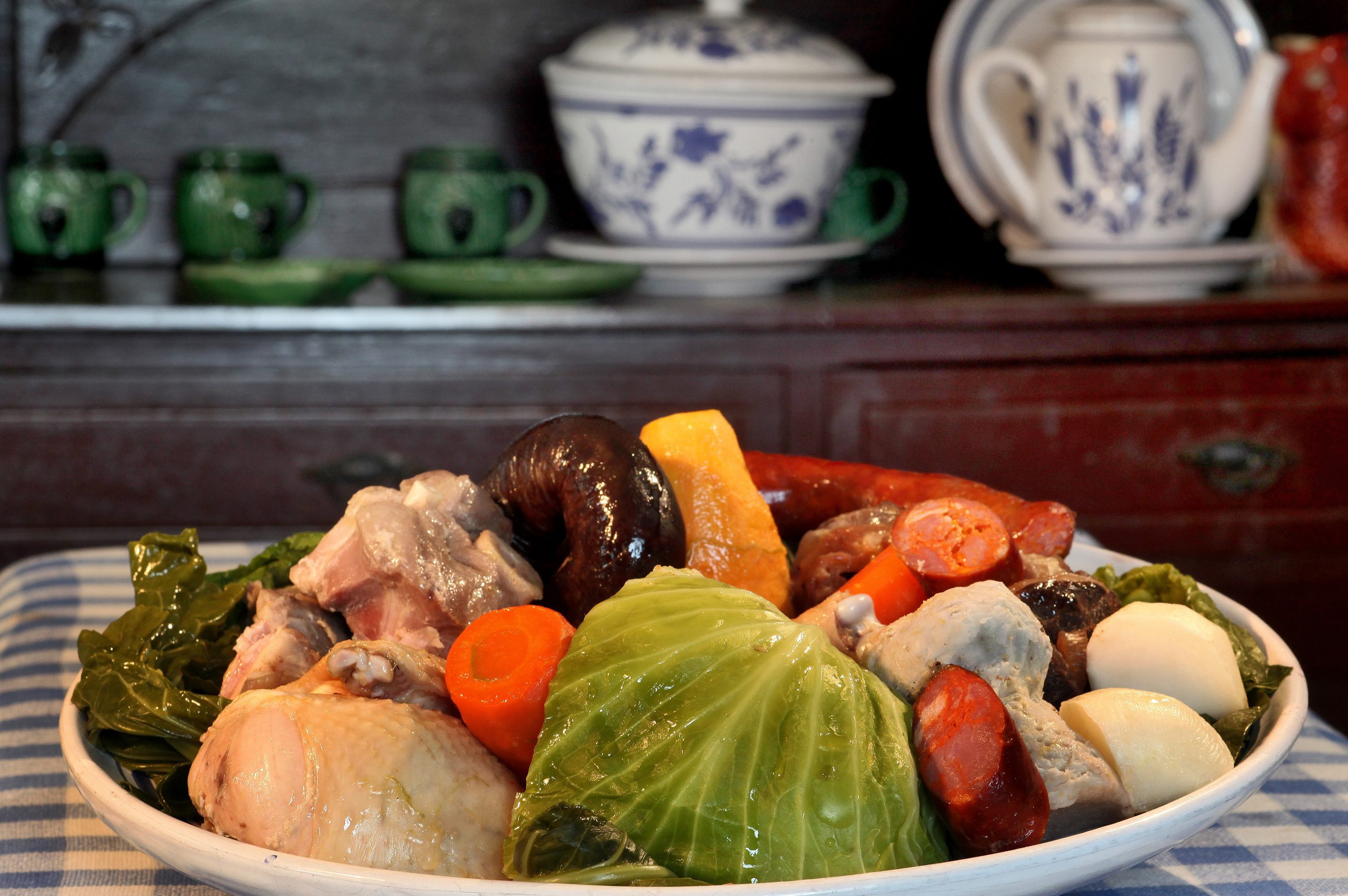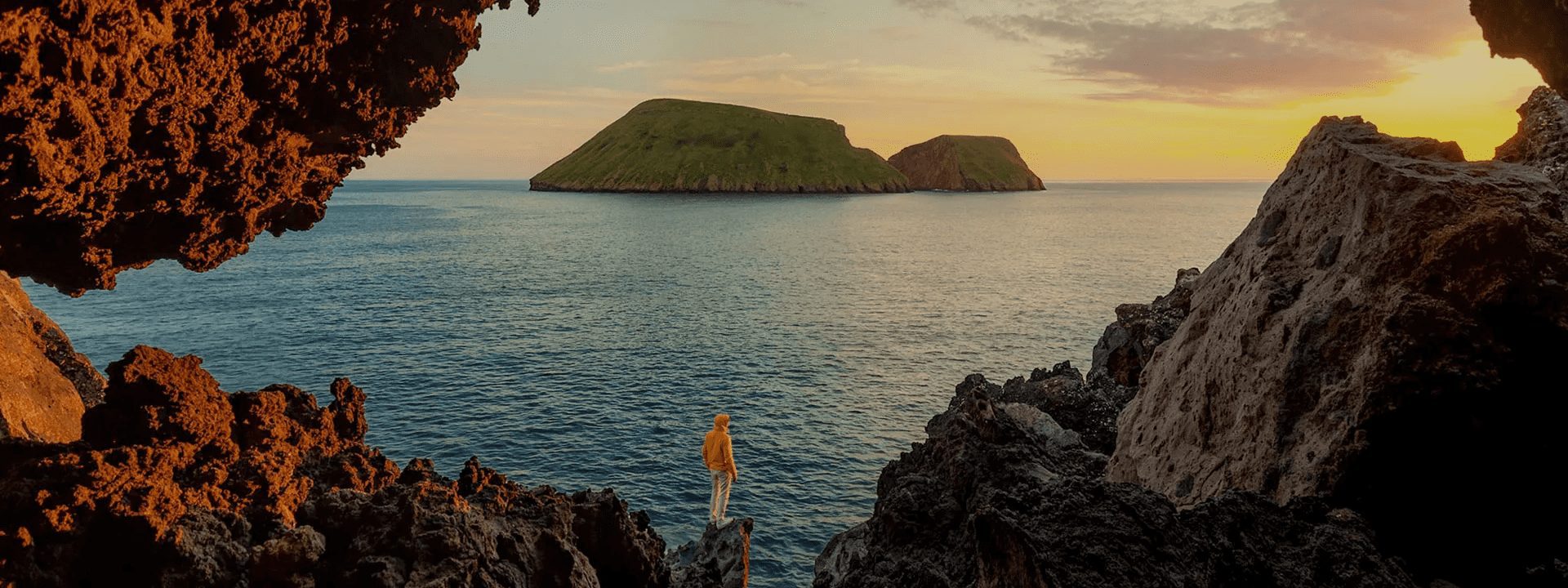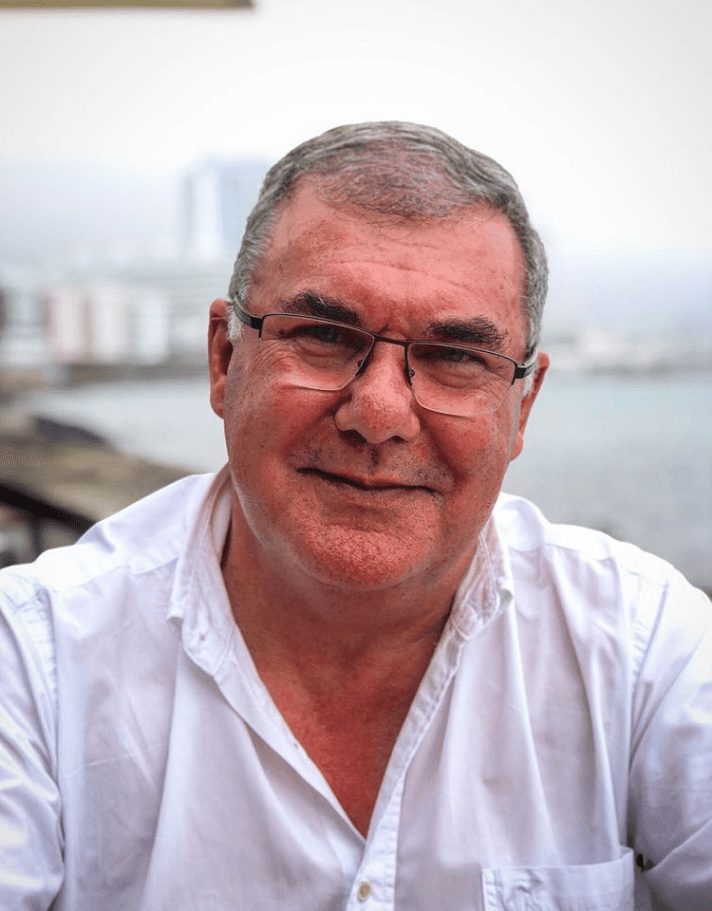Count this village of an unequalled beauty in your itinerary of São Miguel. It has something exceptional, desired in the summer: its islet. It is a subaquatic volcano crater, a nature reserve inaccessible in the winter and a popular heavenly beach in the summer. In addition to this unique bathing area, Vila Franca has innumerable natural attractions worth visiting.
What is Vila Franca do Campo
Vila Franca do Campo is a county and a municipality in the south of São Miguel. It was the first capital of São Miguel Island until Ponta Delgada became the new capital of the island due to unexpected reasons.
Nowadays, people know Vila Franca for its local agricultural and wine production, its typical sweet, and the magnificent islet.
Geology & Volcanology
The islet of Vila Franca do Campo is the result of a subaquatic eruption that created a volcanic cone.
What is today called The Princess Ring, named for its perfectly round shape, was created by the ocean’s erosion and the passage of time.
It had many uses, like a military fort, harbor, whale lookout, and so on, but now it is a nature reserve for birds nesting on its cliffs. In the summer, the natural pool inside the crater is a magical place to be.

History & Geography
The townspeople built the town in the 15th century, not long after they discovered the island. The colonial officials in charge lived there, where sugar cane was the main source of wealth. Furthermore, the name “Franca” was related to the idea of a tax-free village to impulse its development, and things were looking prosperous for the young capital.
Sure! Here is the revised sentence in active voice:
But nature had different plans for the area. On the night of October 22nd, 1522, a maximum intensity earthquake (about X on the European Macroseismic Scale) struck the capital, causing massive landslides and bringing it down to destruction.
As the famous chronist Gaspar Furtuoso said, “There was no gorge or small river, either from the south or northeast, that wasn’t filled with mud and debris”.
As if that were not enough, in 1582, Vila Franca witnessed one of the biggest naval battles in the Azores between Portuguese and Spanish where Portugal lost its independence for 60 years. During this time, the Portuguese executed the defeated at Vila Franca. In 1900, Vila Franca was the first place in Portugal to have public illumination by electric energy and kept developing.
Nowadays, beautiful fields planted with banana trees, which are a household name for Vila Franca do Campo, stand where houses, temples, and palaces once stood.

Culture & Festivities
Many traditions can be related to Vila Franca do Campo:
- Groups of people go through the village on February 2nd, visiting people’s houses, where hosts offer them a drink to gain strength for the singing to stars;
- the emigrant celebration, where the city invites, especially the immigrants on vacation, the public to celebrate the efforts of those who left the island looking for a better life;
- And probably the most iconic of them all, São João da Vila, invites the locals and the whole island to celebrate Saint John’s with typical parades, local food, and the unmissable jumping of the fire. In the old days, youngsters of the village would eventually find the one they would marry.

Fauna & Flora
Being a coastal area and with a very safe natural port for maritime birds – the Islet – some of the most common visitors will be birds: seagulls, terns and the most famous of them all, the Cory Sheer water (the Azores house about 80% of the world population of this bird during its mating time, so it seems we’re a very romantic place for these little fellows!). You will also be able to spot two of our endemic species: the common buzzard and our lovely, tiny and friendly bat!
For the flora, you’ll need to get your boots dirty and get out of the beaten track. You’ll find some excellent exemplars of our local flora, such as the Azorean heather, the azoran laurel, and the local cedar, among many other fascinating species.
What to do at Vila Franca do Campo
The most awesome thing to do in Vila Franca in the summer is to spend a day at the islet. It is located about 1 km away from the coast and a boat goes there every hour, nevertheless don’t wait too long as the number of people allowed per day is limited! But there is more. Below, is a complete list:
Top Places & Activities to Visit at Vila Franca do Campo
The beaches
Vila Franca do Campo is the home to some of the nicest (and secret) beaches on the island! You can visit the Pedreira and Degredo beaches, where you’ll have two amazing sand beaches surrounded by majestic cliffs.
Or you can opt to visit the beach next to the marina and maybe enjoy some aqua park fun!
→ Related Post: Best beaches in the Azores. Read more!

Igreja de São Miguel Arcanjo
The early church of São Miguel Arcanjo was set to be built by Infante Dom Henrique himself, but very little from the original church was left after the 1522 earthquake. Nevertheless, the reconstruction took place upon the remains of the old church and the Gothic style was kept.
Apart from being a beautiful and still used temple, the church has on one of its sides a scar from 1624 when it was hit by a projectile coming from a pirate ship during an attack on the village.
It is one of the few churches on the island dedicated to its patron saint.
Ermida da Senhora da Paz
The Hermitage of Ermida de Nossa Senhora da Paz was built in mid-1522. The 16th-century chapel was later rebuilt in 1764 and often restored over the centuries.
Of great interior and exterior beauty, the hermitage is one of the best-known in the region. Based on the typical Baroque architectural style of the region. The church has a chancel where the main altar is located and two side naves that welcome its faithful in the celebration of the Eucharist.
In 1991, the Chapel of Our Lady of Peace was classified by the Regional Government of the Azores as being a property of public interest.

Castelo Branco
Castelo Branco is a small white tower that nowadays serves as a great viewpoint over the south coast of So Miguel island with Ilhéu de Vila Franca and the Atlantic Ocean. It also looks over the valley of Furnas and its lake. You can go inside the tower and climb onto the rooftop for a wonderful view. It is a mandatory stop when you are going to the geothermal paradise of Furnas.

Ilhéu de Vila Franca do Campo

The Vila Franca do Campo islet is a nature reserve for birds in the winter and one of the most epic beaches you can go to on São Miguel island in the summer.
🐳 Recommended Tour Whale Watching and Explore the Vila Franca Islet
It is an old submarine volcano with crystal-clear waters in its crater, where you can swim and snorkel. This wonder of nature is open only from June to October for preservation purposes.
It is undoubtedly one of the top 10 best beaches in the Azores. From June to October, a traditional fishing boat takes you there in 10 minutes from the town’s harbor.
Explore Lagoa do Congro
Nestled inside a lush forest in the middle of São Miguel, Lagoa do Congro is less famous. Other lakes on the island are more well-known. Even though the access is harder, it is completely worth the trip!
Once you arrive at the lake, the all-green scenery immerses you, and you enter a real-life fairy tale. The peaceful silence and pure nature give Lagoa do Congro a unique beauty. In this post, discover everything about Lagoa do Congro, from its history to the best travel tips. We will also see how to get to this wonderful place with great landscapes for photography enthusiasts.

Miradouro da Nossa Senhora da Paz
The Viewpoint of the Ermida de Nossa Senhora da Paz is situated at the top of the Mount of Our Lady of Peace. With a breathtaking view over the Islet of Vila Franca do Campo and the Atlantic Ocean. After climbing the extensive staircase to reach the top of the hermitage, your view is rewarding.
Located at 215 meters of altitude, this viewpoint is a must-stop for those who are traveling on the magnificent island of São Miguel. The landscape from the top of The Mount of Our Lady of Peace is a must and transmits peace and tranquility. The indescribable view is marked by the contrast between the white houses — typical dwellings of the region, and the lush green of the meadows.

Praia de Água D’Alto
This popular beach is one of the favorite spots for locals on a perfect summer day. At the picnic areas not too far on the road that goes up before the beach, Azorean families share meals, admire the view from Pisão viewpoint and go down to the beach after lunch.

Quatro Fábricas da Luz Hiking Trail
Trails are abundant around Vila Franca. Quatro fábricas da Luz, for instance, is a wonderful track allying nature with history. Indeed, aside from the incredible scenery of waterfalls, rivers, and forests, there are ruins of hydropower plants on the way which were once essential for the electricity distribution on the island.

After visiting Vila Franca do Campo (nearby places)
Furnas

This is one of the biggest hydropolis in Europe. It combines a considerable diversity of thermal spring waters and boiling water spots. You’ll also be invited to drink these volcanic waters. It was an extraordinary experience!
The valley of Furnas is situated inside a huge volcanic crater, one of the most active on the island. Due to its unlimited beauty, Furnas’s main wealth sources are agriculture and tourism.
This quiet place is well known by travelers and locals who choose to visit for the weekend or holidays.
Points of interest in Furnas
- Caldeiras das Furnas;
- Capela da Nossa Senhora das Vitórias;
- Casa dos Barcos and Casa da Lagoa;
- Castelo Branco’s viewpoint;
- Furnas Monitoring and Research Centre;
- Lagoa das Furnas;
- Mata-Jardim José do Canto;
- Microbial Observatory of the Azores;
- Salto do Cavalo viewpoint;
- Parque da Grená;
- Terra Nostra Botanical Garden;
- Parque Terra Nostra Iron-rich Thermal Pools;
- Pico do Ferro viewpoint;
- Poça da Dona Beija;
- Poça da Tia Silvina “Lava-pés”;
- Ribeira Quente beach;
- Salto do Rosal;
- Salto do Cavalo viewpoint;
- Vila das Furnas.
Lagoa

Lagoa is where nature meets urban life and creates the perfect balance. A few minutes away from the town, hidden trails abound with waterfalls, mystical volcanic lakes, and idyllic beaches. Culture and history seekers will also be satisfied thanks to various museums and traditional events.
Points of interest in Lagoa
- Núcleo Museológico do Cabouco
- Caloura
- Água de Pau
- Casa do Pescador
- Cerâmica Vieira
- Igreja de Nossa Senhora do Rosário
- Igreja de Santa Cruz
- Expolab
- Piscinas da Lagoa
- Observatório Vulcanológico e Geotérmico dos Açores
Lagoa do Fogo

Lagoa do Fogo is located in the crater of a dormant volcano that formed about 15,000 years ago. It offers exceptional natural beauty and breathtaking landscapes. This awe-inspiring turquoise lake is a pure testimony to nature’s pace. Many stories can be told, and yours might start here.
This least humanized and preserved area even has a pumice beach on the lagoon margins, which was awarded the best wild beach in Portugal in the “7 Wonders—Beaches of Portugal Contest”. From the central part of São Miguel island was born the Serra da Água de Pau Volcanic Massif, where Lagoa do Fogo is nested. It is of great value in landscapes and untouched, pure nature.
Located between Ribeira Grande and the city of Lagoa, this volcanic lake looks like a postcard from paradise. The green of the volcanic walls filled with lush vegetation contrasts with the clear blue water of the lake, undoubtedly making it one of the most beautiful places in the Azores. This is one of the main tourist highlights of São Miguel, but there are still some secrets inside to be unveiled in this post. Follow this complete guide of all you need to know about Lagoa do Fogo.
Points of interest in Lagoa do Fogo
Maia

Peacefulness and the smell of the ocean mix in the town of Maia. It is a quiet coastal village on top of an old lava flow with luxuriant nature and a rich culture and history. Maia is far away from tourist crowds and camera flashes. Discover a place locals know how to appreciate.
Points of interest in Maia
- Calhau da Maia
- Fábrica de Chá Gorreana
- Moinhos da Ribeira Funda
- Museu do Tabaco
- Piscinas Naturais da Maia
- Praia da Viola
Ponta Delgada
The Ponta Delgada city is officially one of the best counties in Portugal to live in. The modern city is the biggest and most populated of the Azores. There, the ocean breeze, mountain views and delicious local food are part of everyday life. Despite being an energetic city, there is no rush in Ponta Delgada, nor annoying traffic jams.

In the beginning, Ponta Delgada was only a small fishing village. But quickly, thanks to its safe bays, it became the most important harbor for trades on the island. Ponta Delgada was declared a city in 1546 and considered as the capital of the island. This happened after the first capital – Vila Franca do Campo – was destroyed in 1522 by a terrible earthquake. Nowadays, Ponta Delgada with its almost 70,000 inhabitants is a cosmopolitan city attracting visitors from all over the world.
Points of interest in Ponta Delgada
- Carlos Machado Museum
- Igreja de Todos os Santos, Portas da Cidade
- Forte de São Brás
- Gruta do Carvão
- Jardim José do Canto
- Jardim António Borges
- Mercado da Graça / Farmers Market
- Parque Atlântico
- Pineapple Plantations
- Piscina do “Pesqueiro”
- Portas do Mar
- Praia das Milícias
- Biblioteca Pública e Arquivo Regional
- Rocha da Relva
- Santuário da Esperança
- Sinagoga
Ribeira Grande

Ribeira Grande, the surf capital, is a beautiful coastal city on the North coast of São Miguel island. It is also the second-biggest city on the island after Ponta Delgada. The city’s treasures include several churches, beautiful squares where locals and tourists meet, a farmers’ market, a river, and an interesting Azorean Emigration Museum.
Points of interest in Ribeira Grande
- Caldeiras da Ribeira Grande
- Moinhos da Ribeira Funda hiking trail
- Pico da Barrosa
- Ponta do Cintrão
- Porto de Santa Iria
- Fábrica de Chá de Porto Formoso
- Praia do Areal de Santa Barbara
- Praia do Monte Verde
- Praia dos Moinhos
- Rabo de Peixe
- Miradouro de Santa Iria
- Salto do Cabrito
- São Brás
Conclusion
Vila Franca do Campo is a destination that perfectly encapsulates the natural beauty, historical richness, and cultural vibrancy of São Miguel Island. With its unique islet, a former submarine volcano is now a haven for summer visitors, and an array of other attractions, from serene beaches and historical churches to lush hiking trails and scenic viewpoints. Vila Franca offers a diverse array of experiences.
Whether you are exploring its volcanic origins, partaking in local festivities, or simply relaxing in its idyllic natural settings, Vila Franca do Campo promises an unforgettable journey. Adding this charming village to your itinerary ensures a comprehensive and enriching exploration of the Azores’ stunning landscapes and rich heritage.

